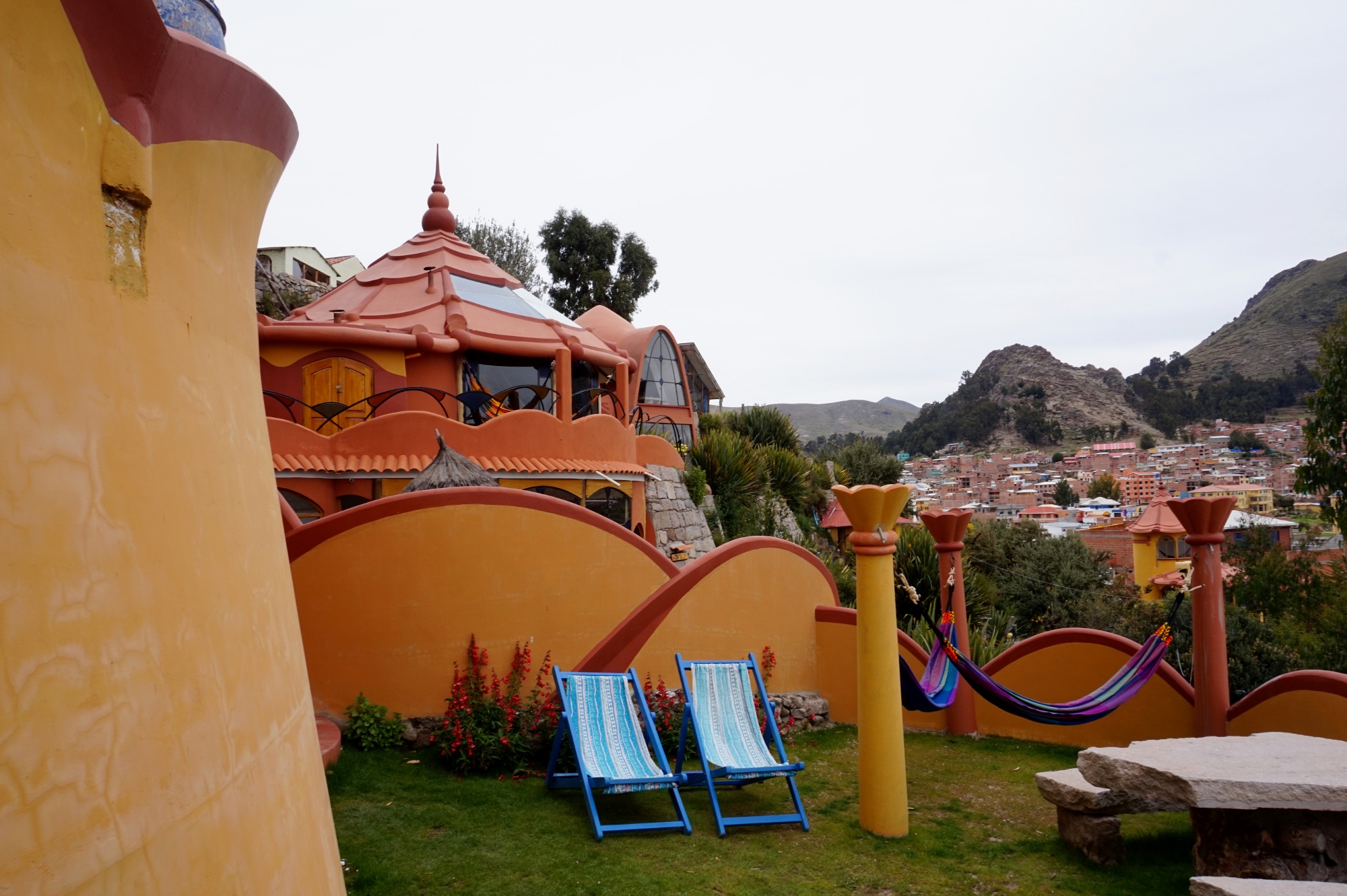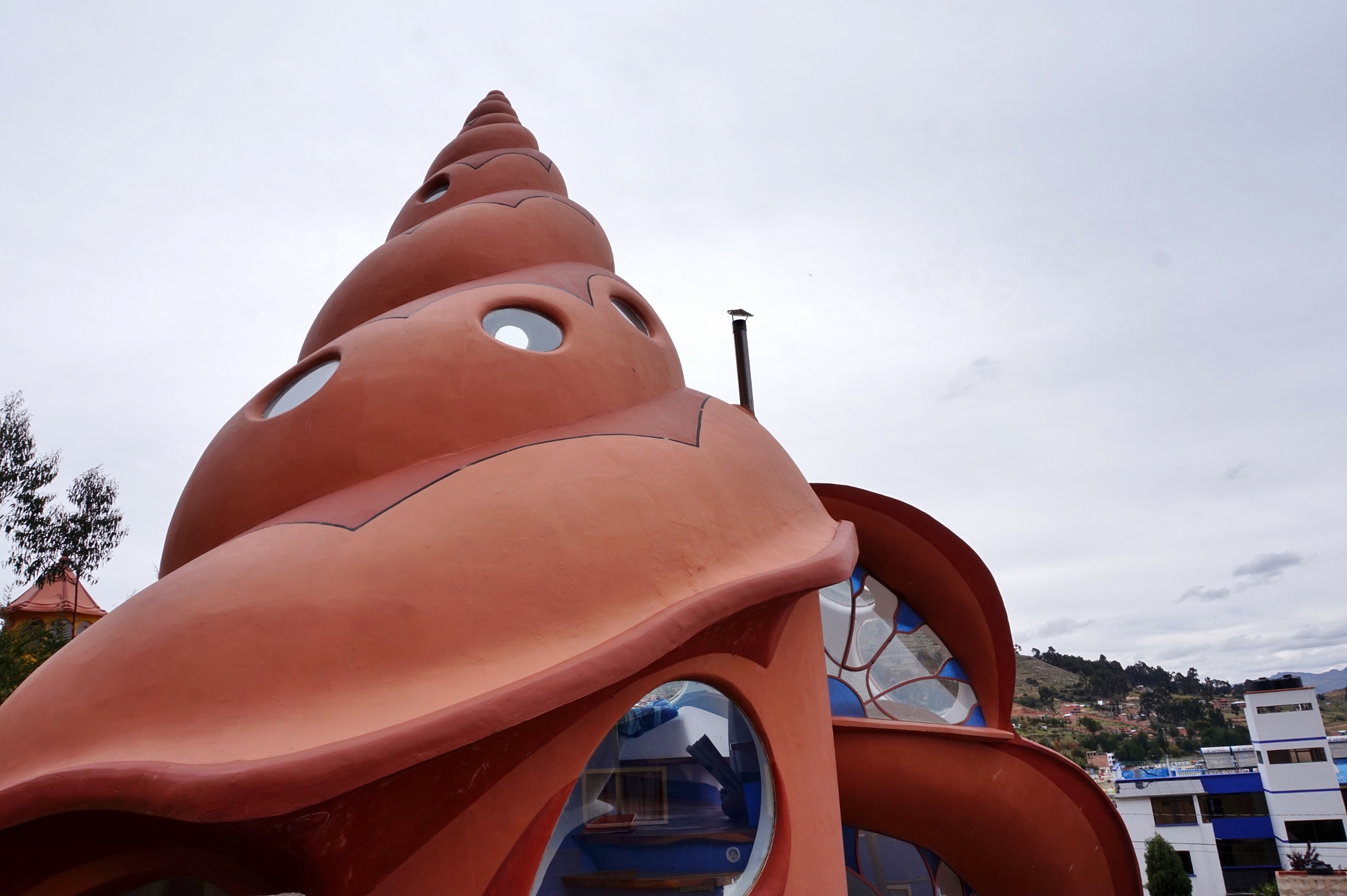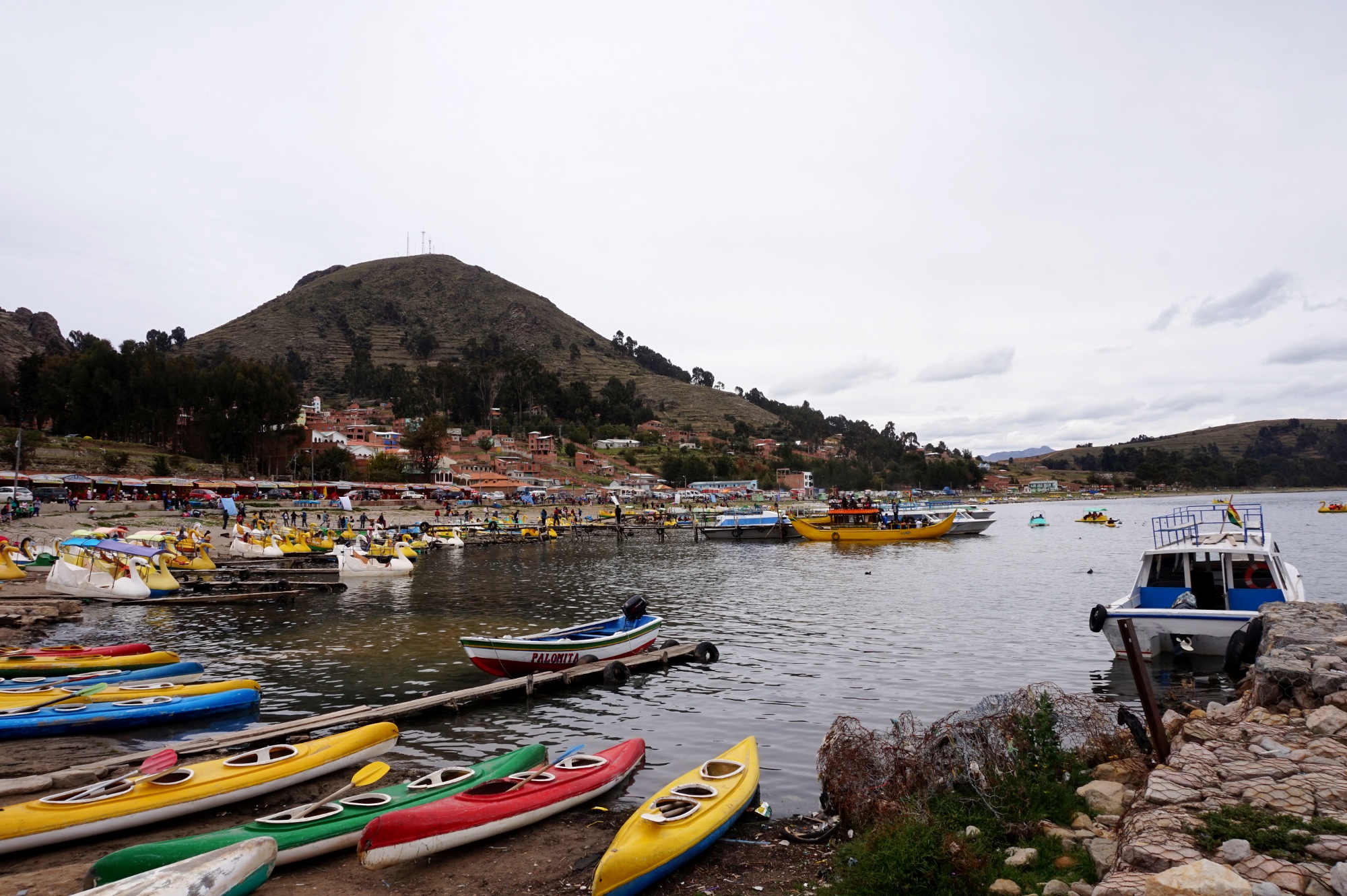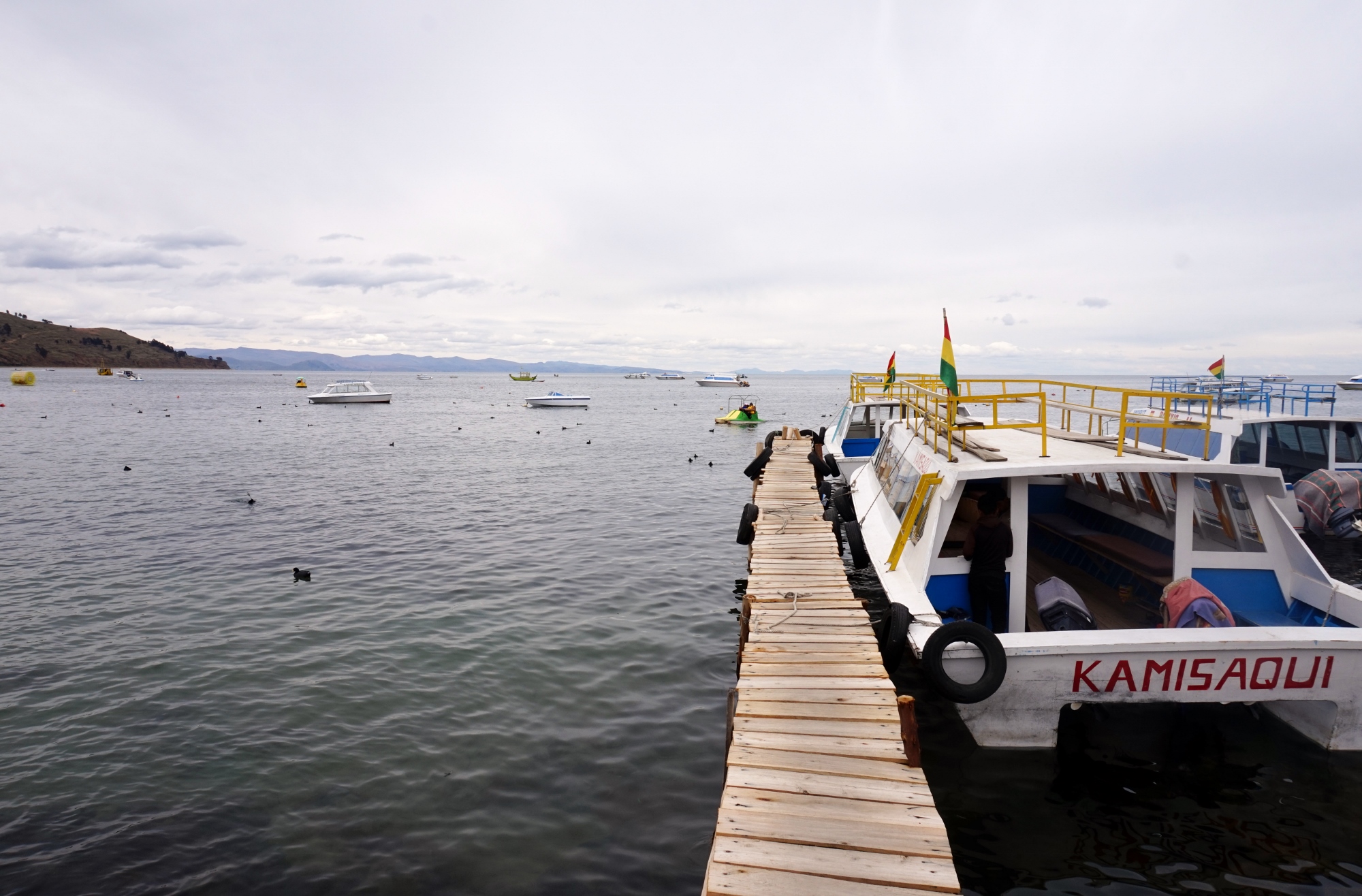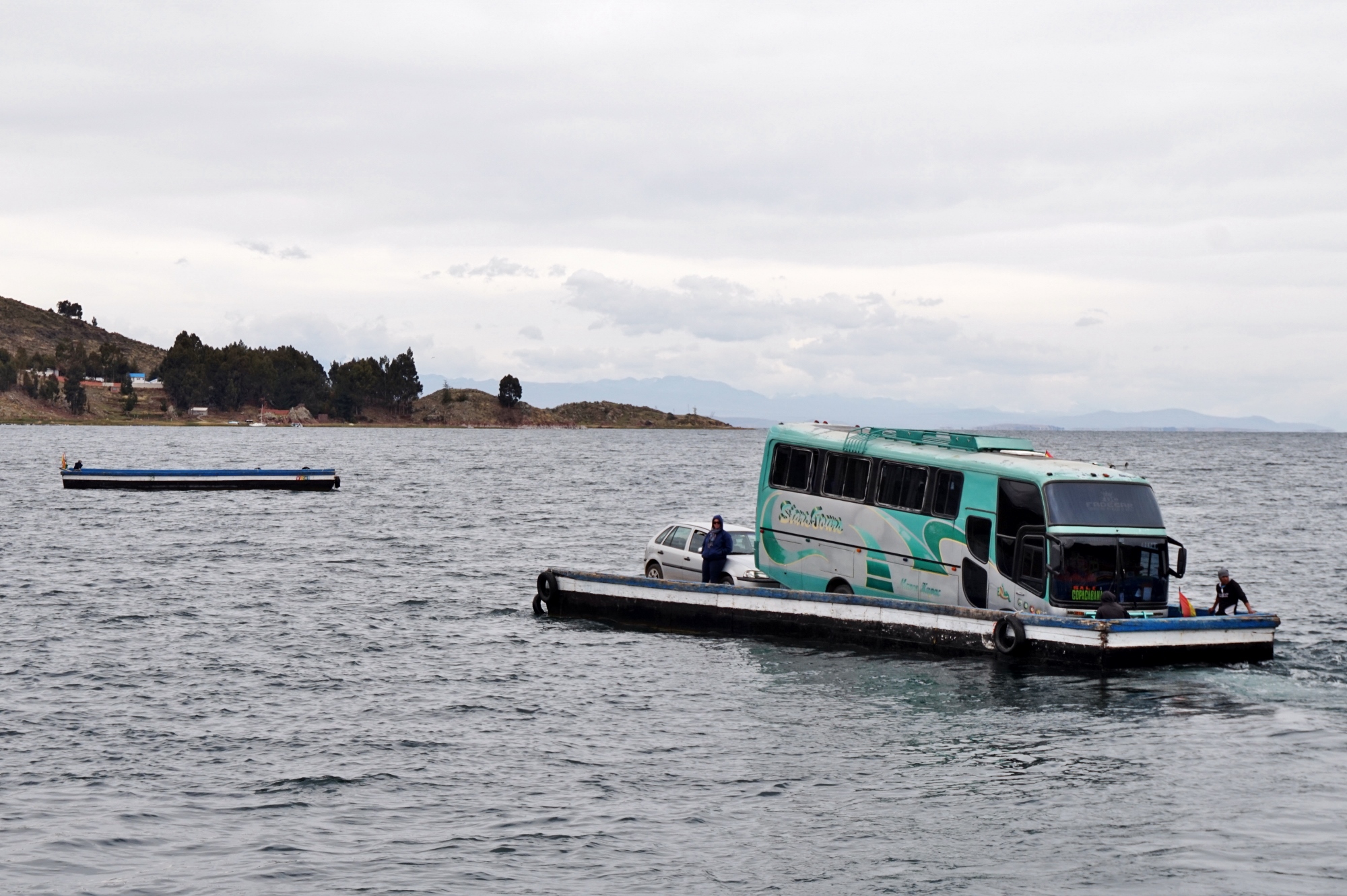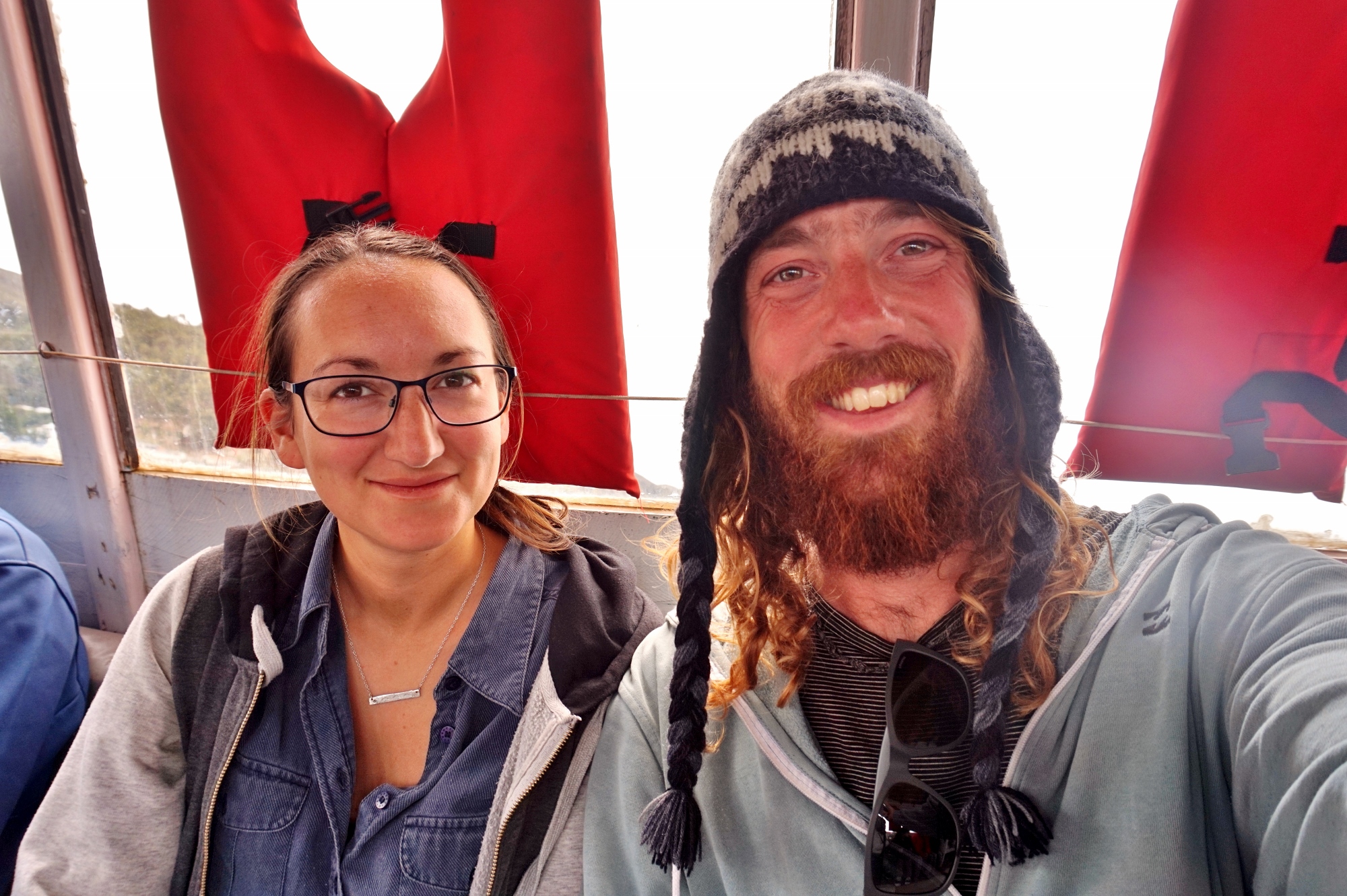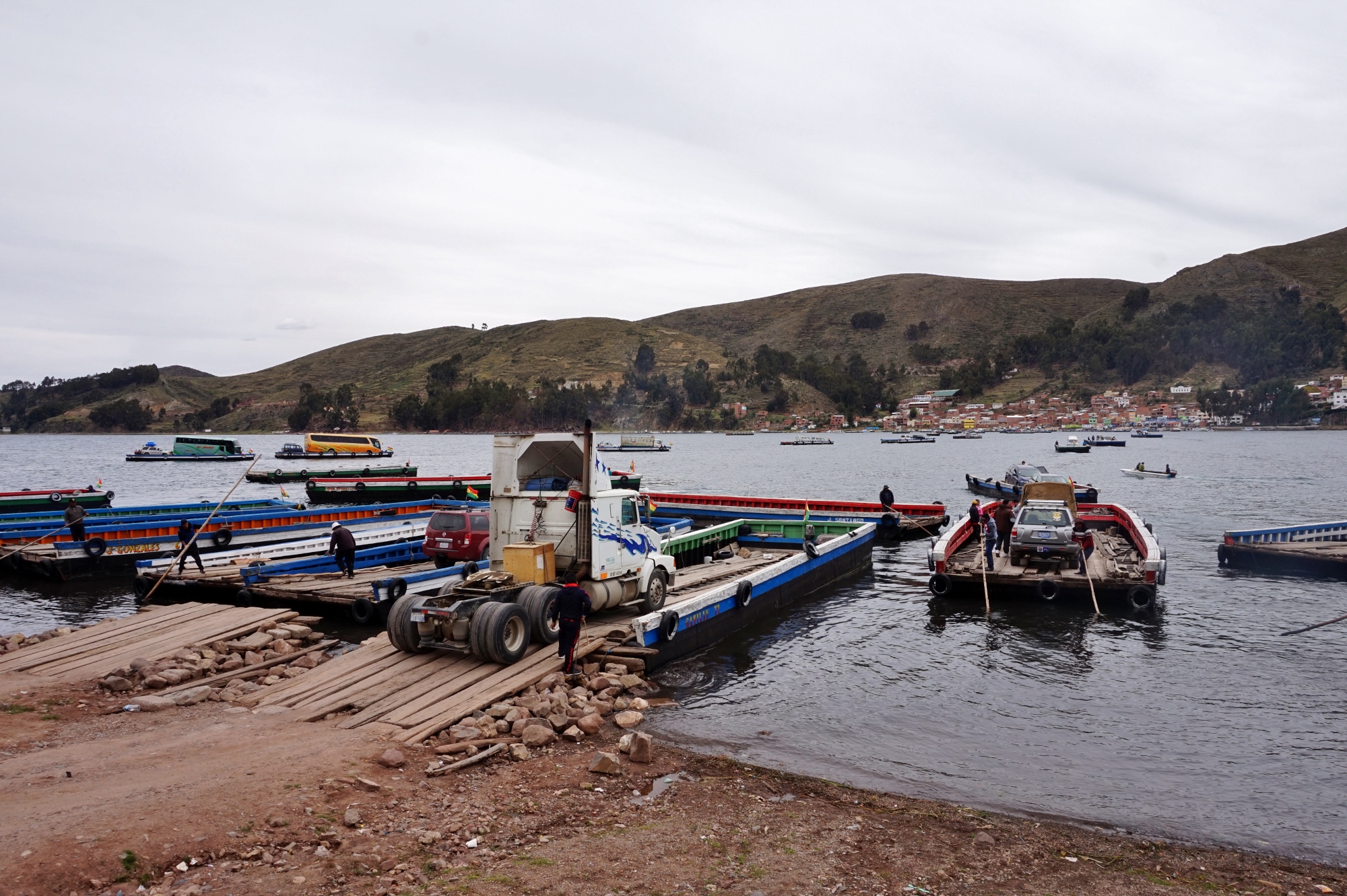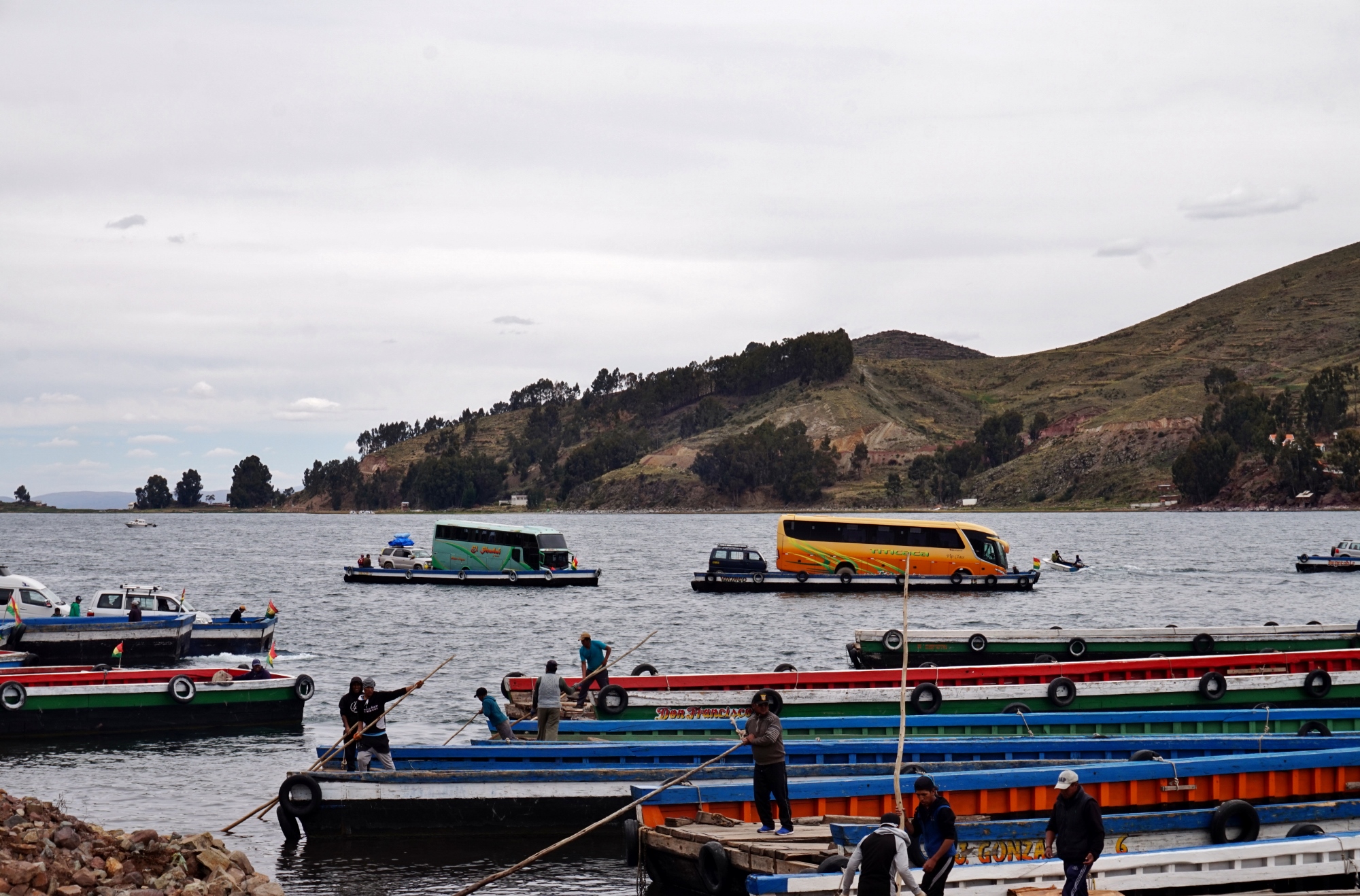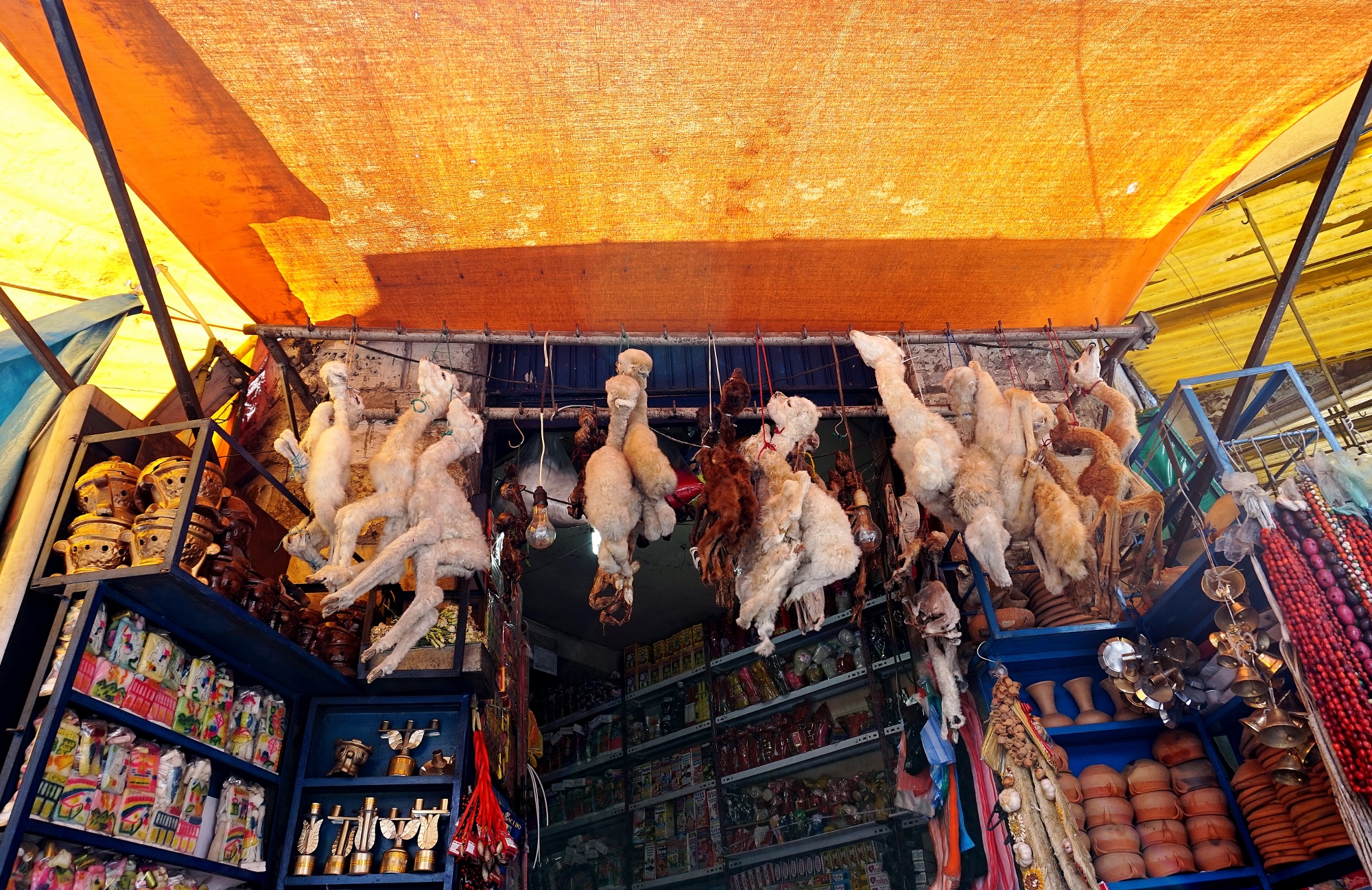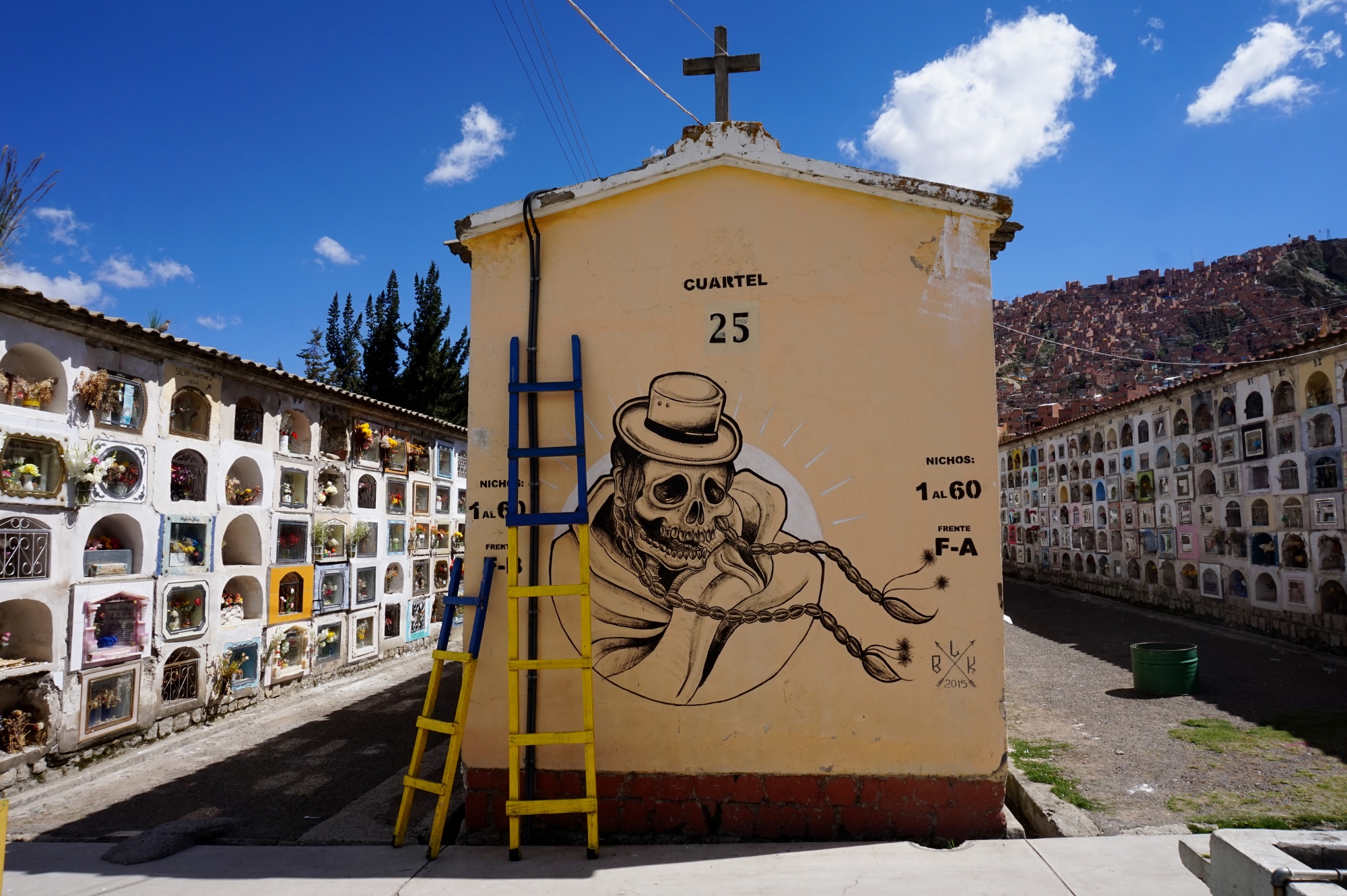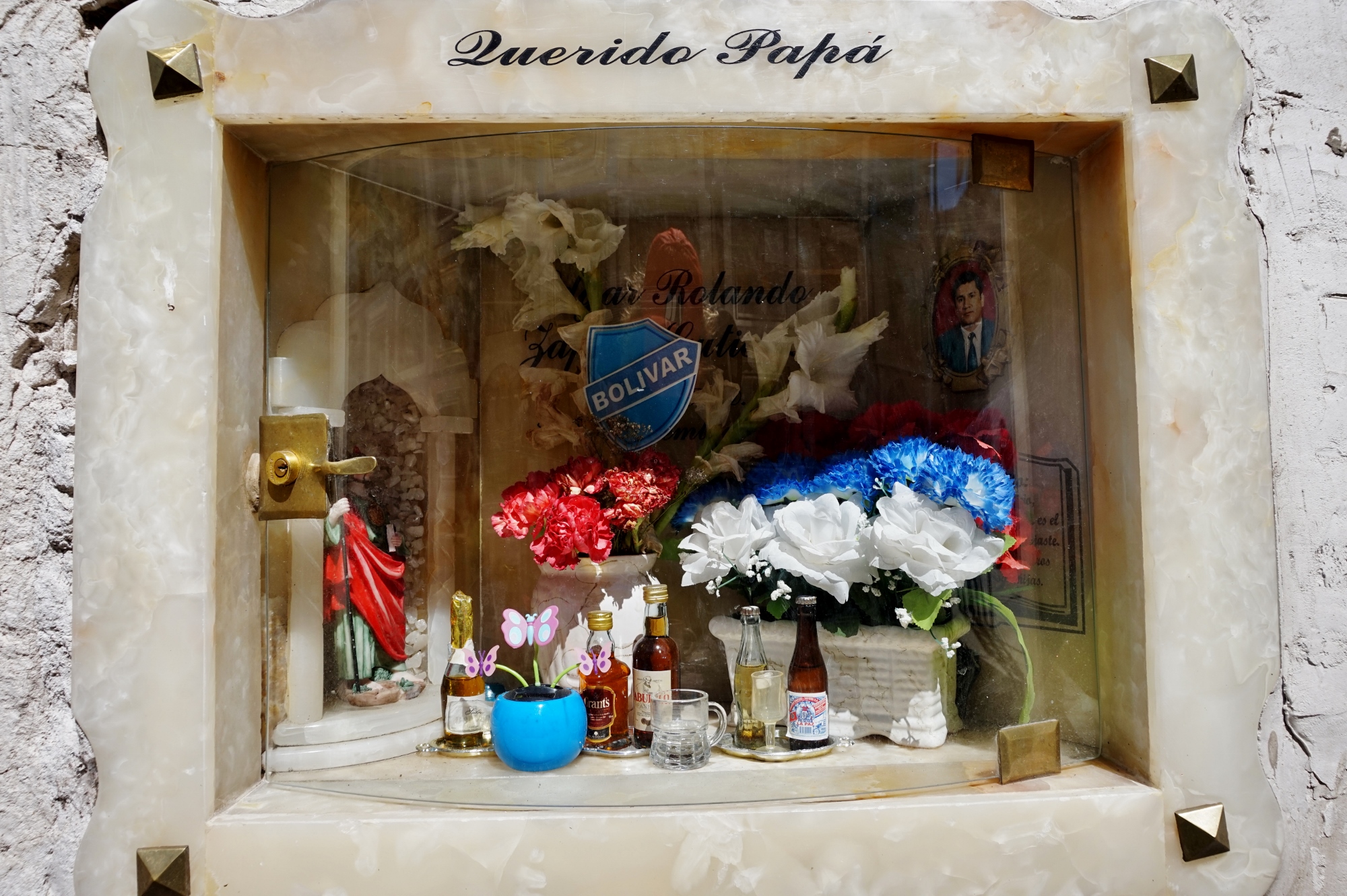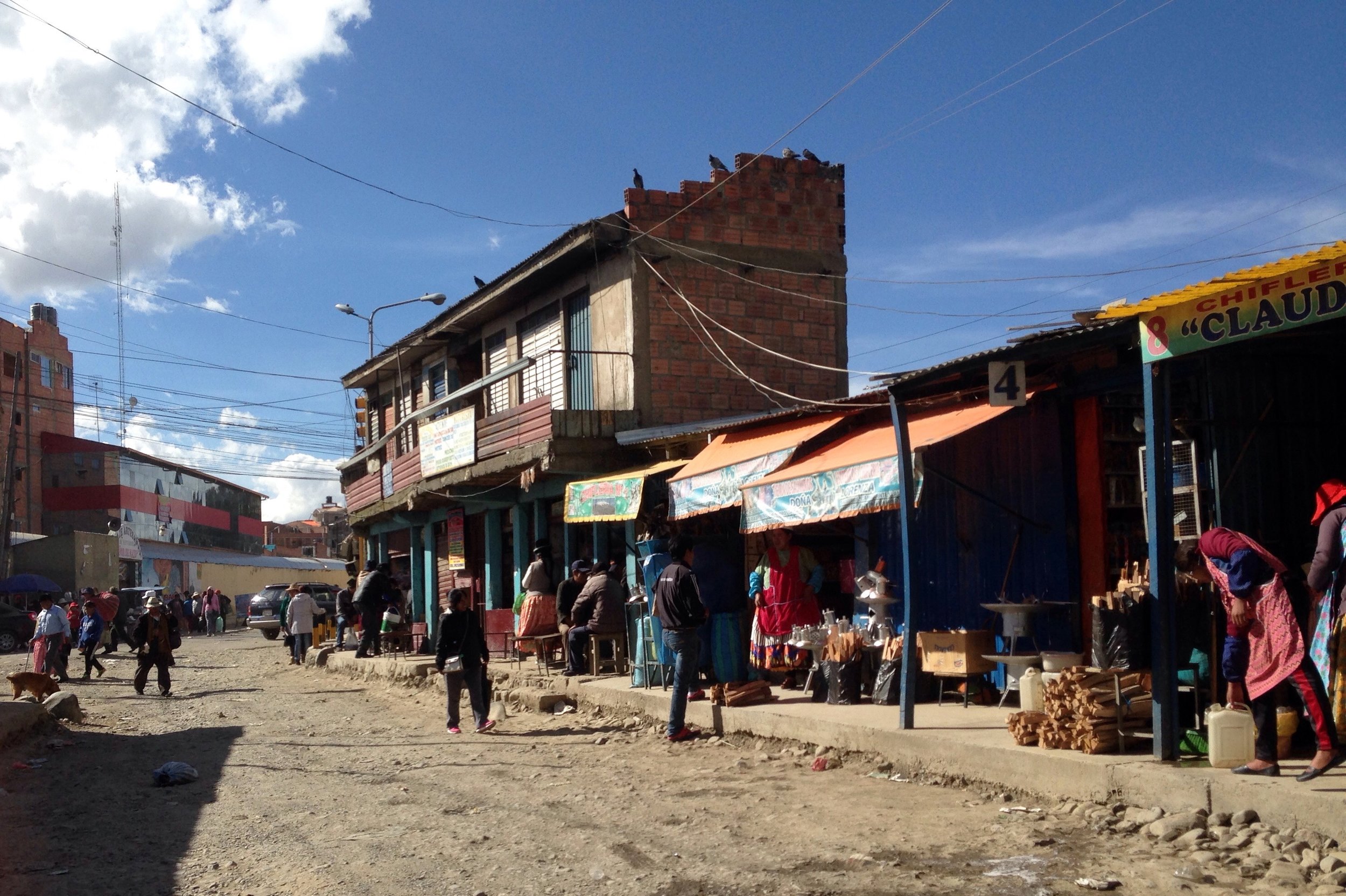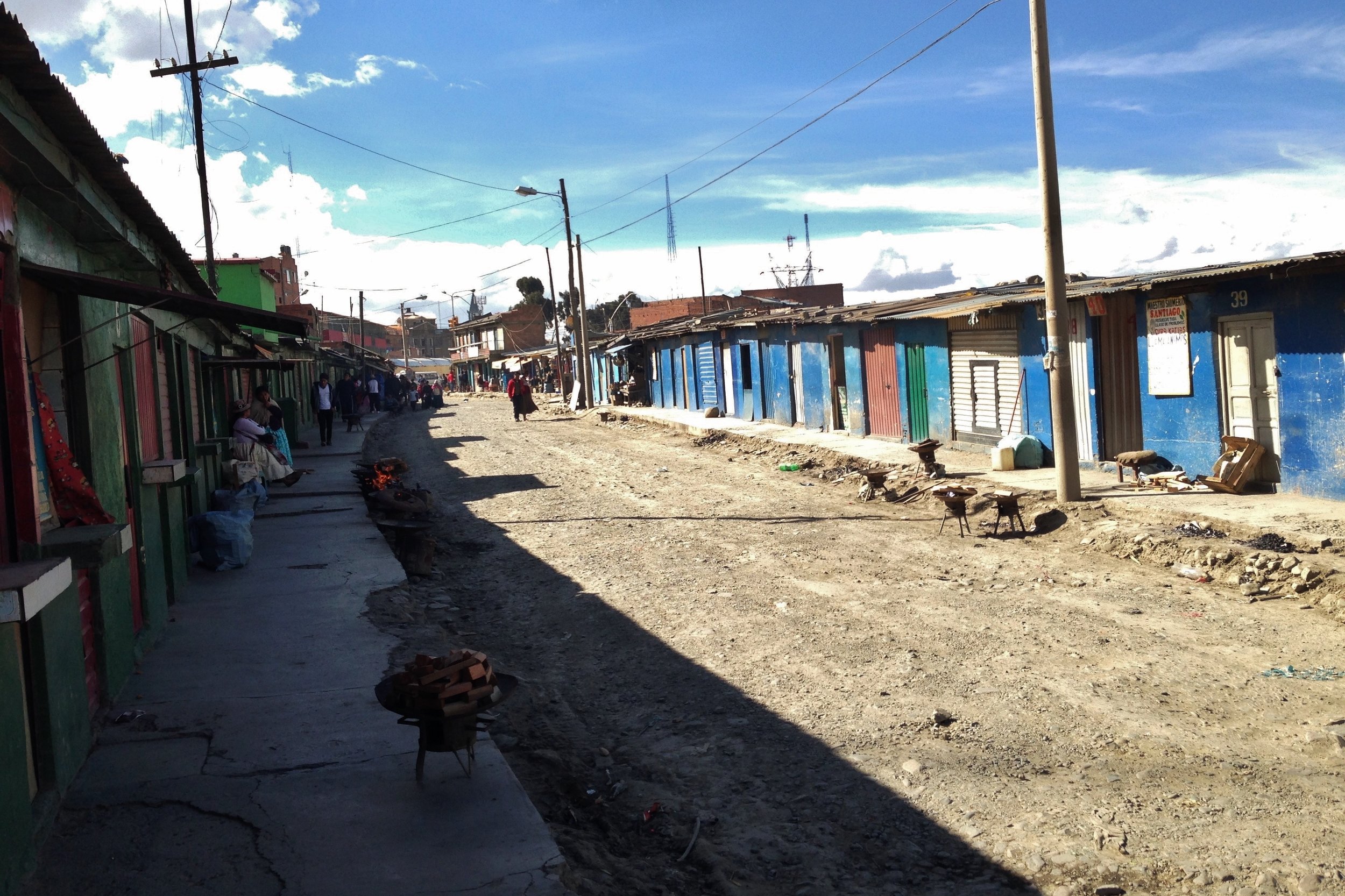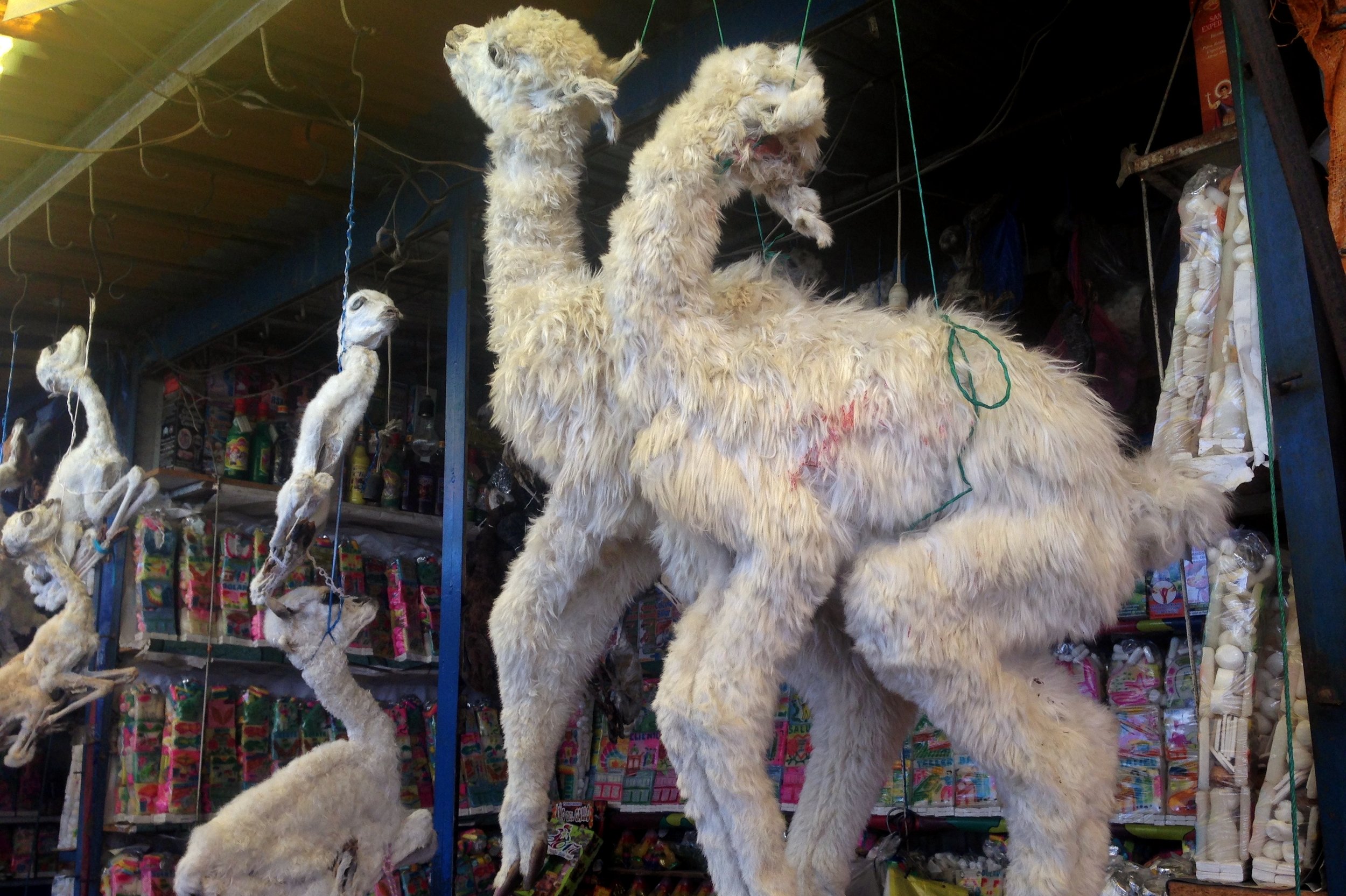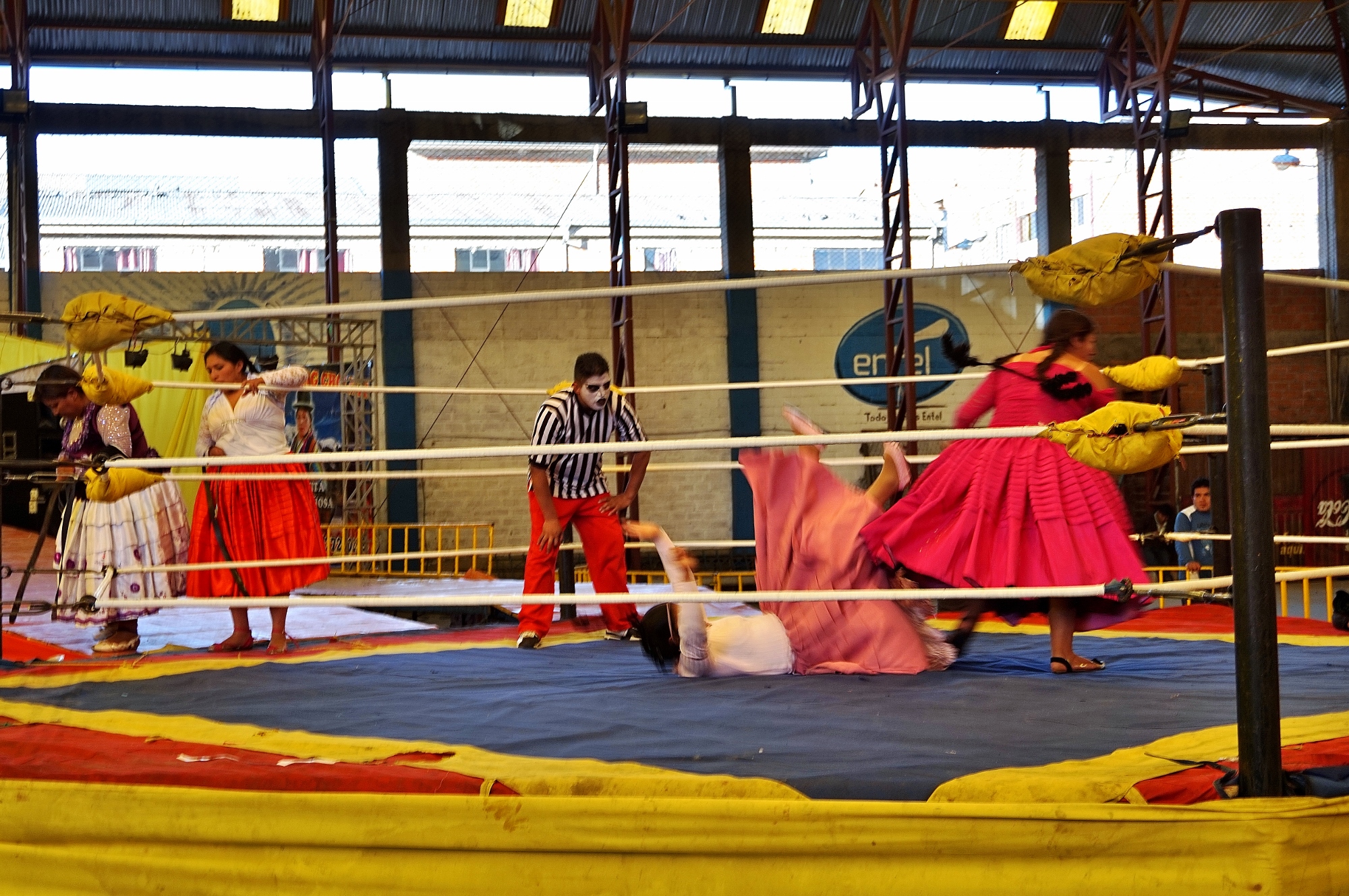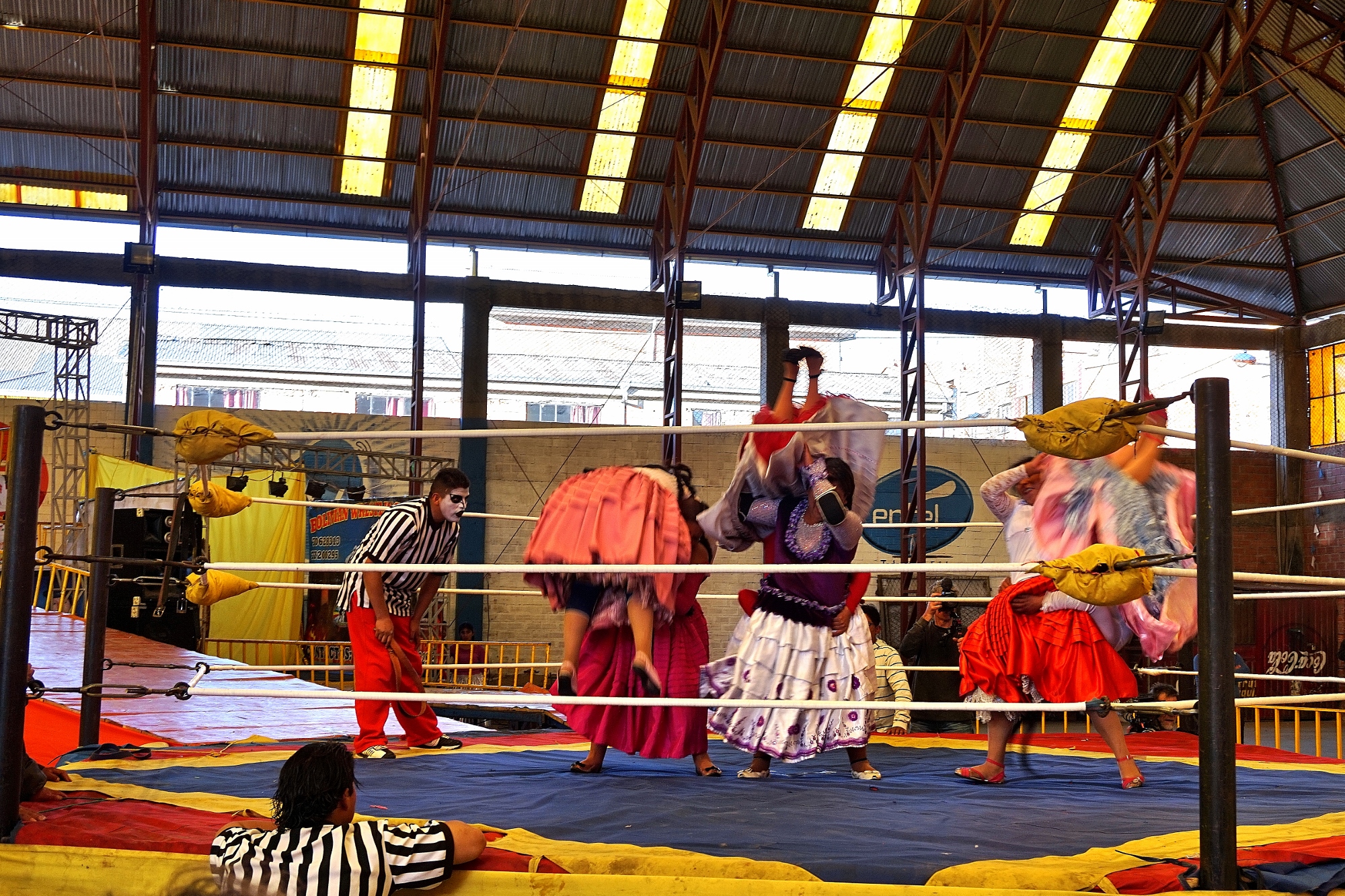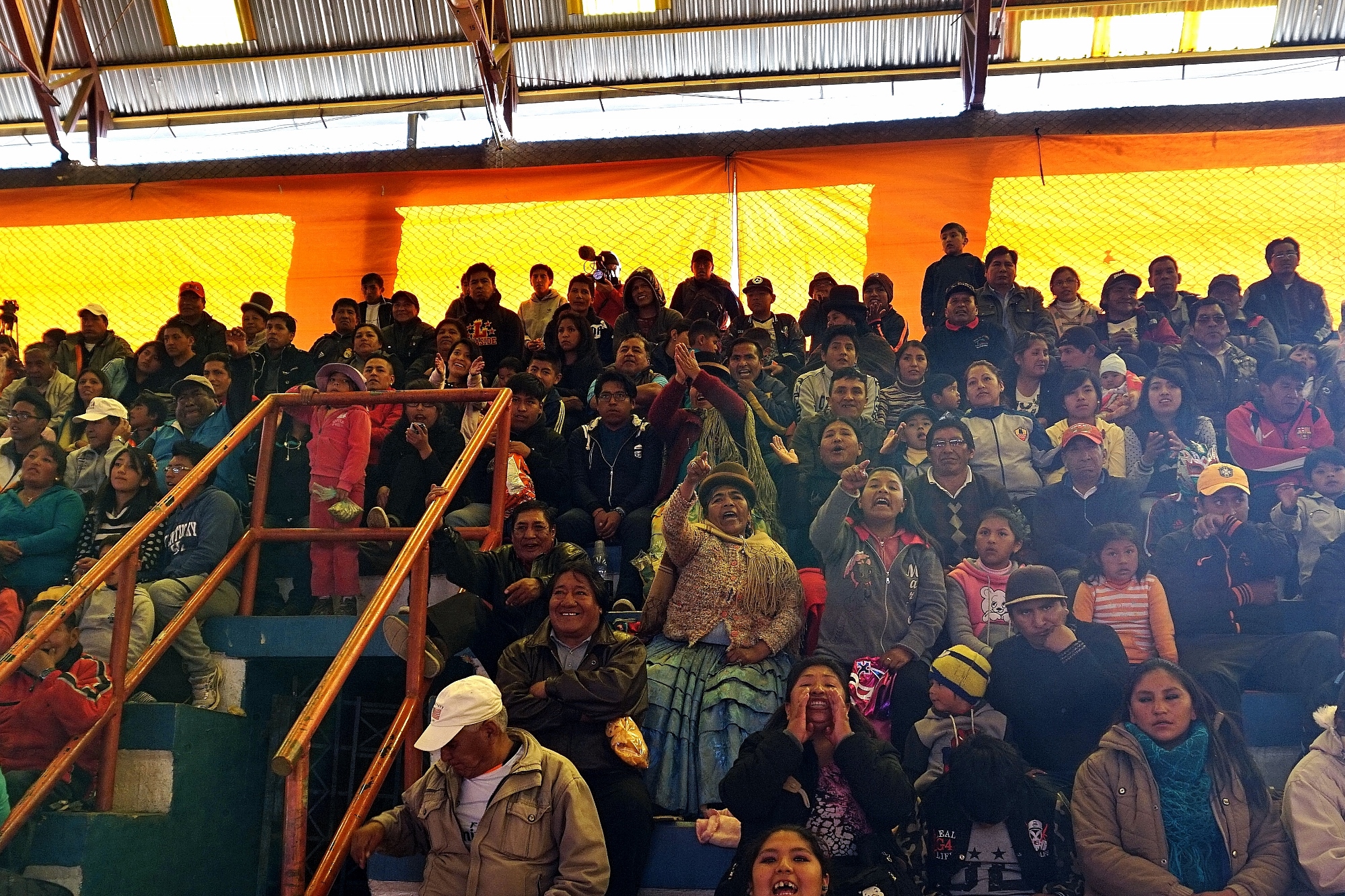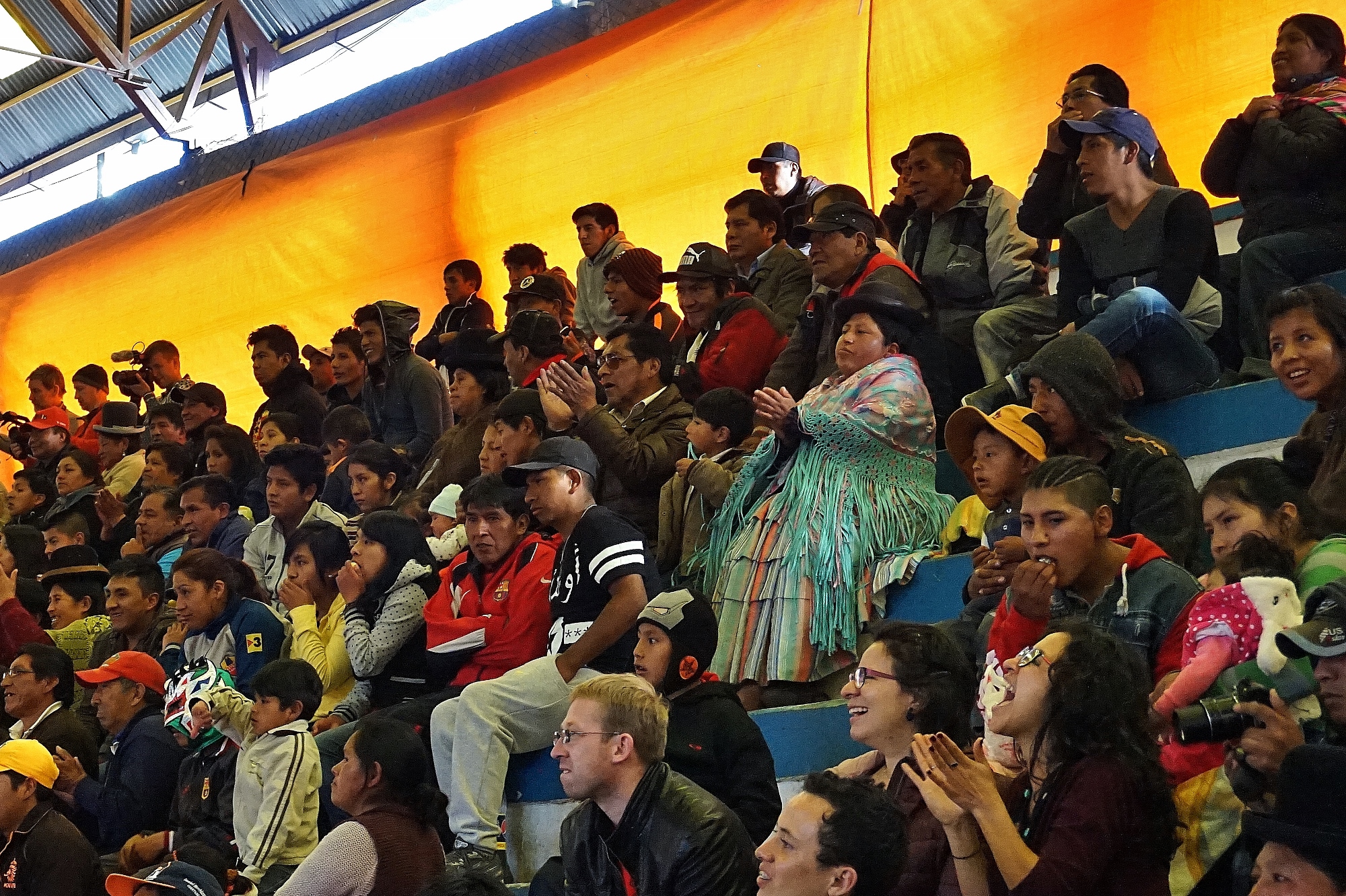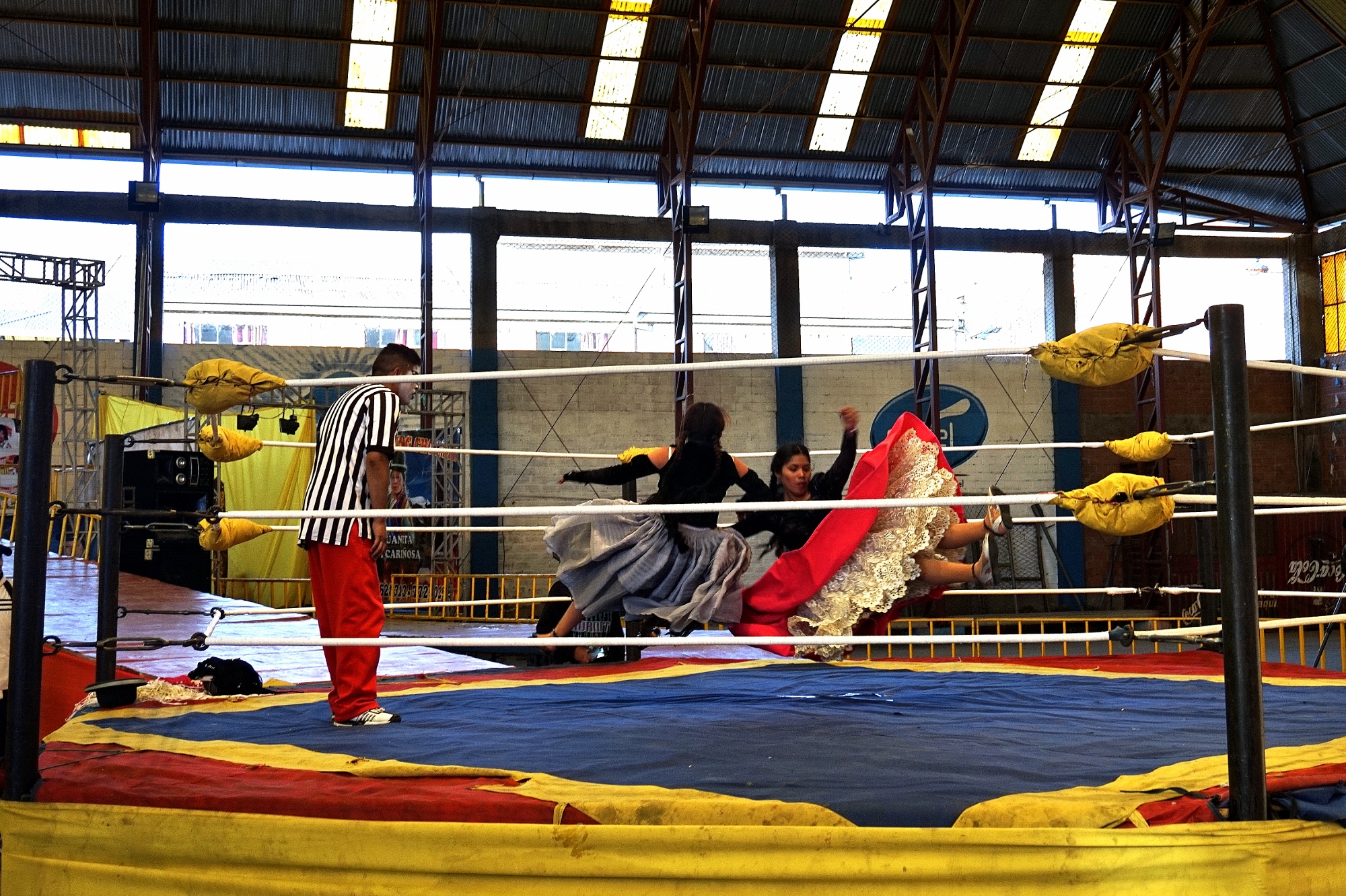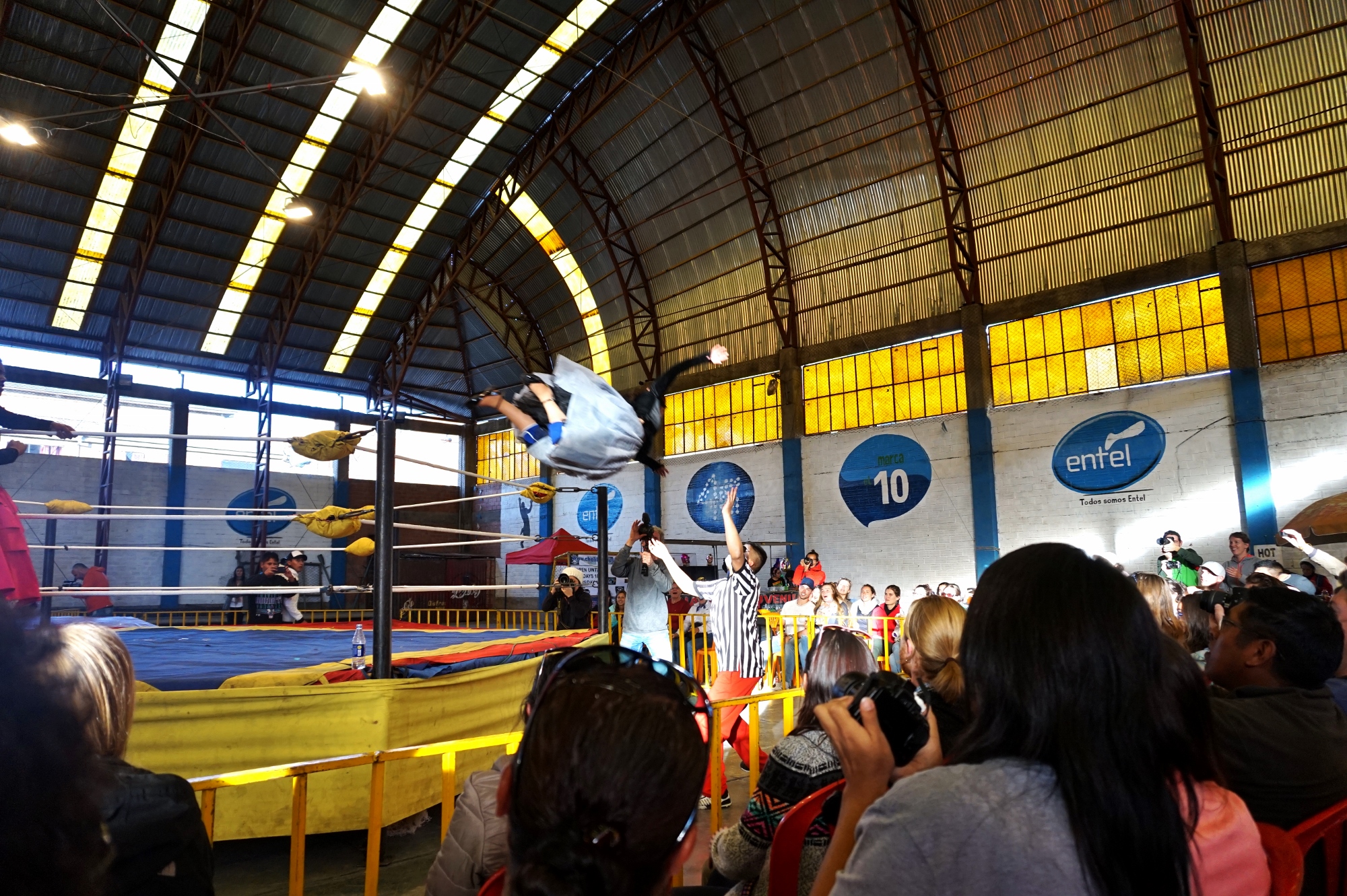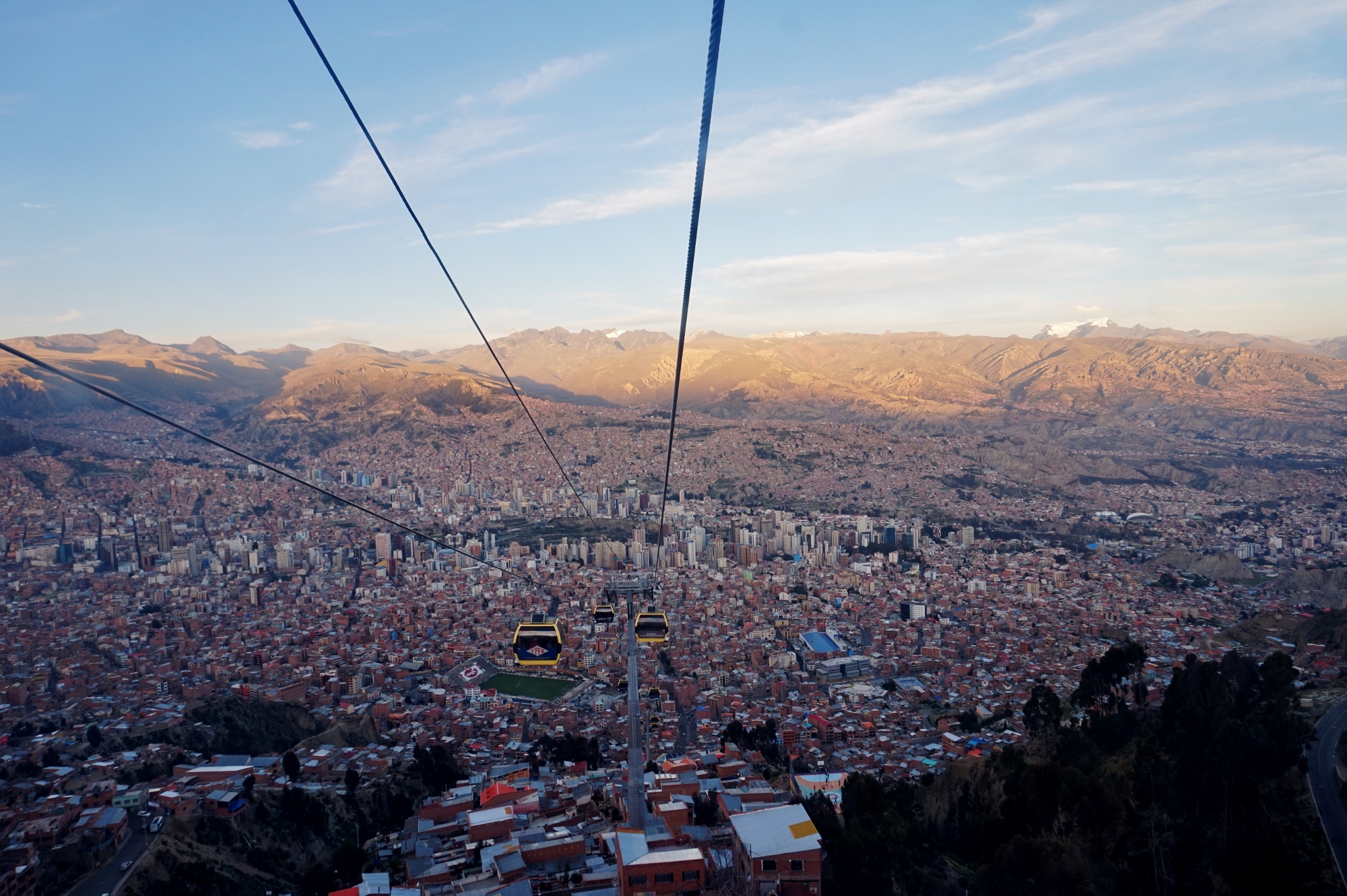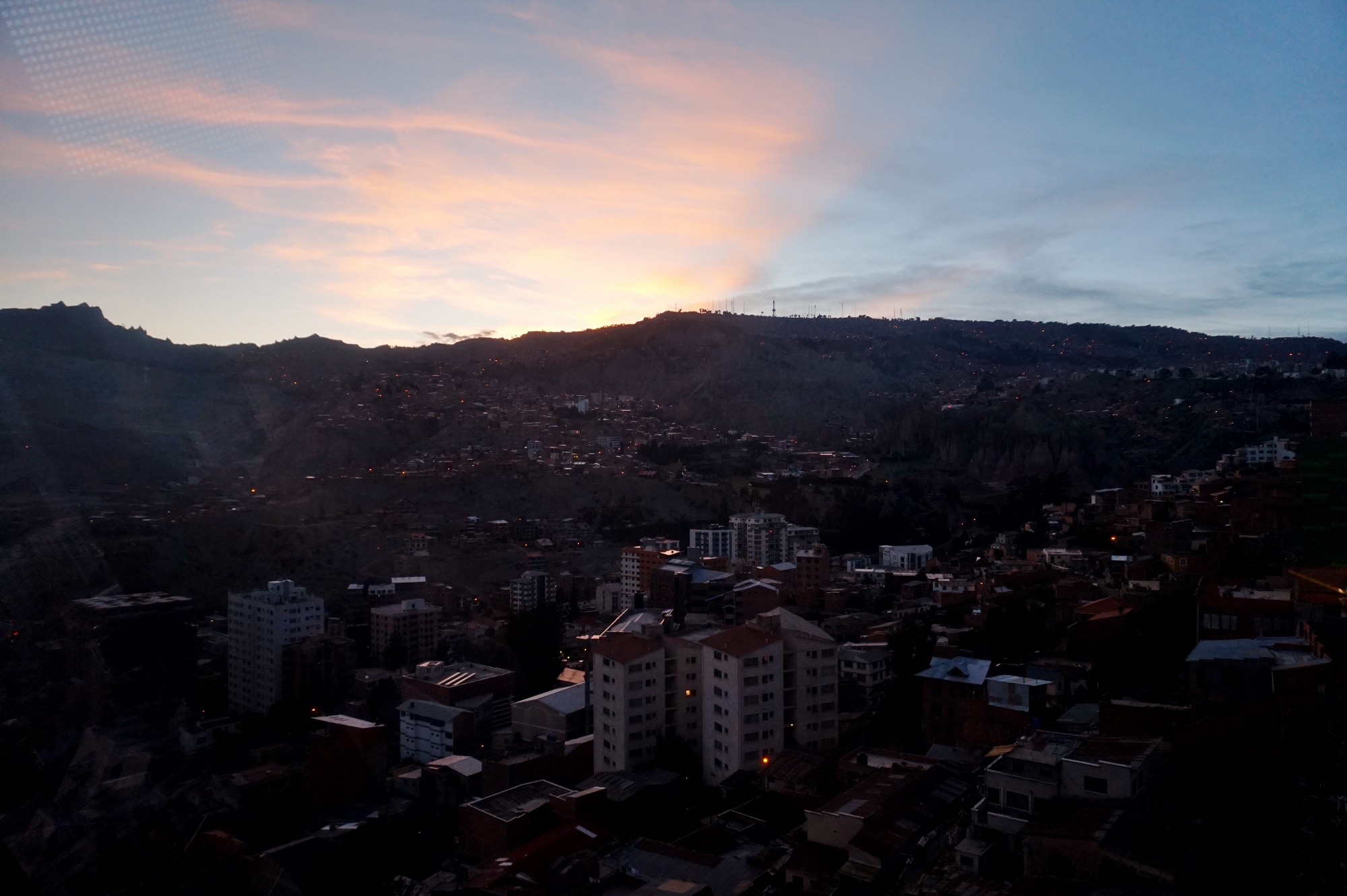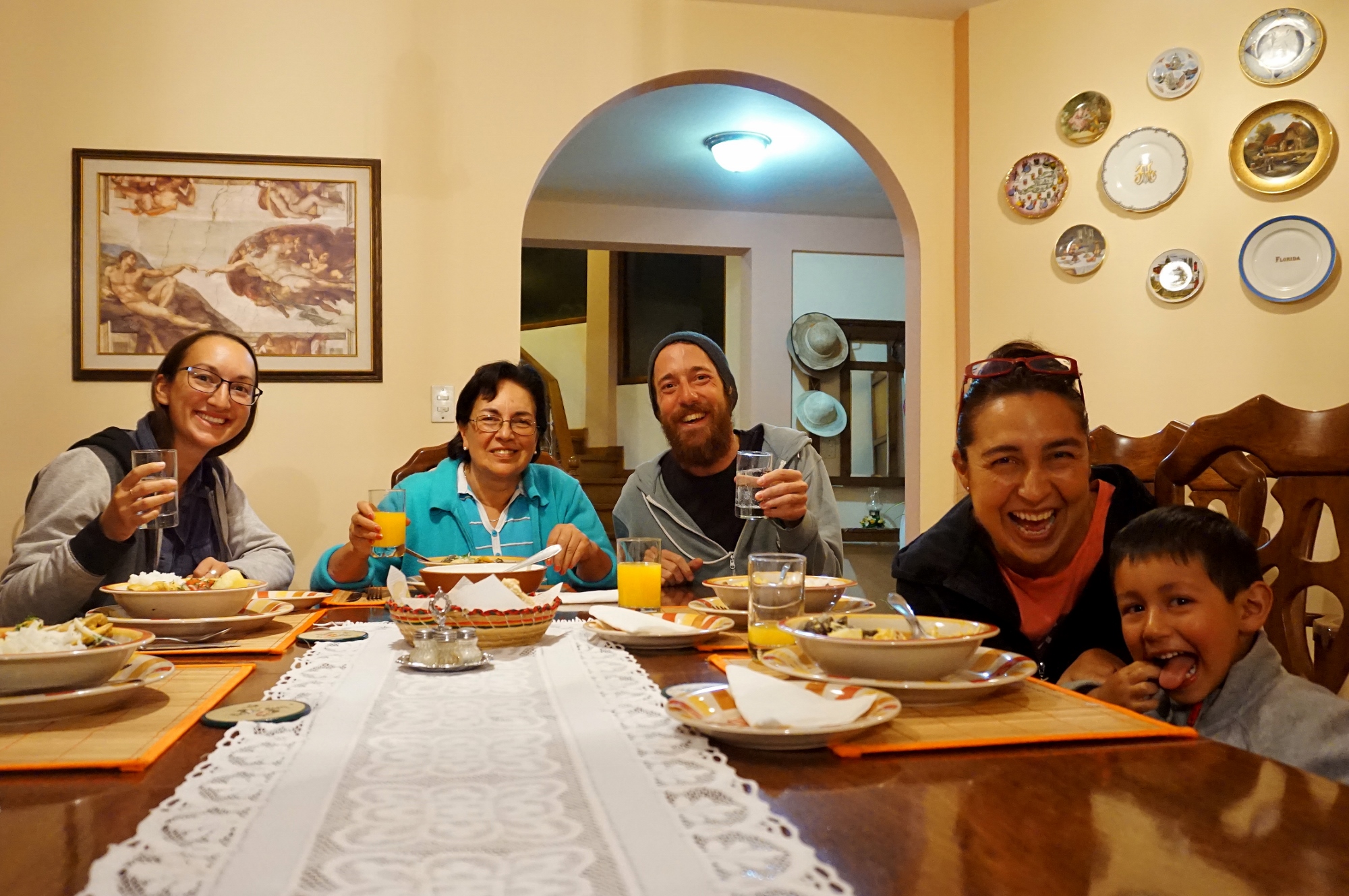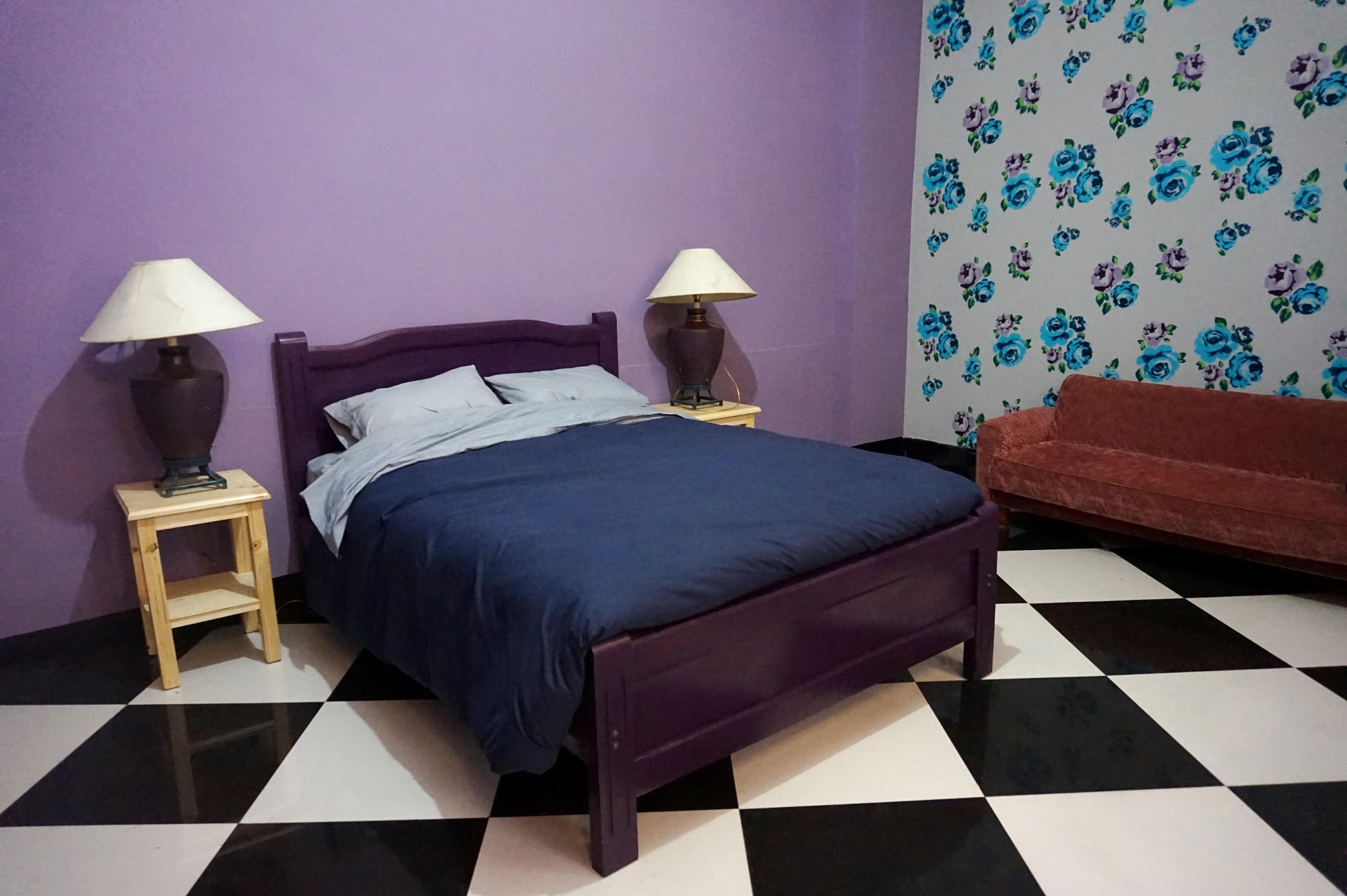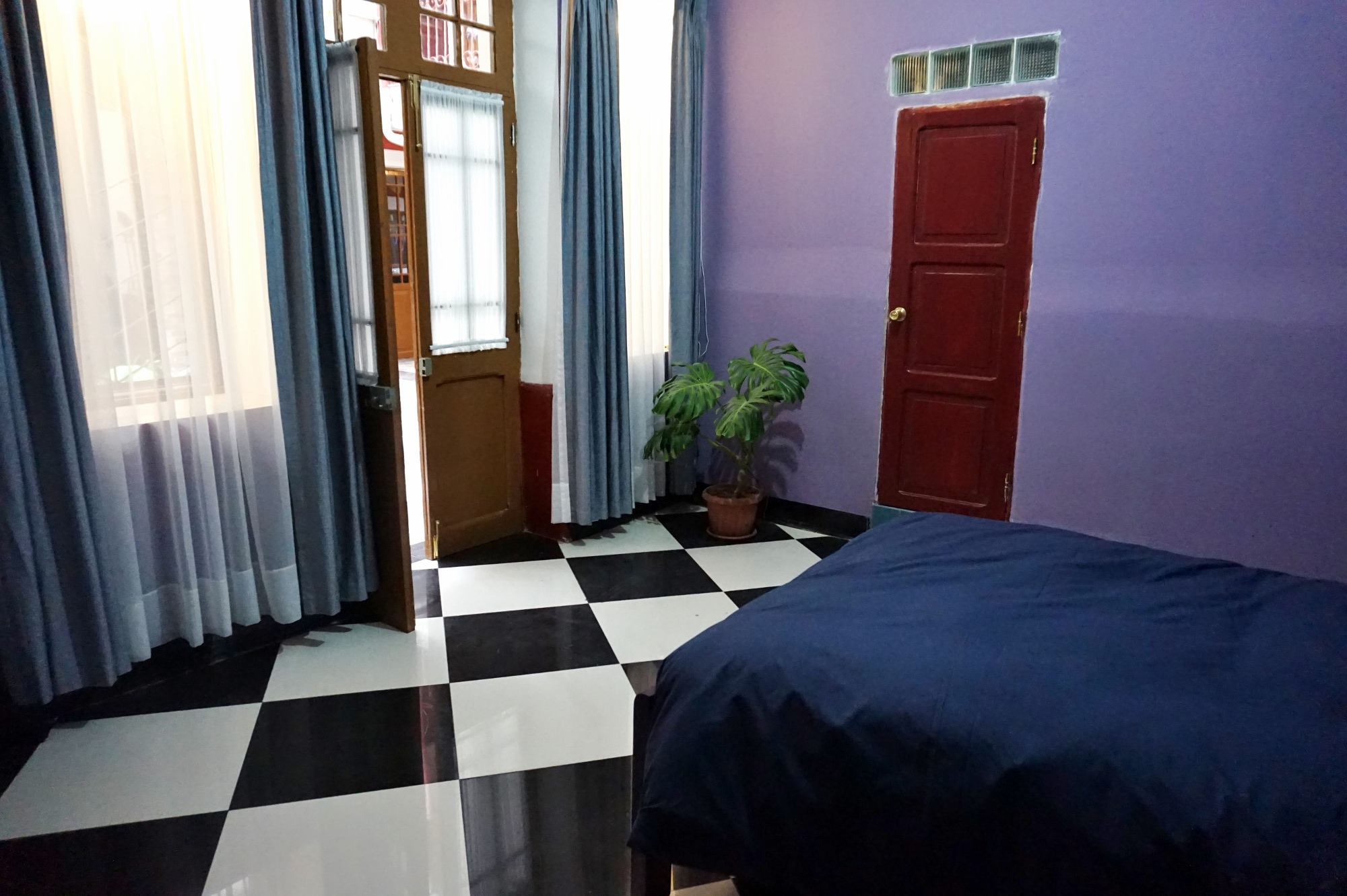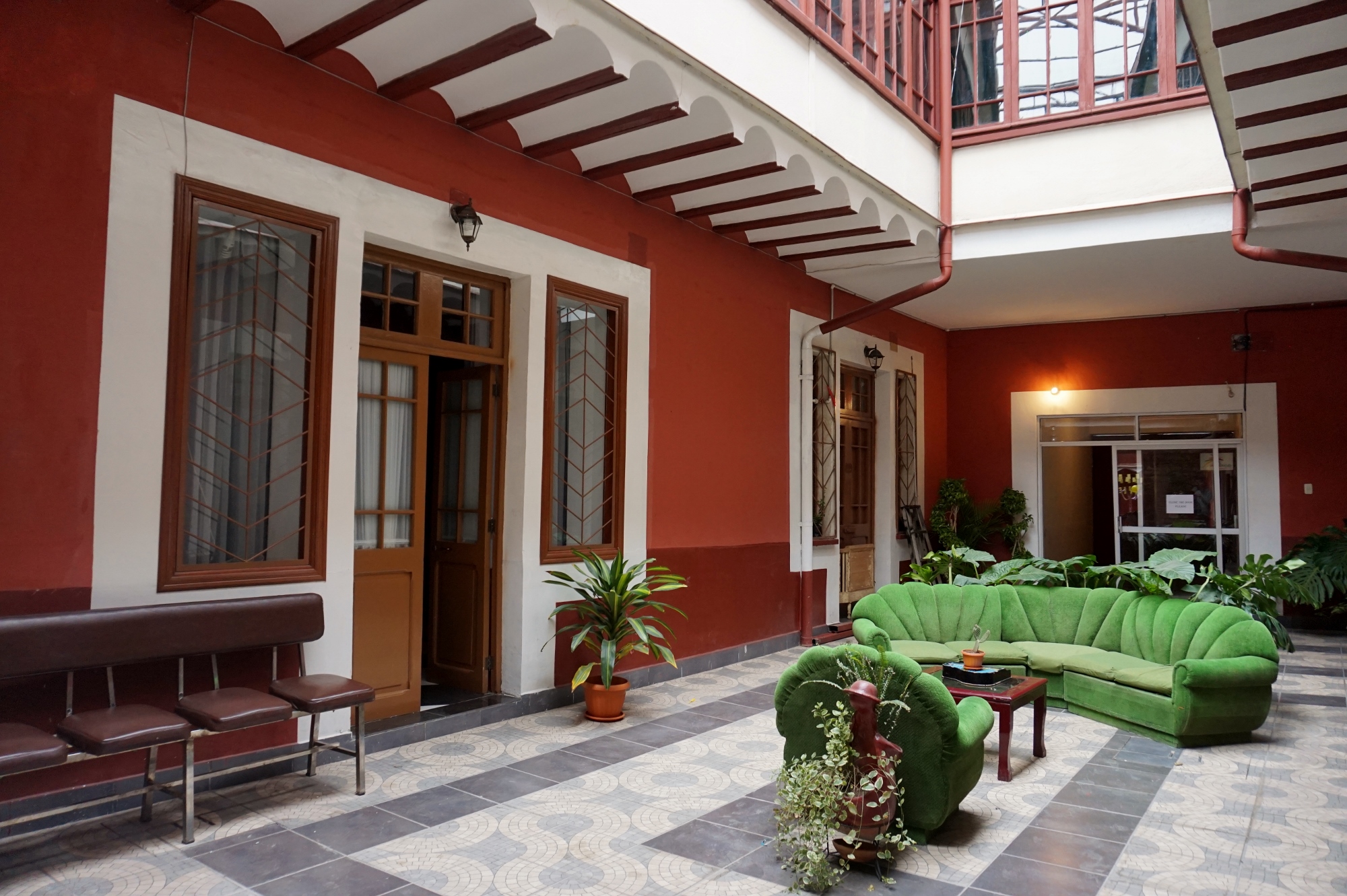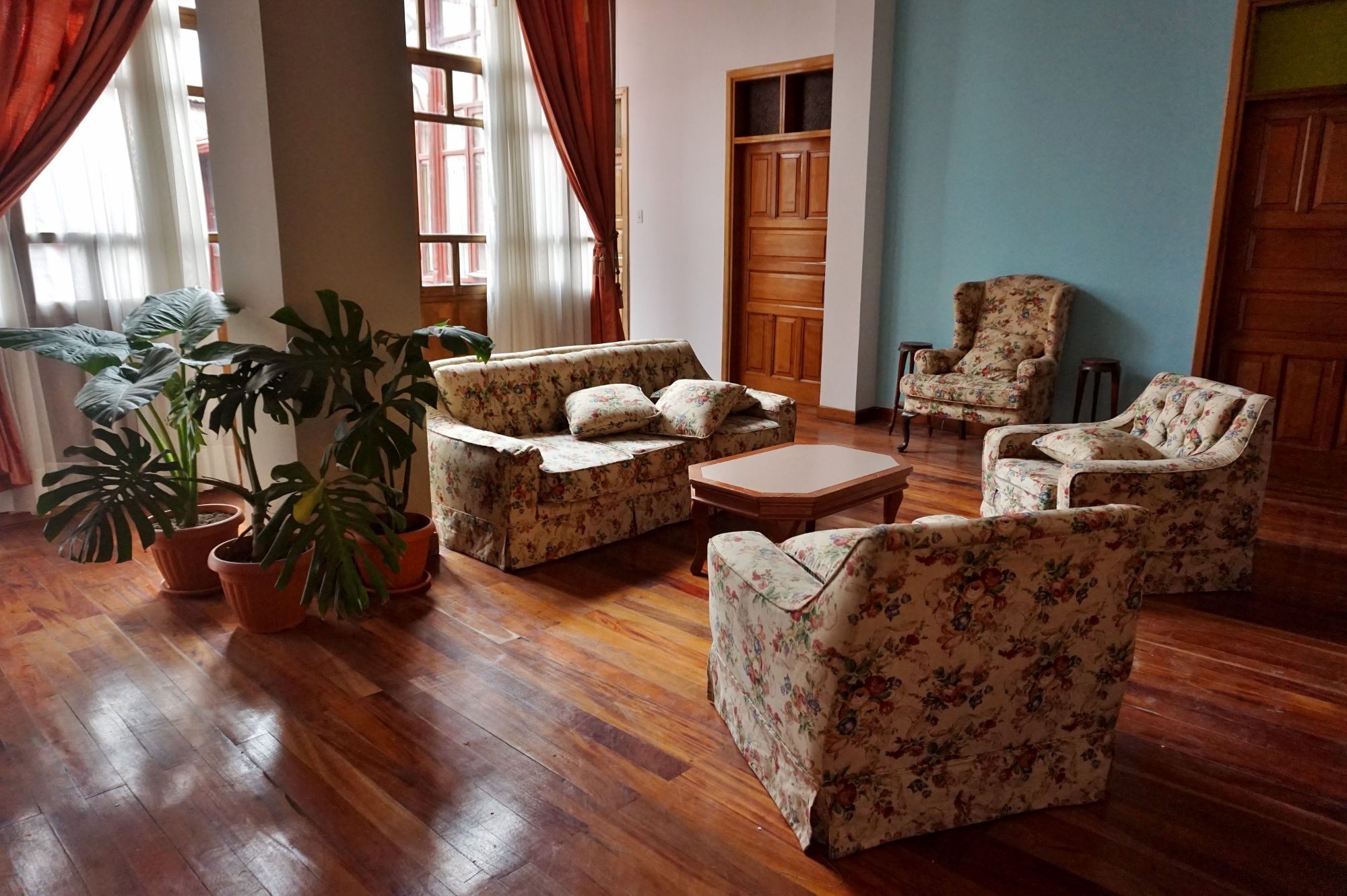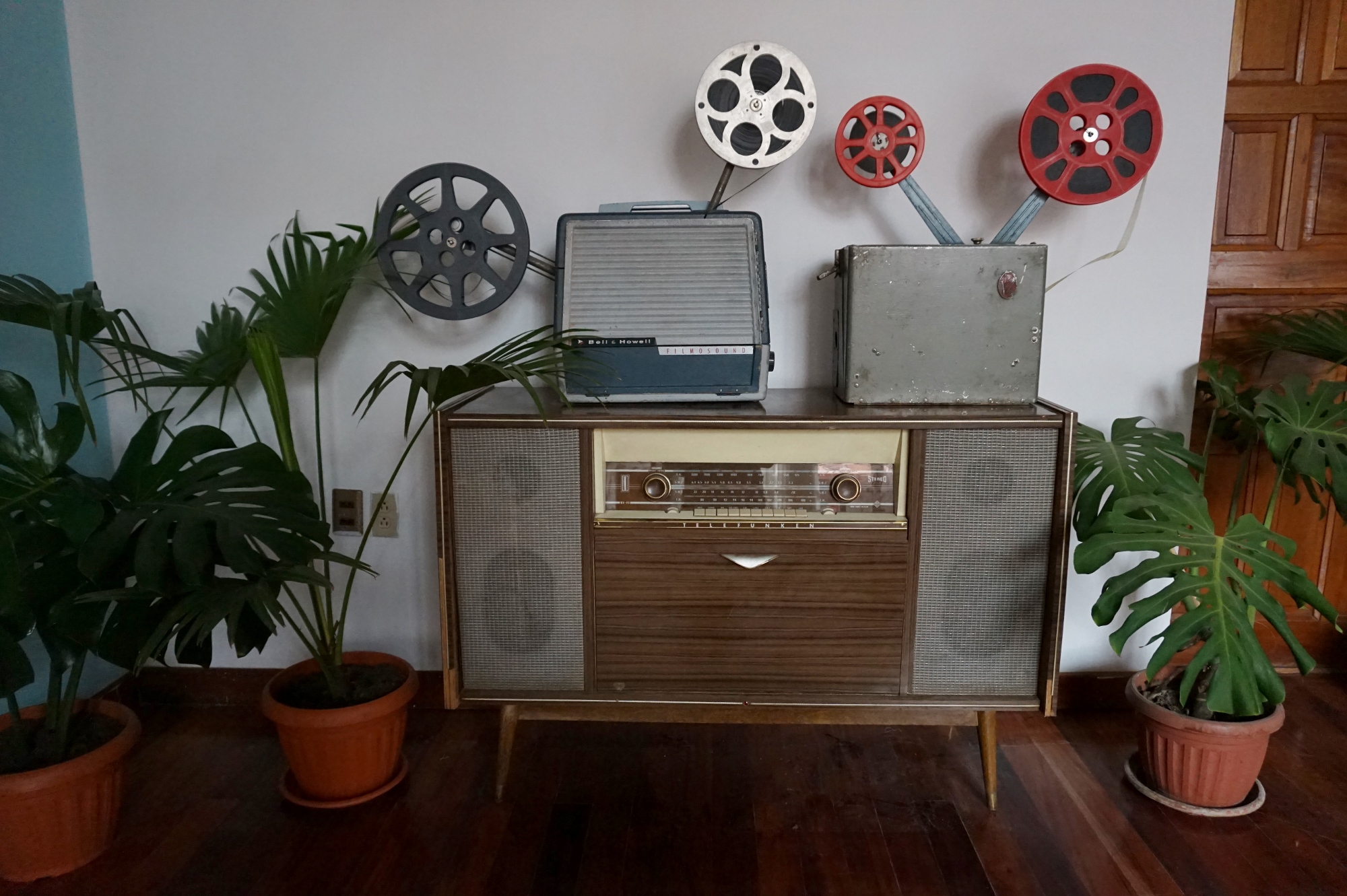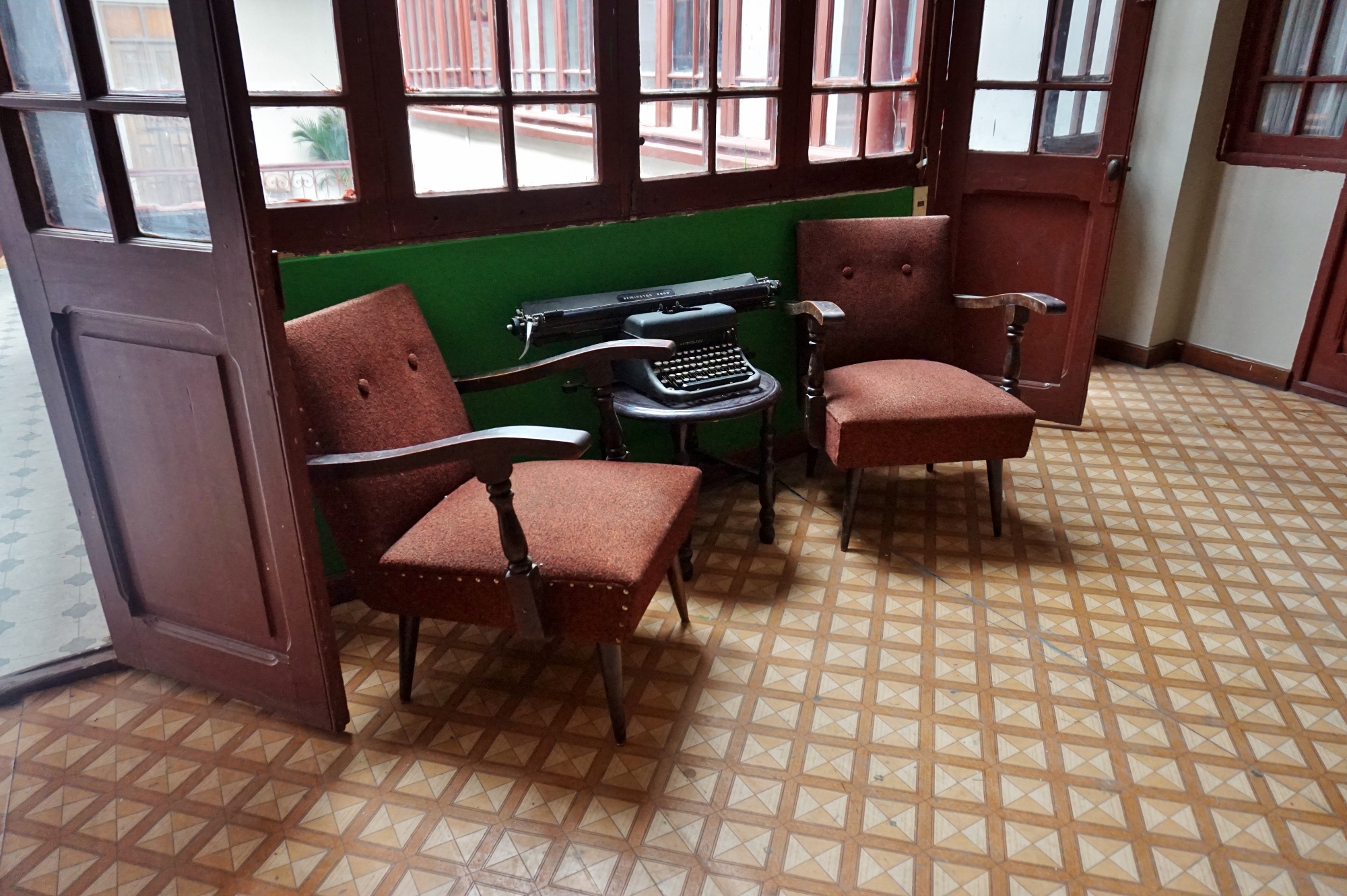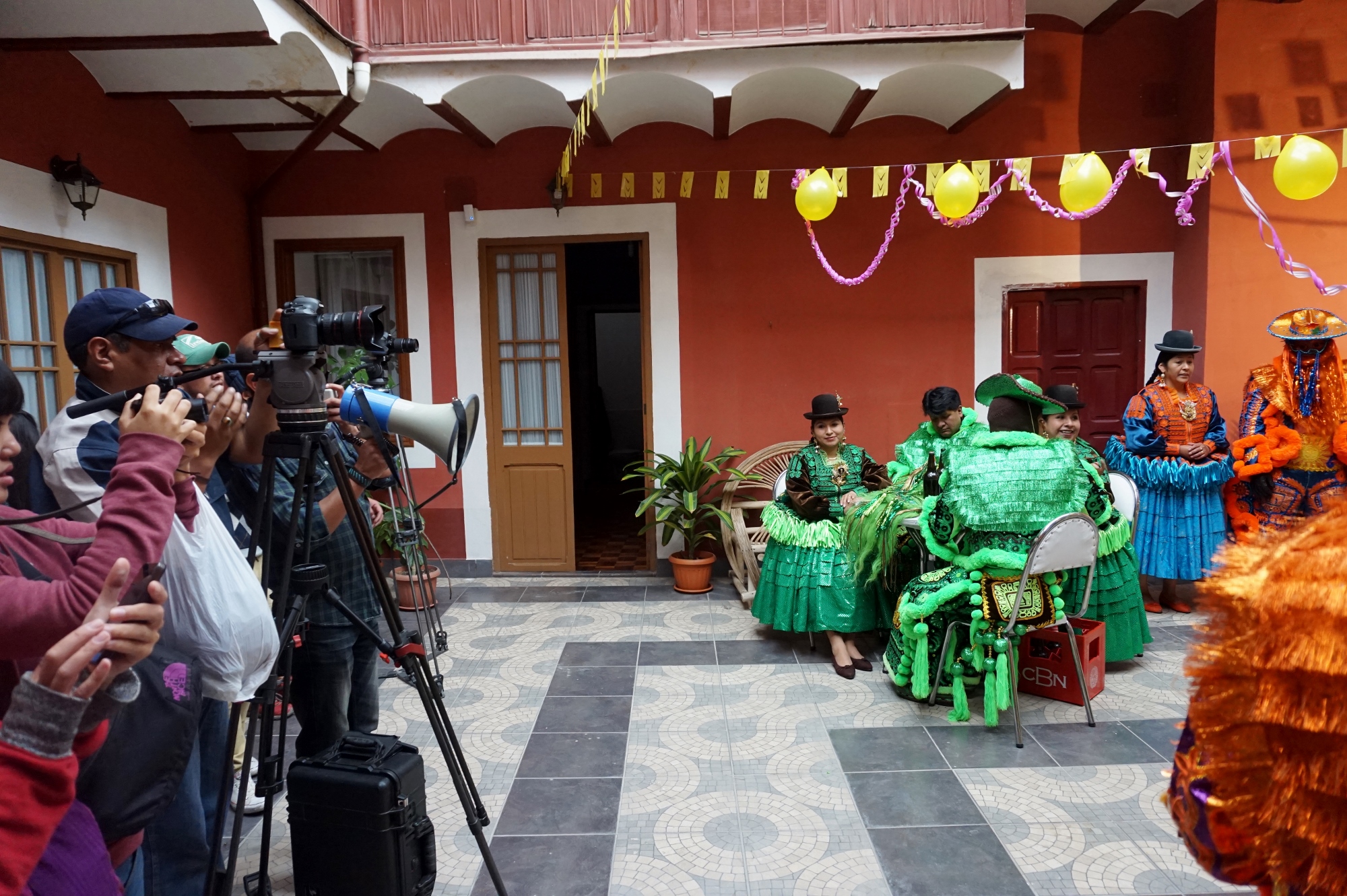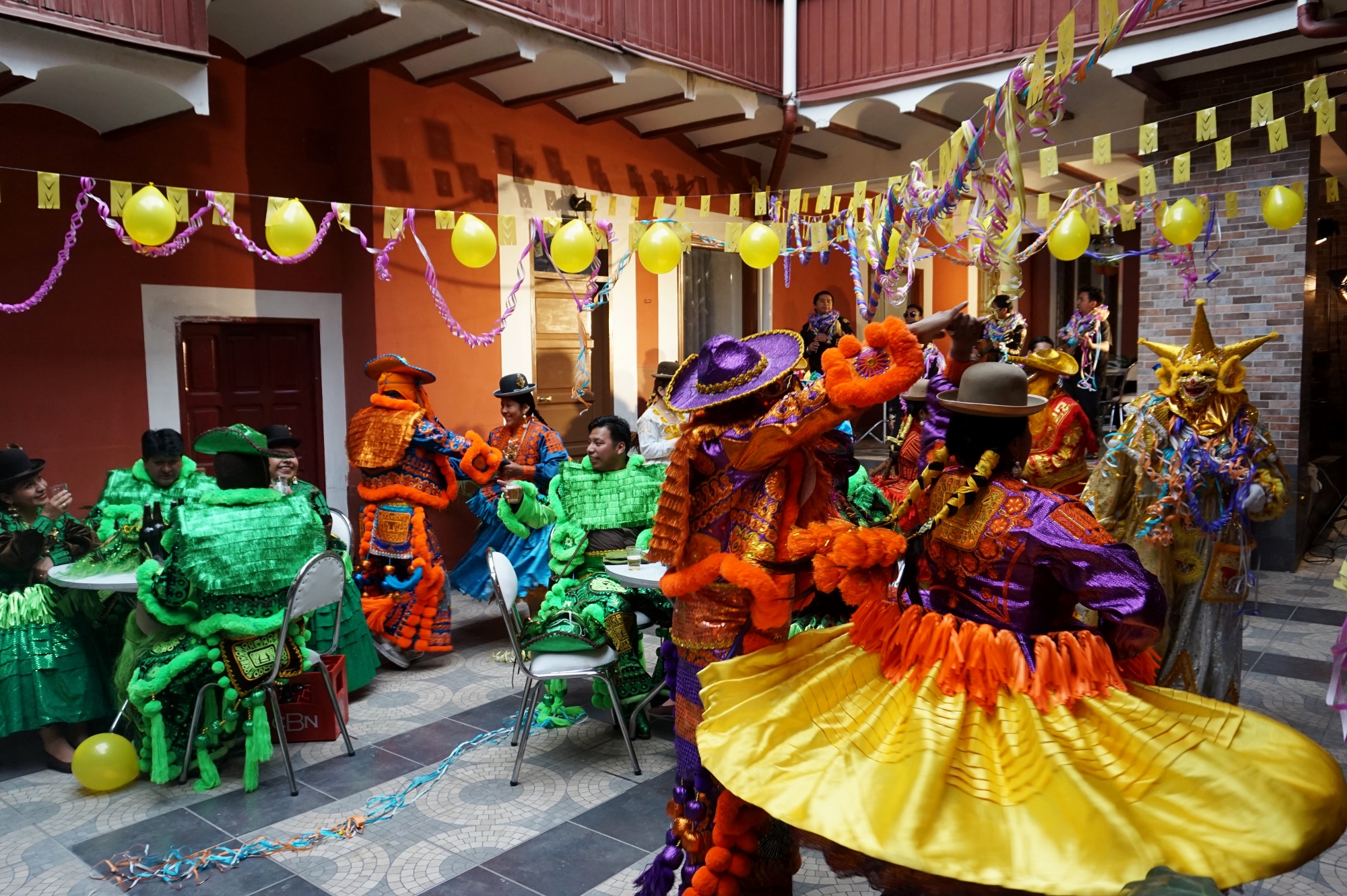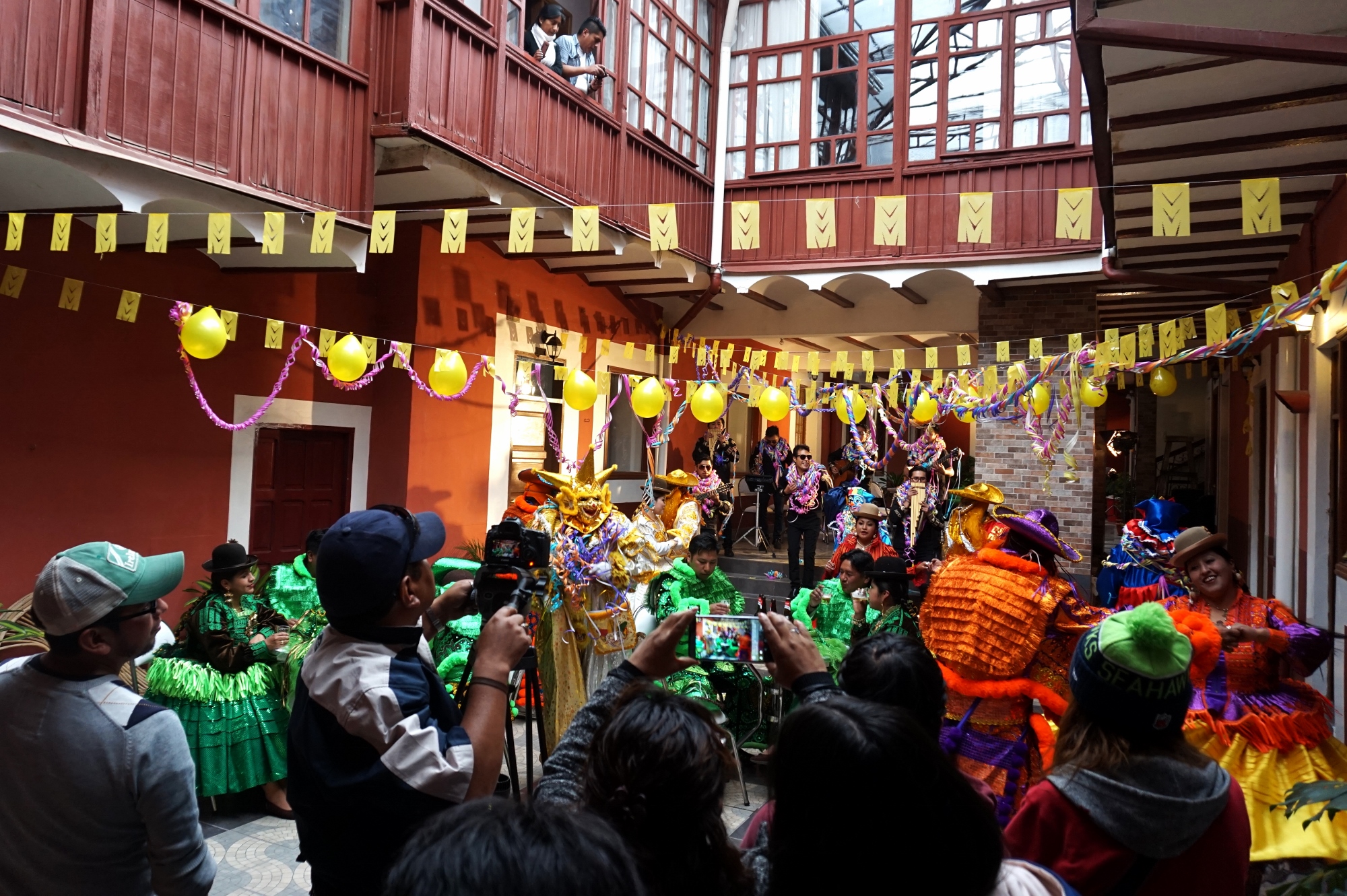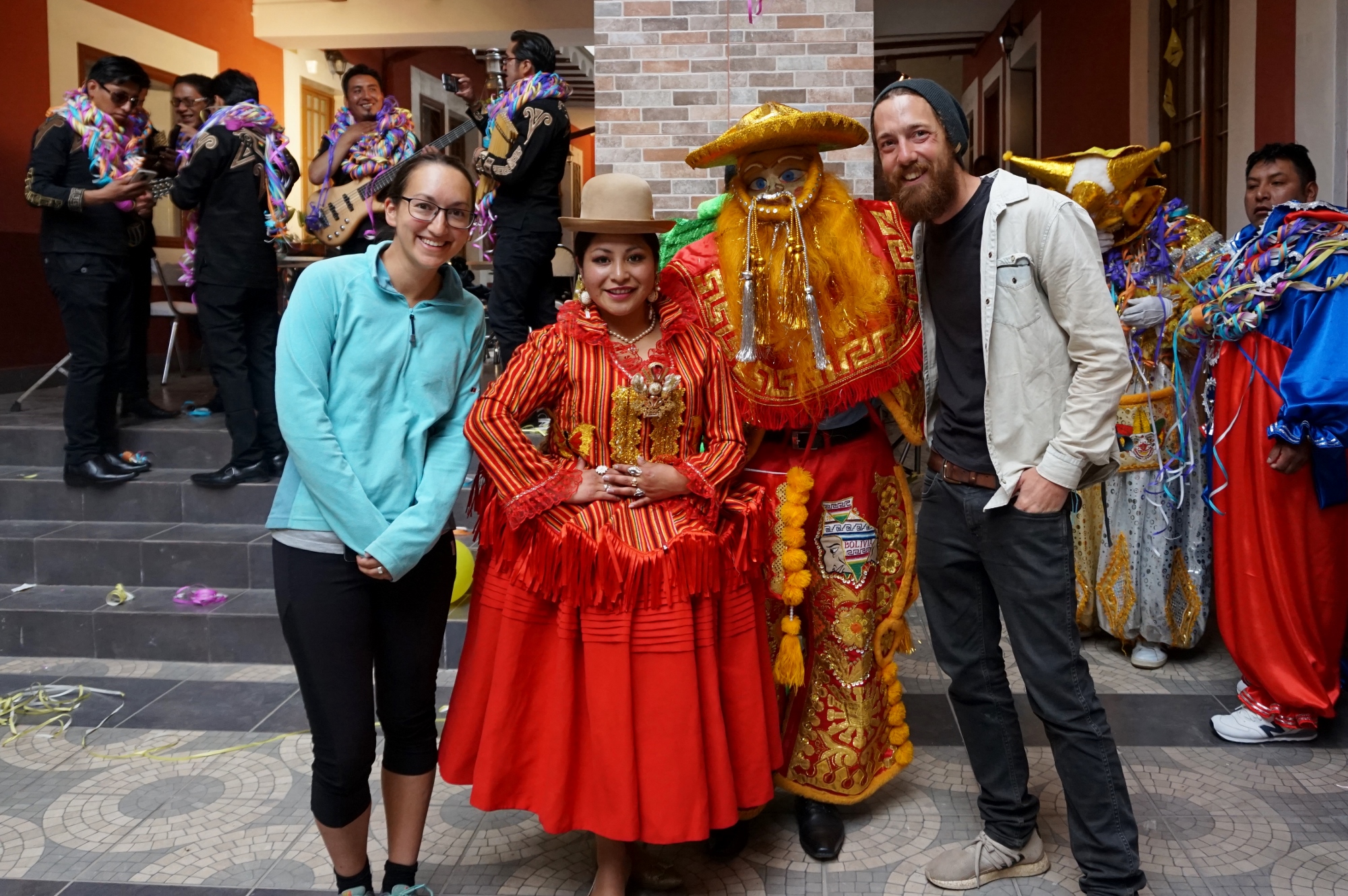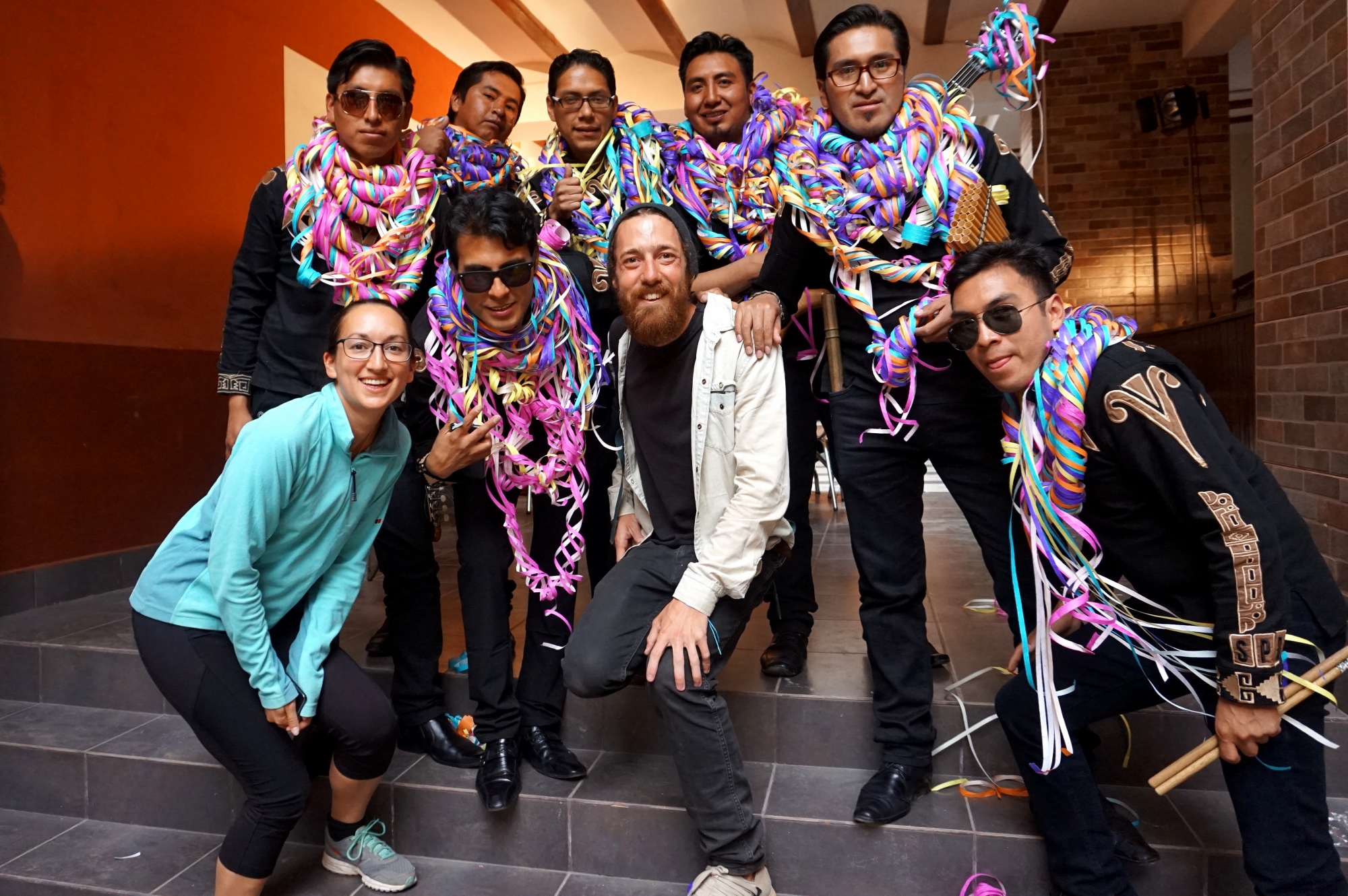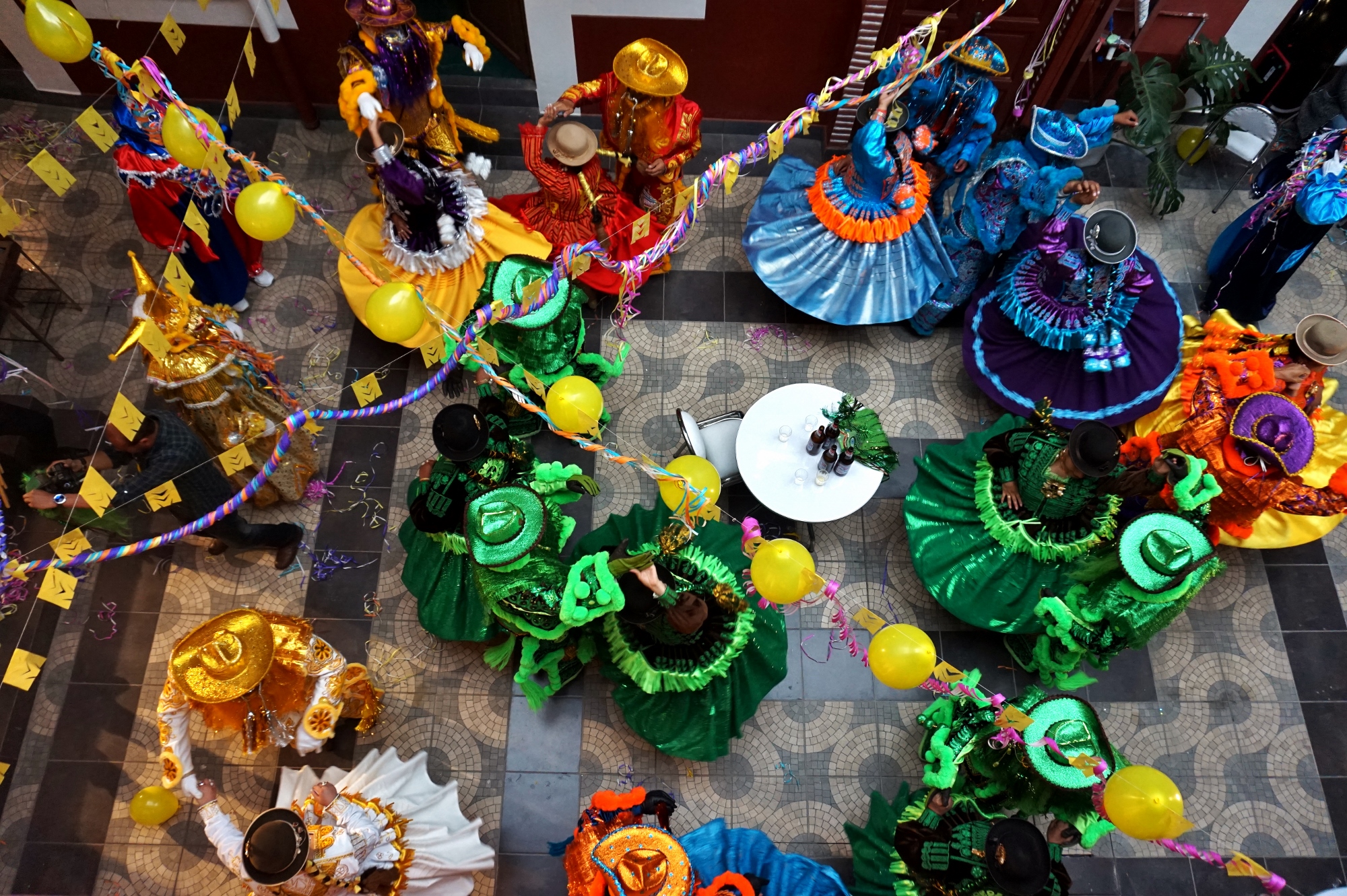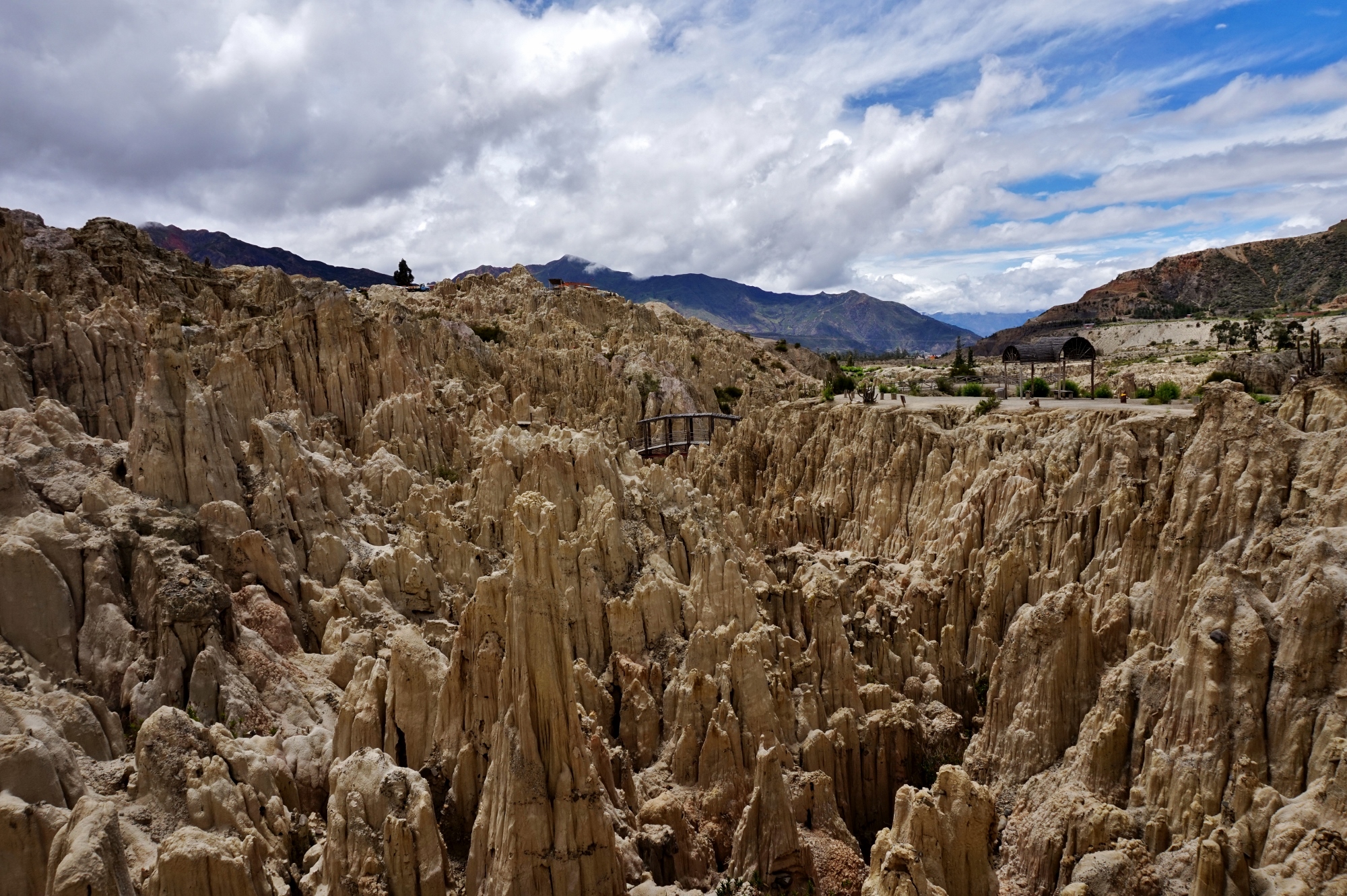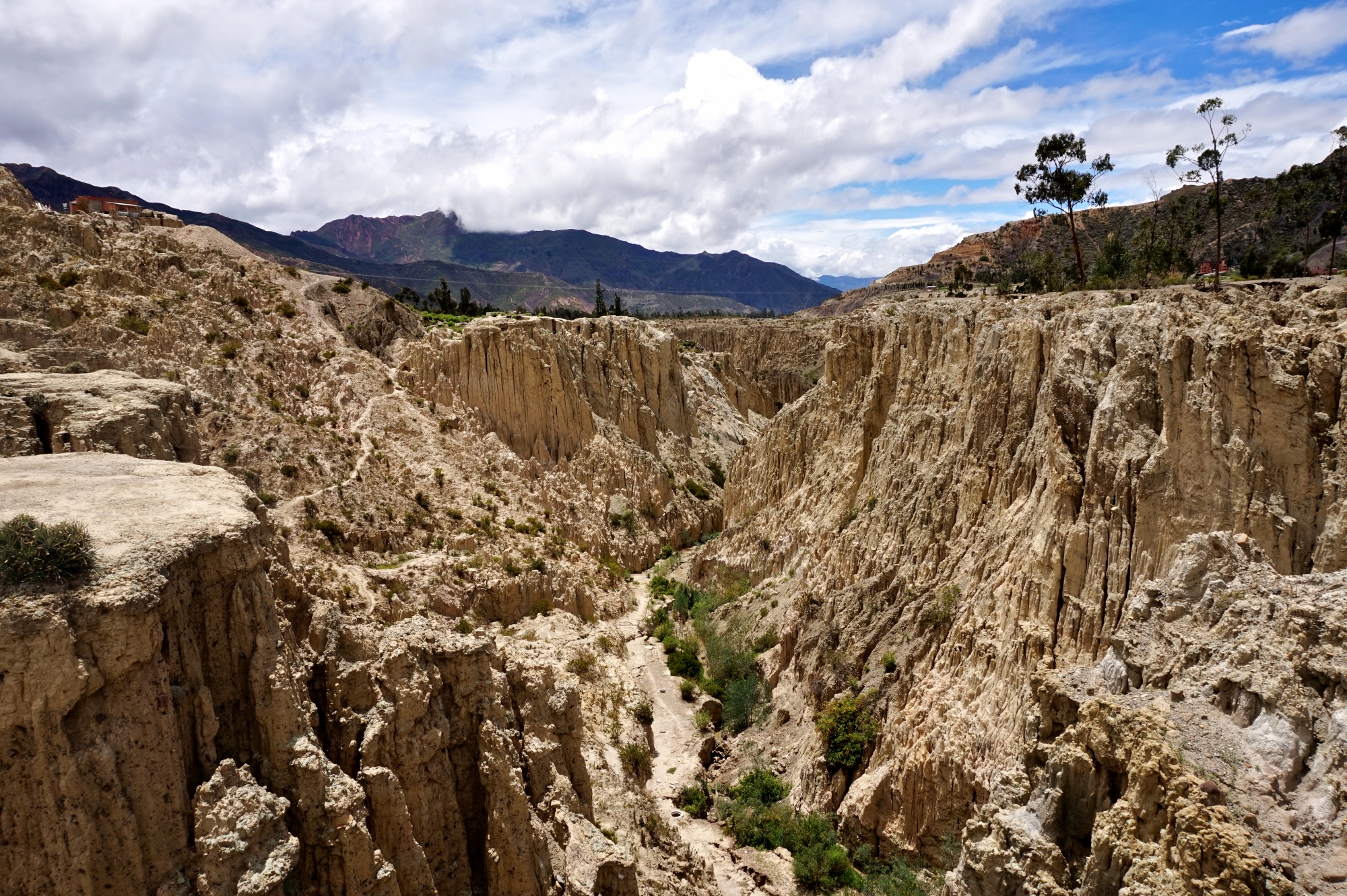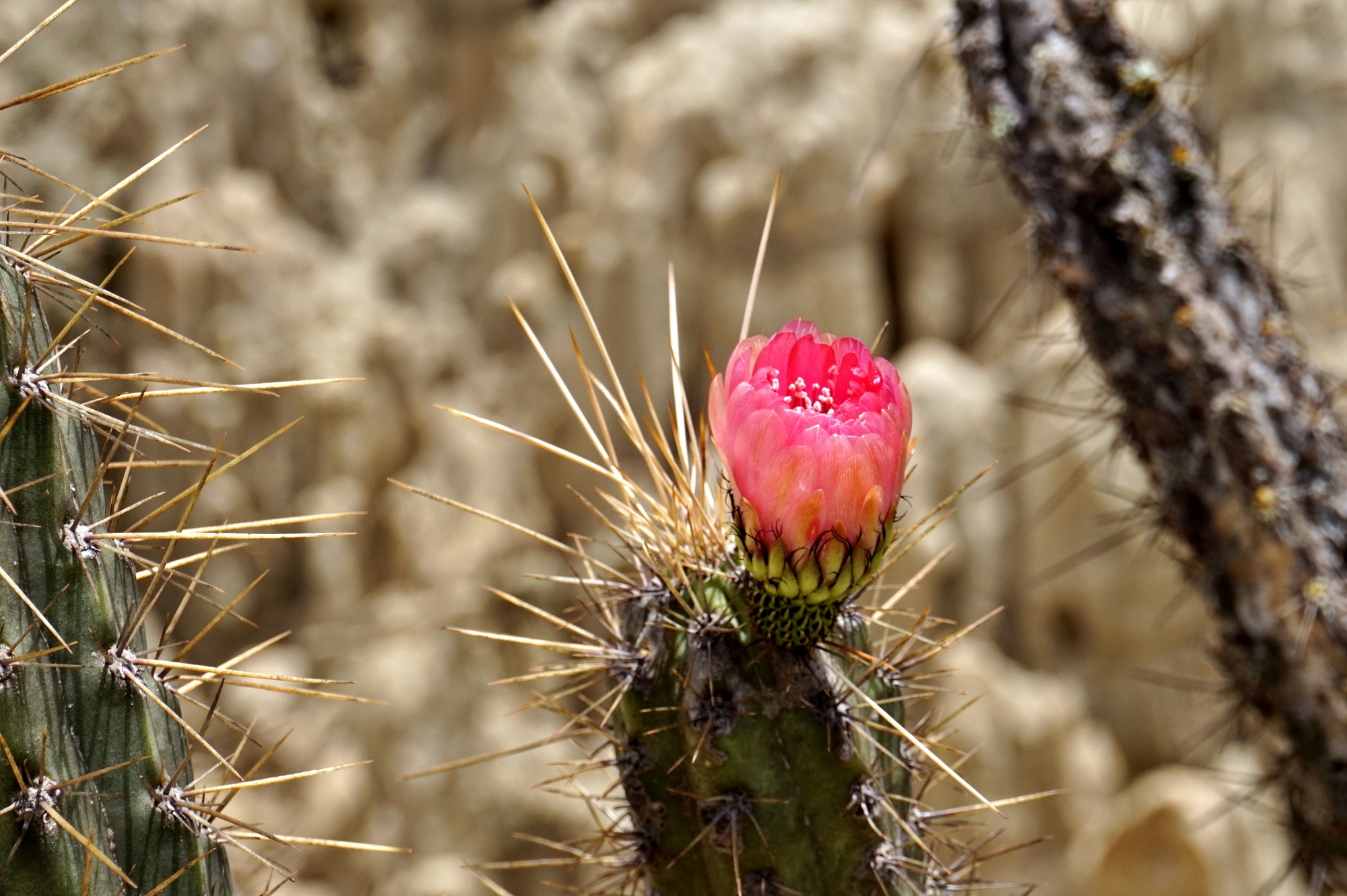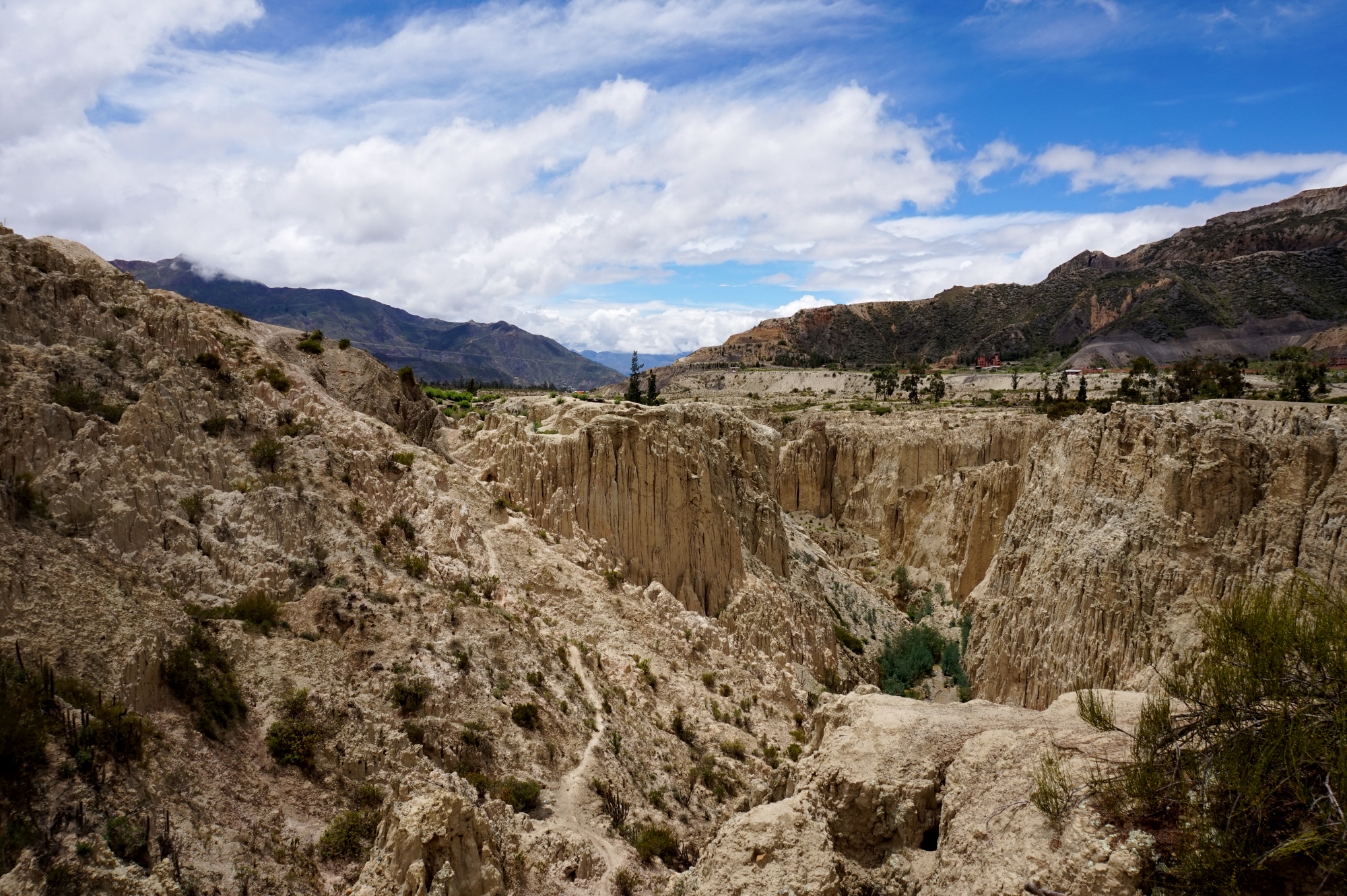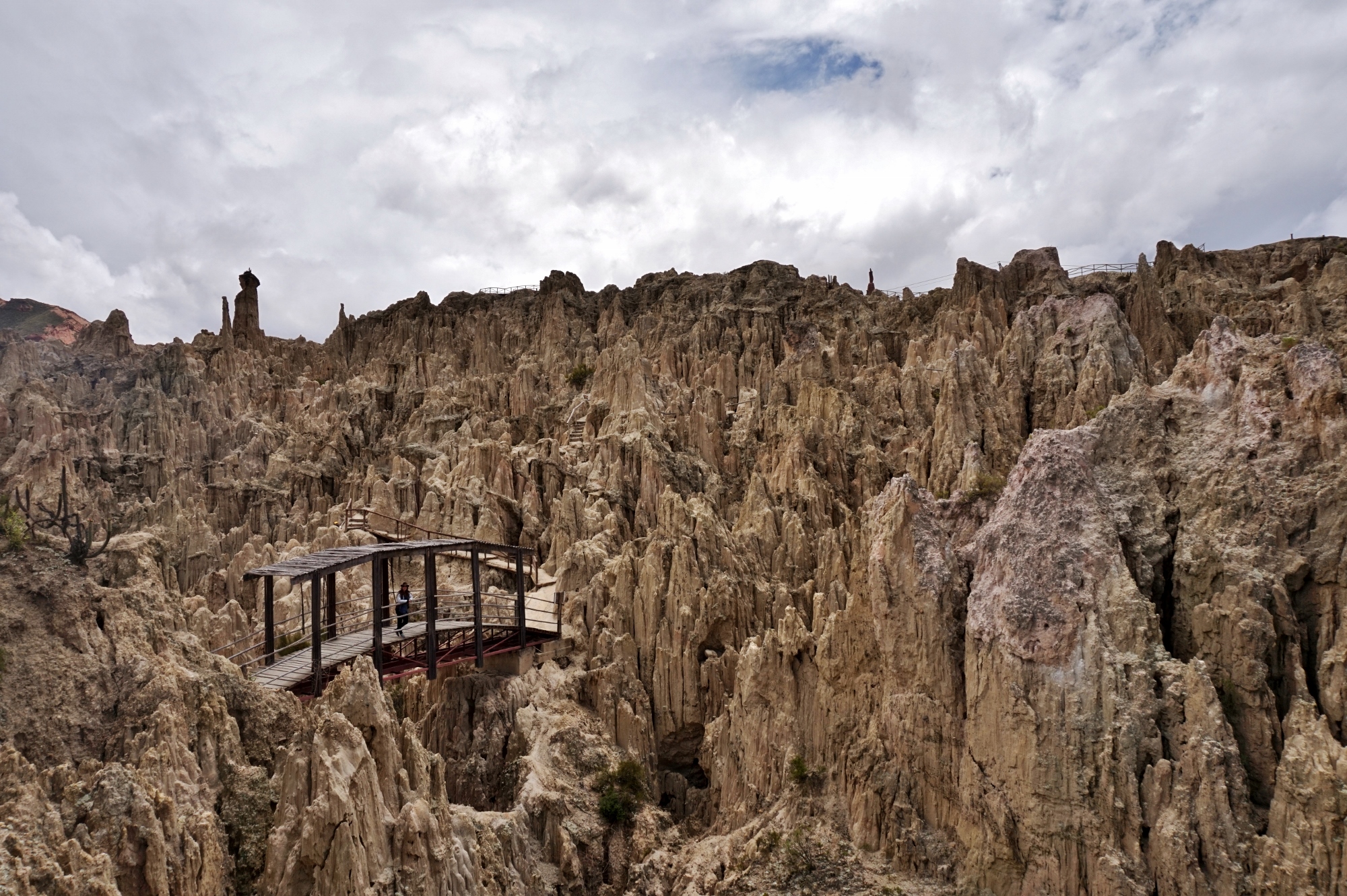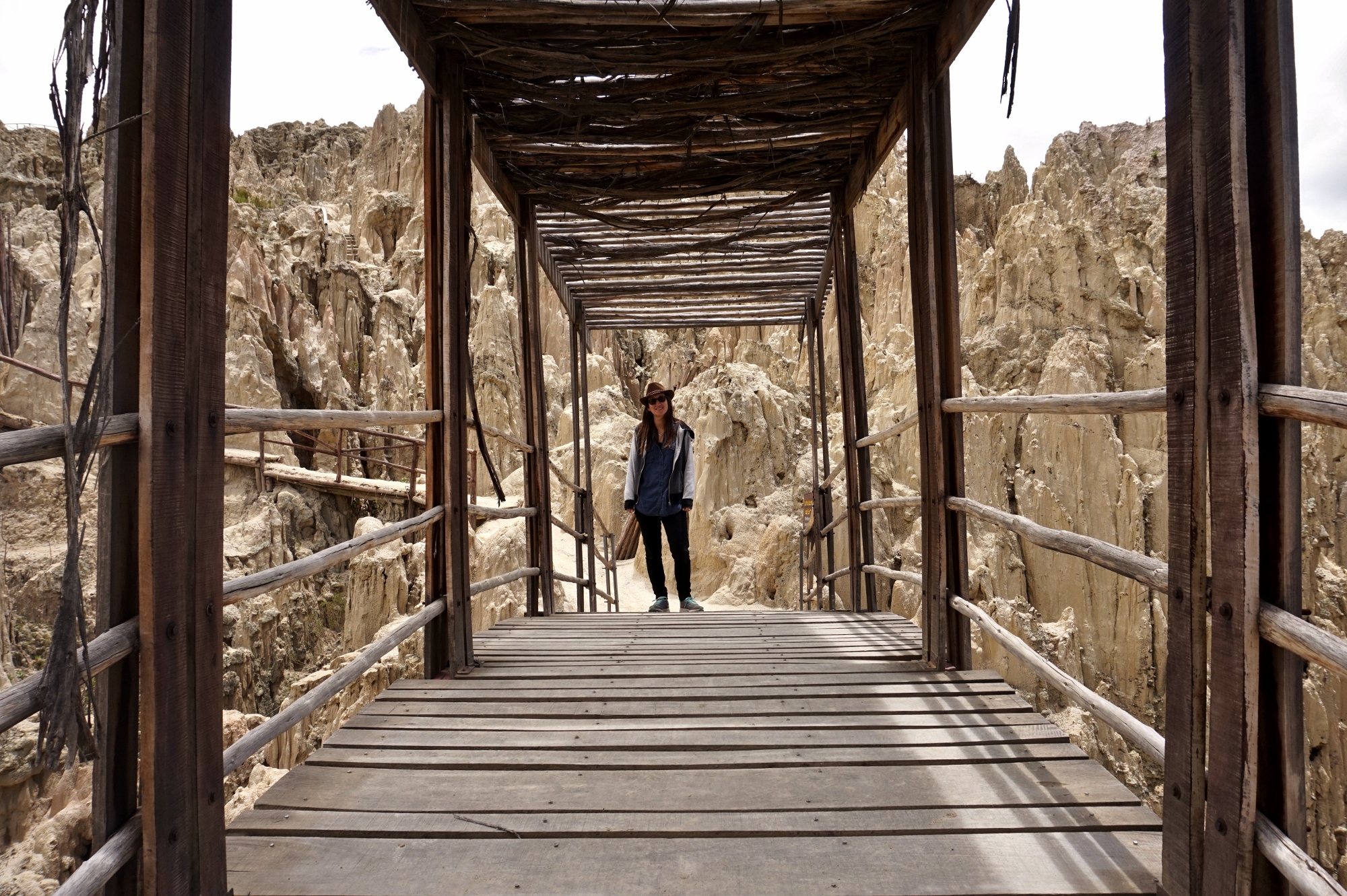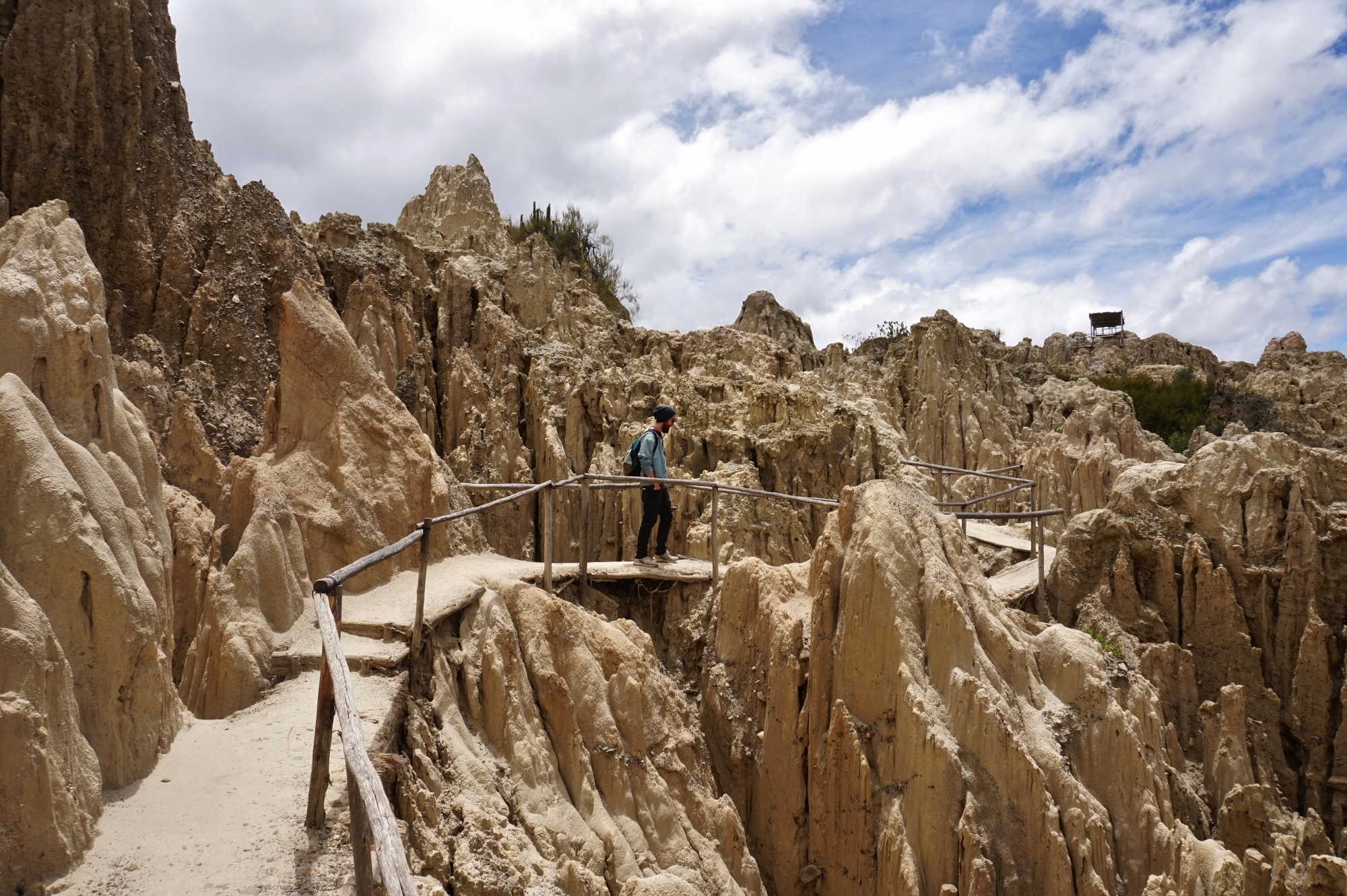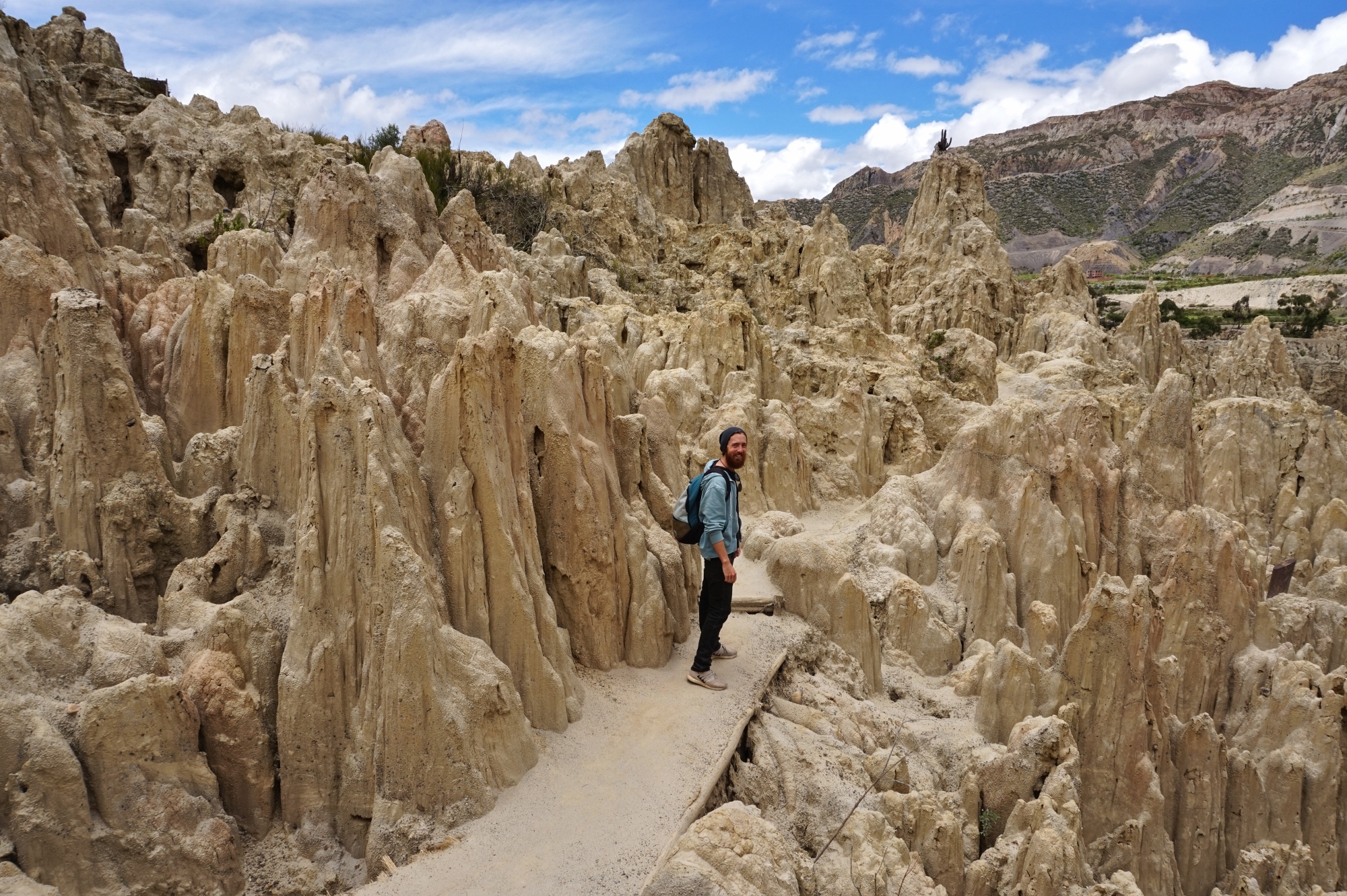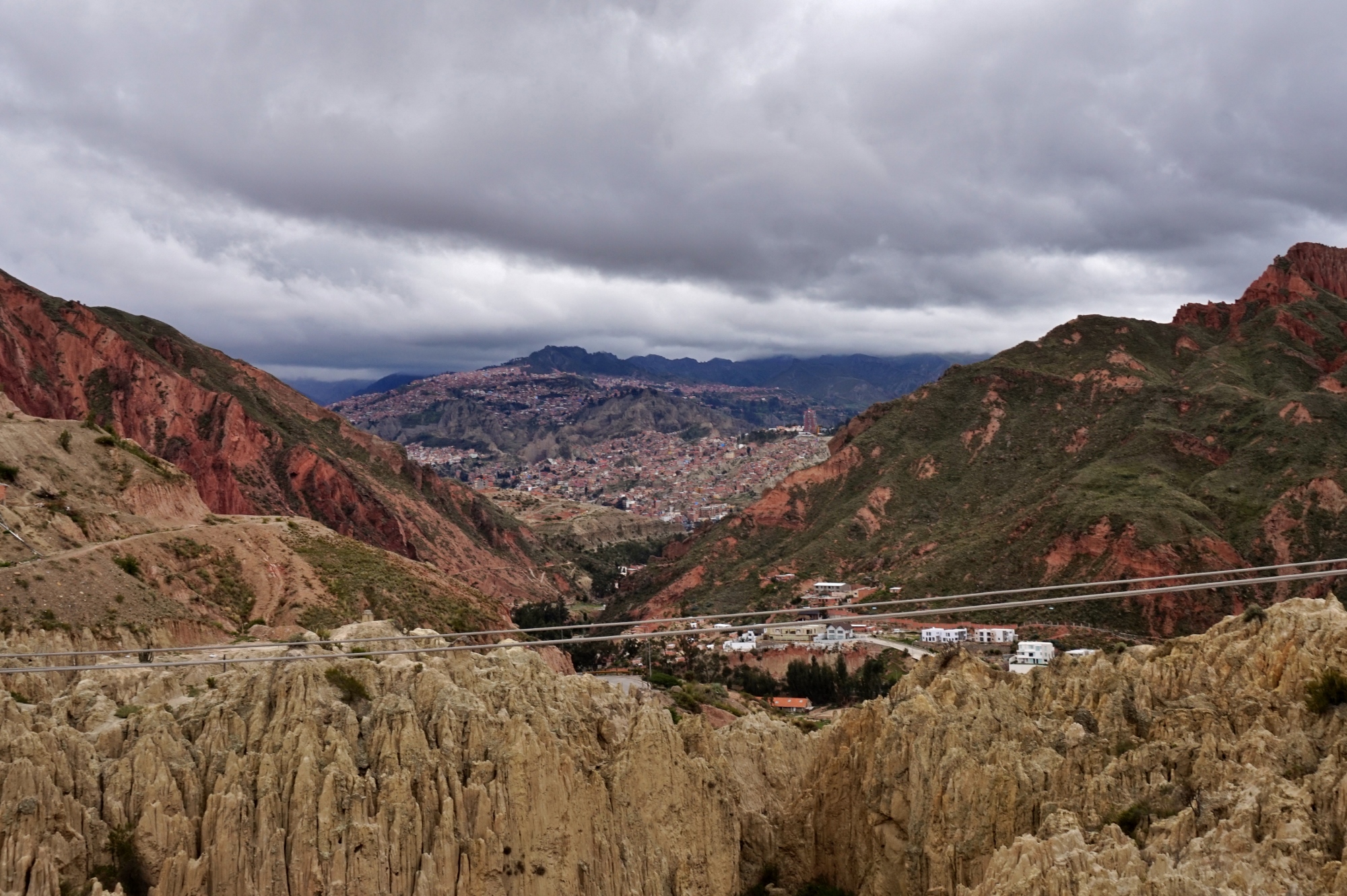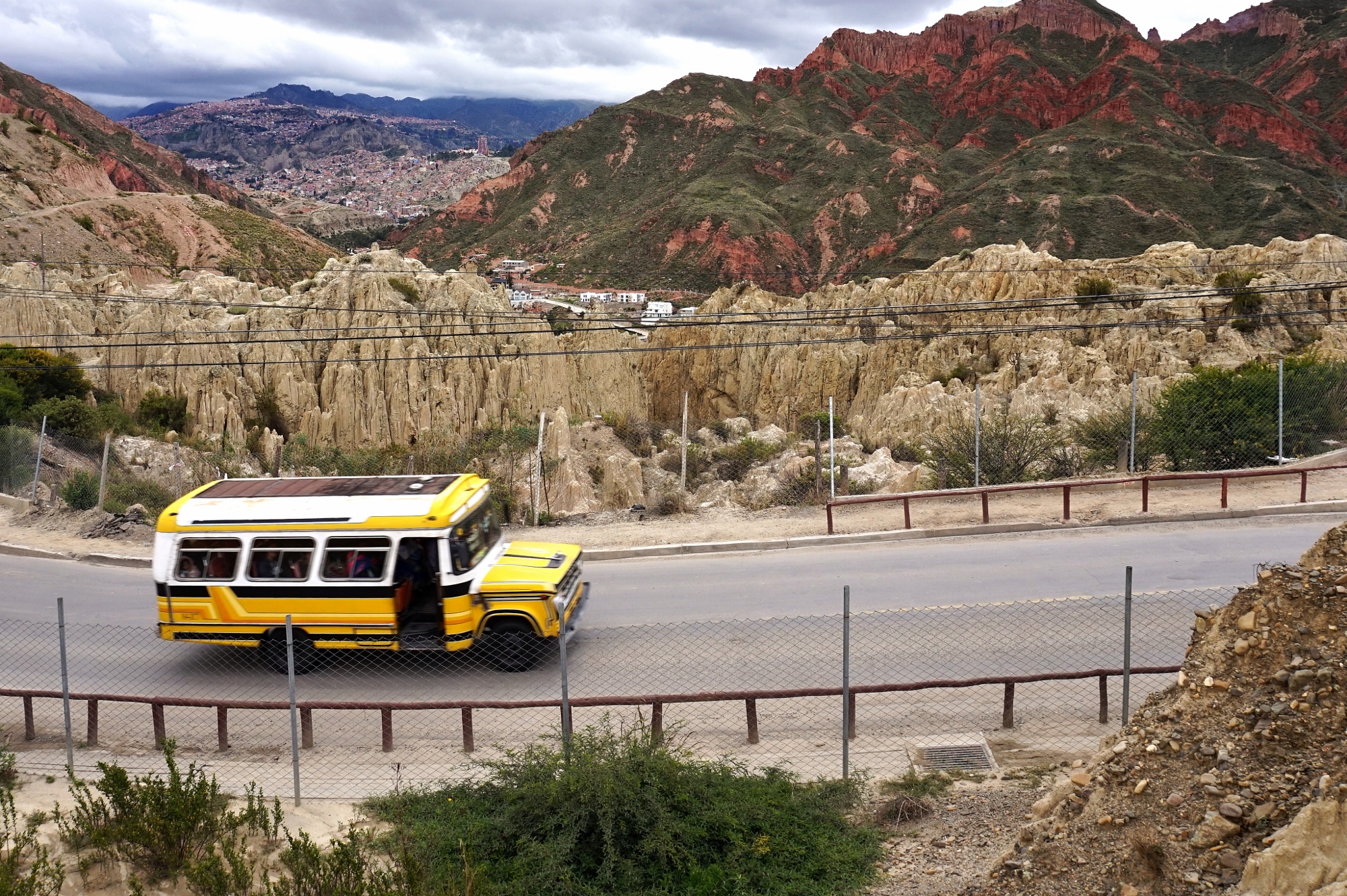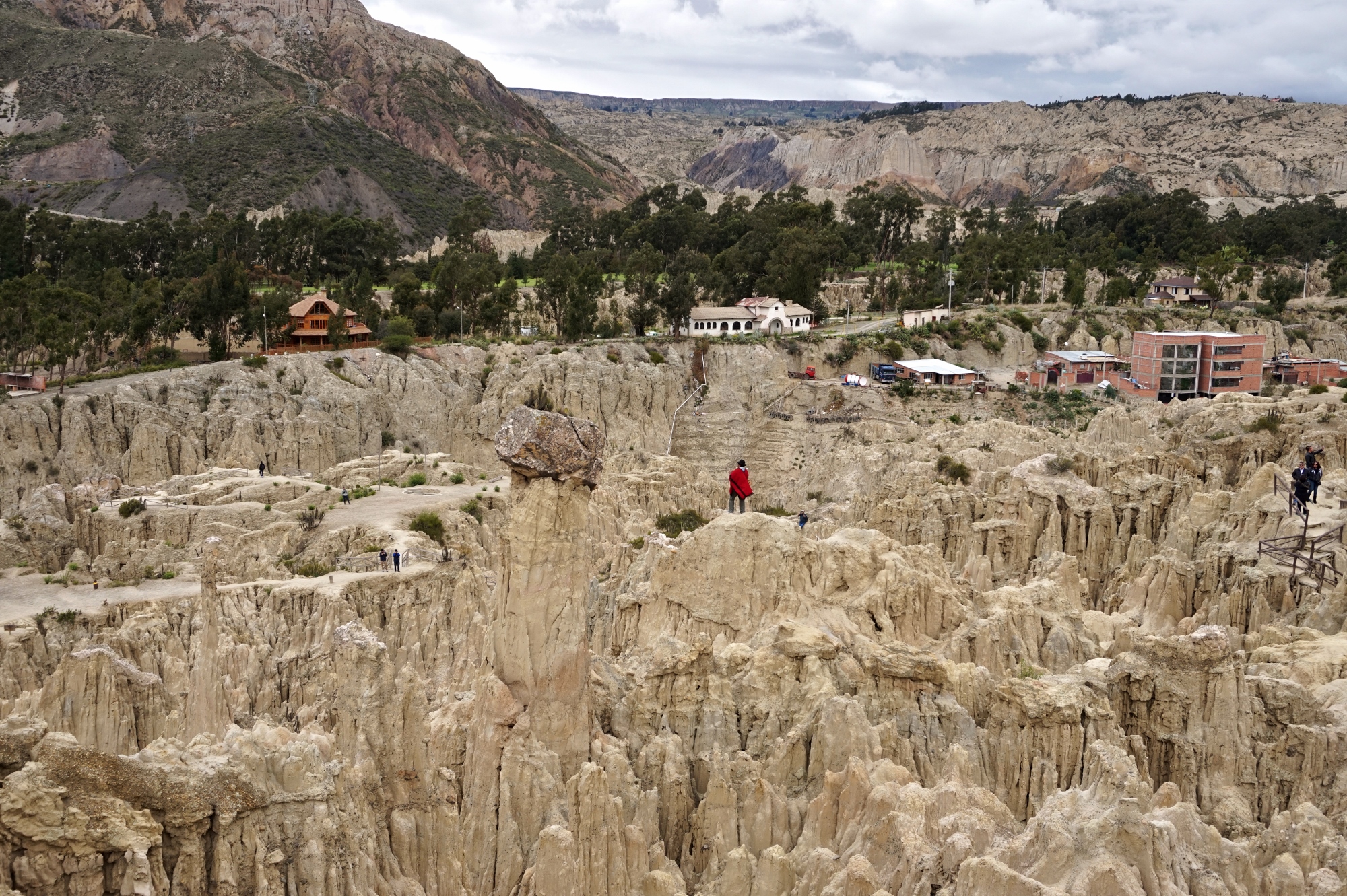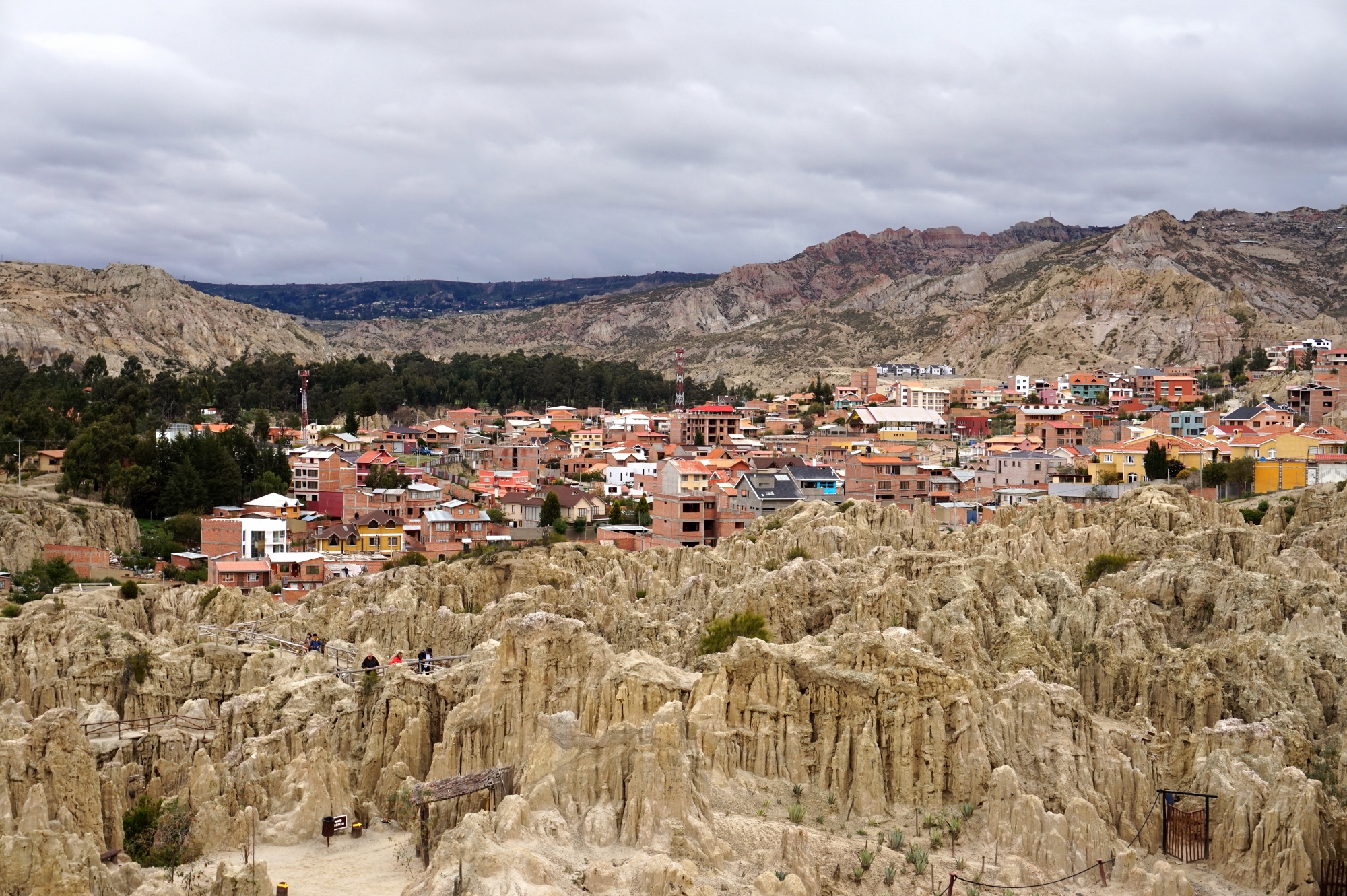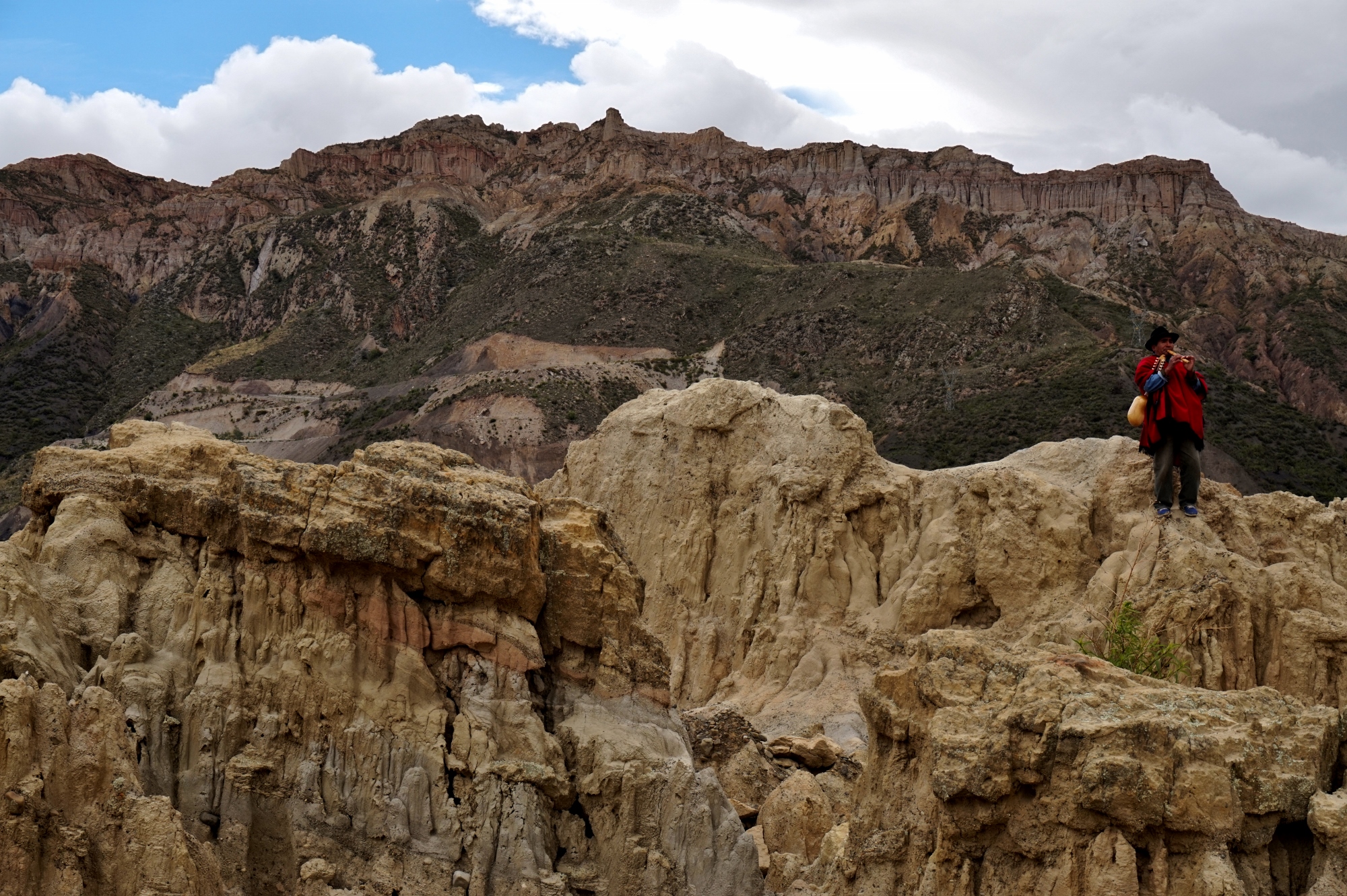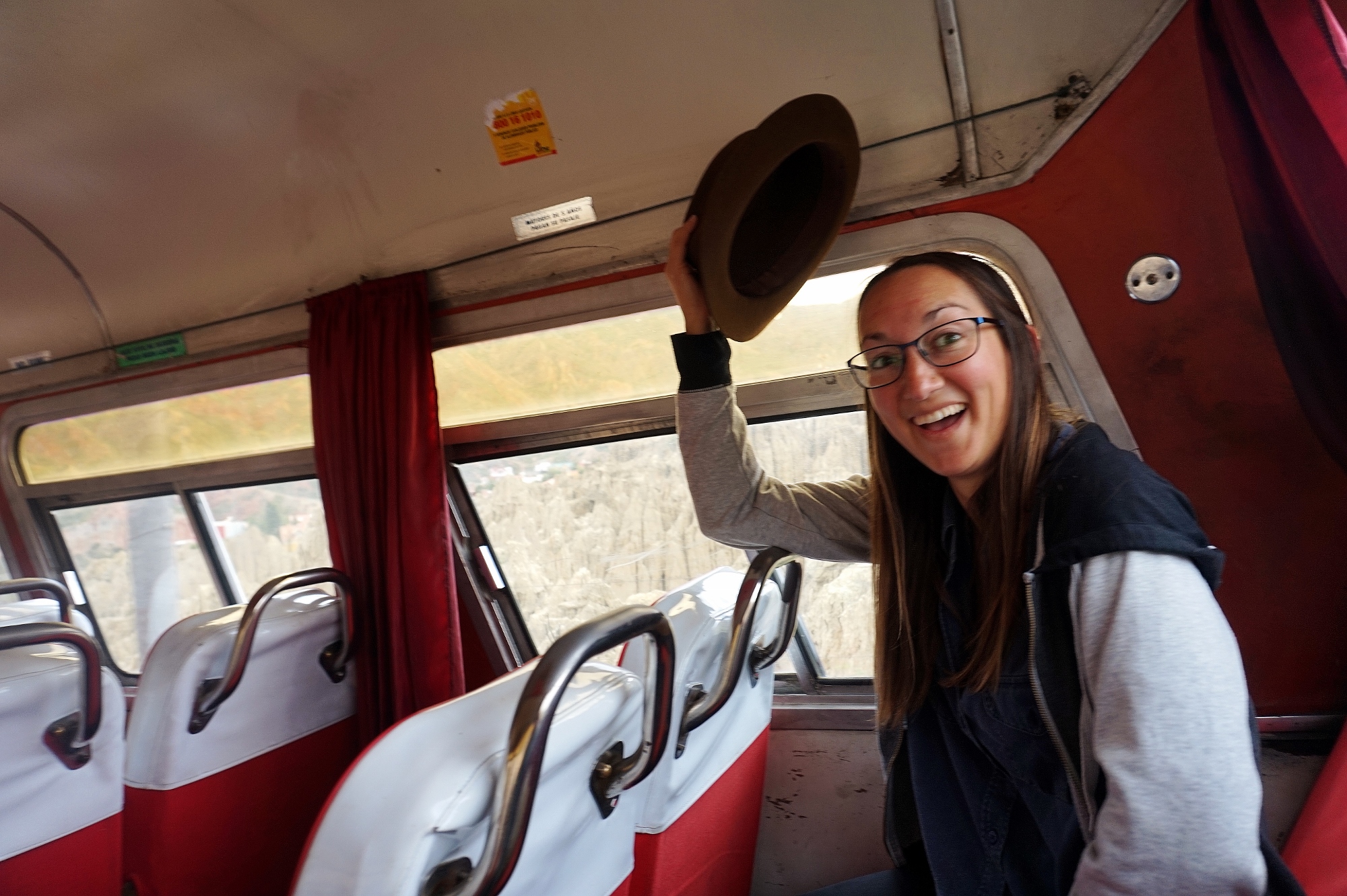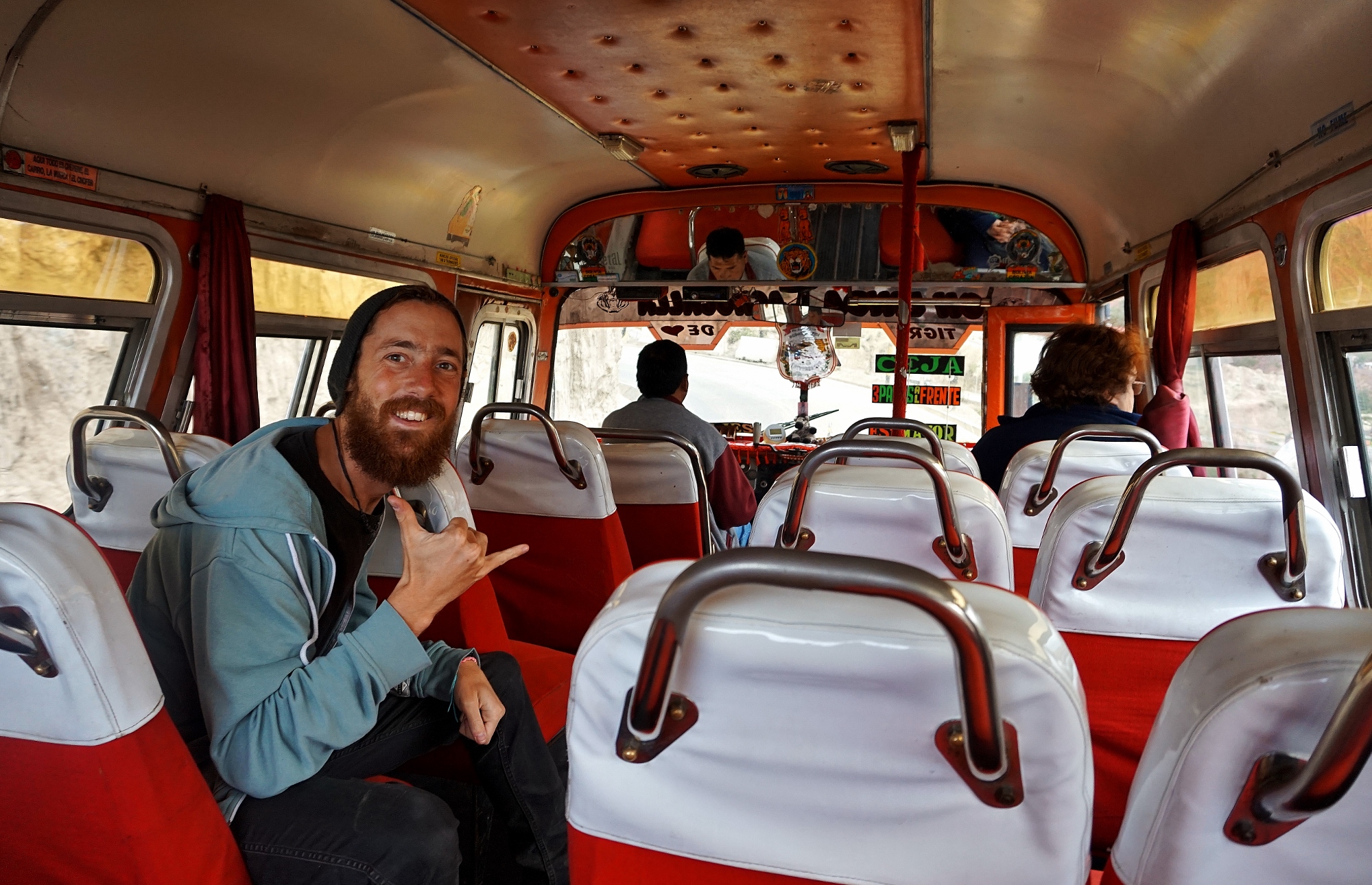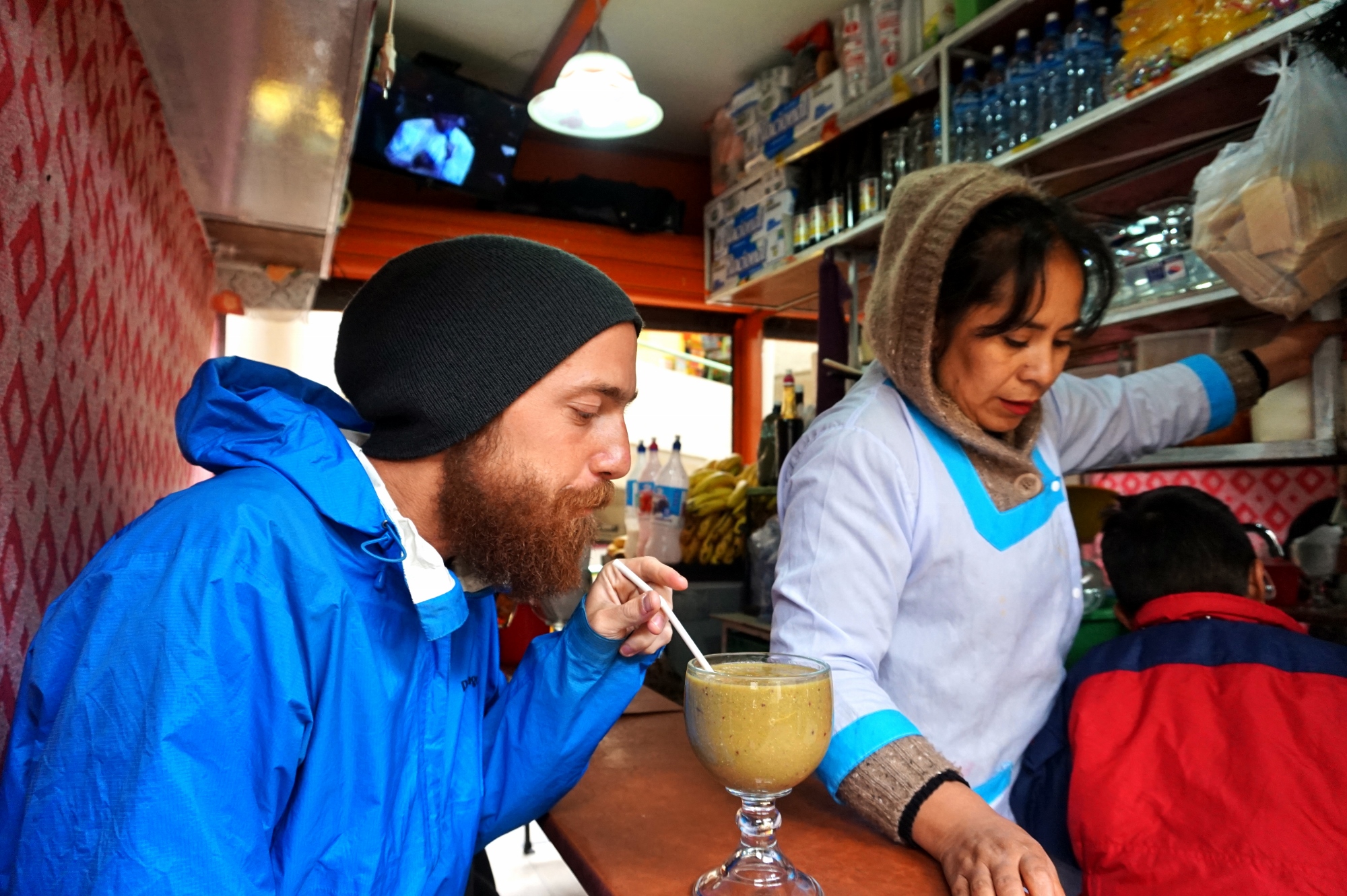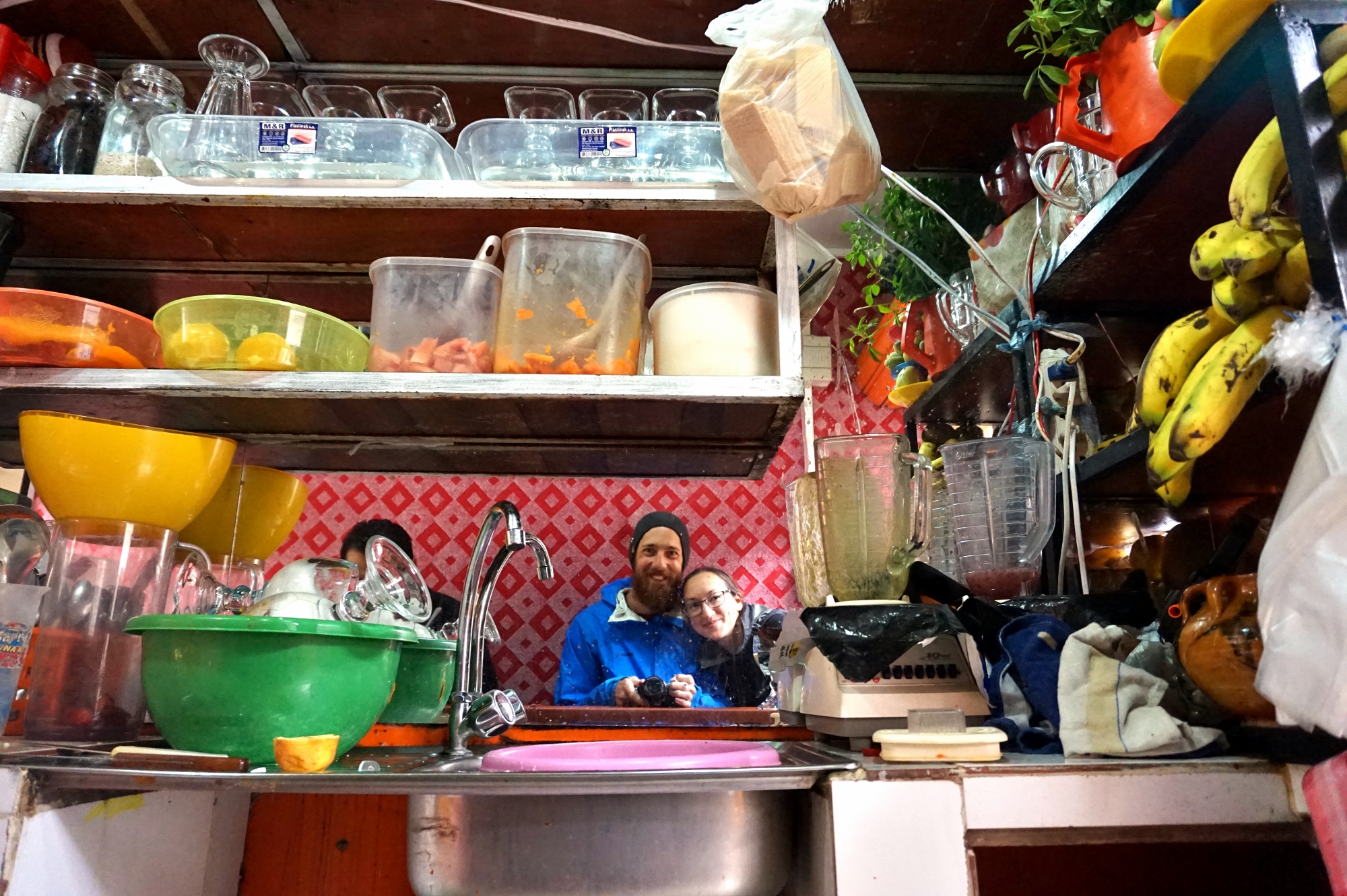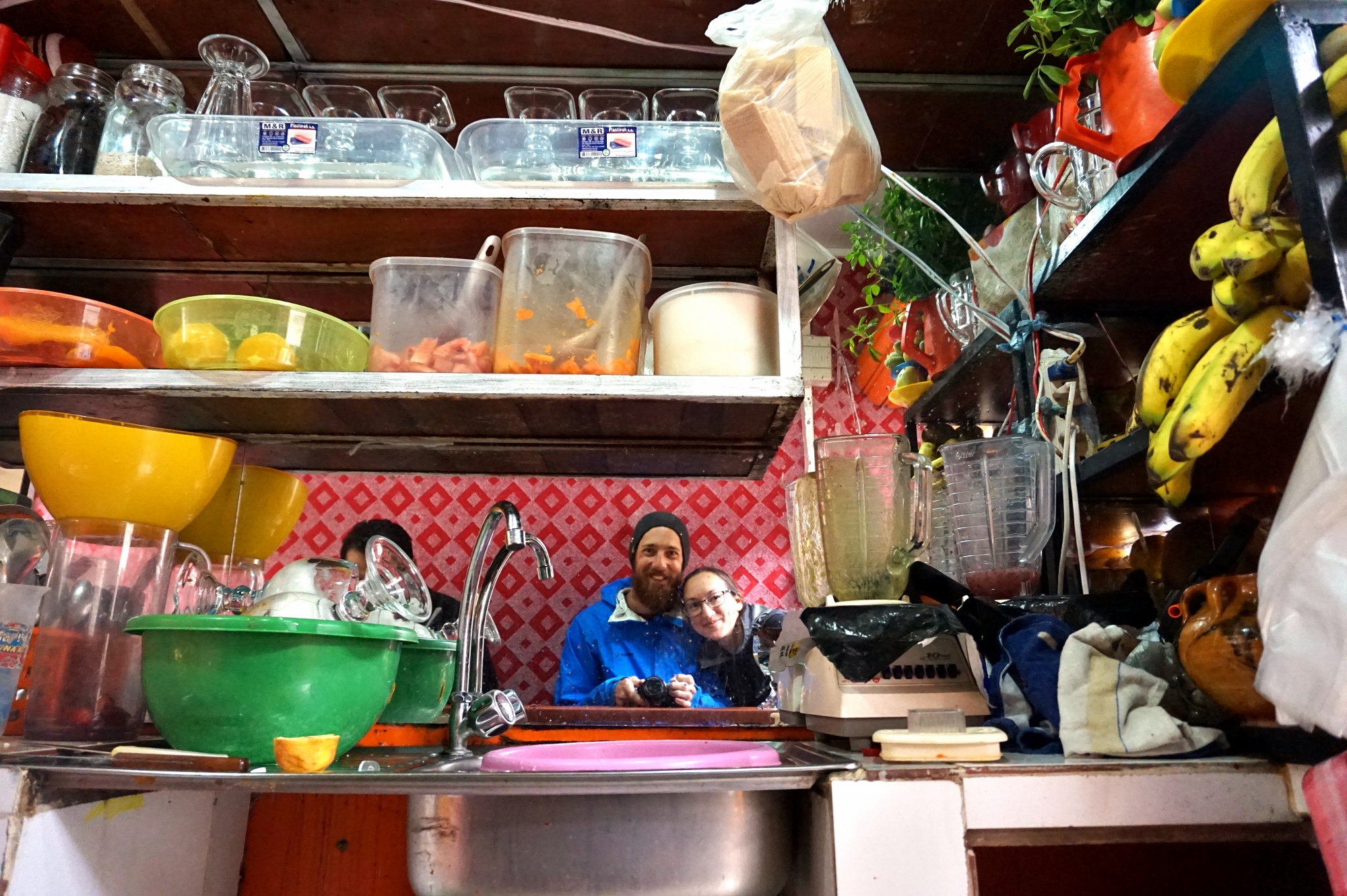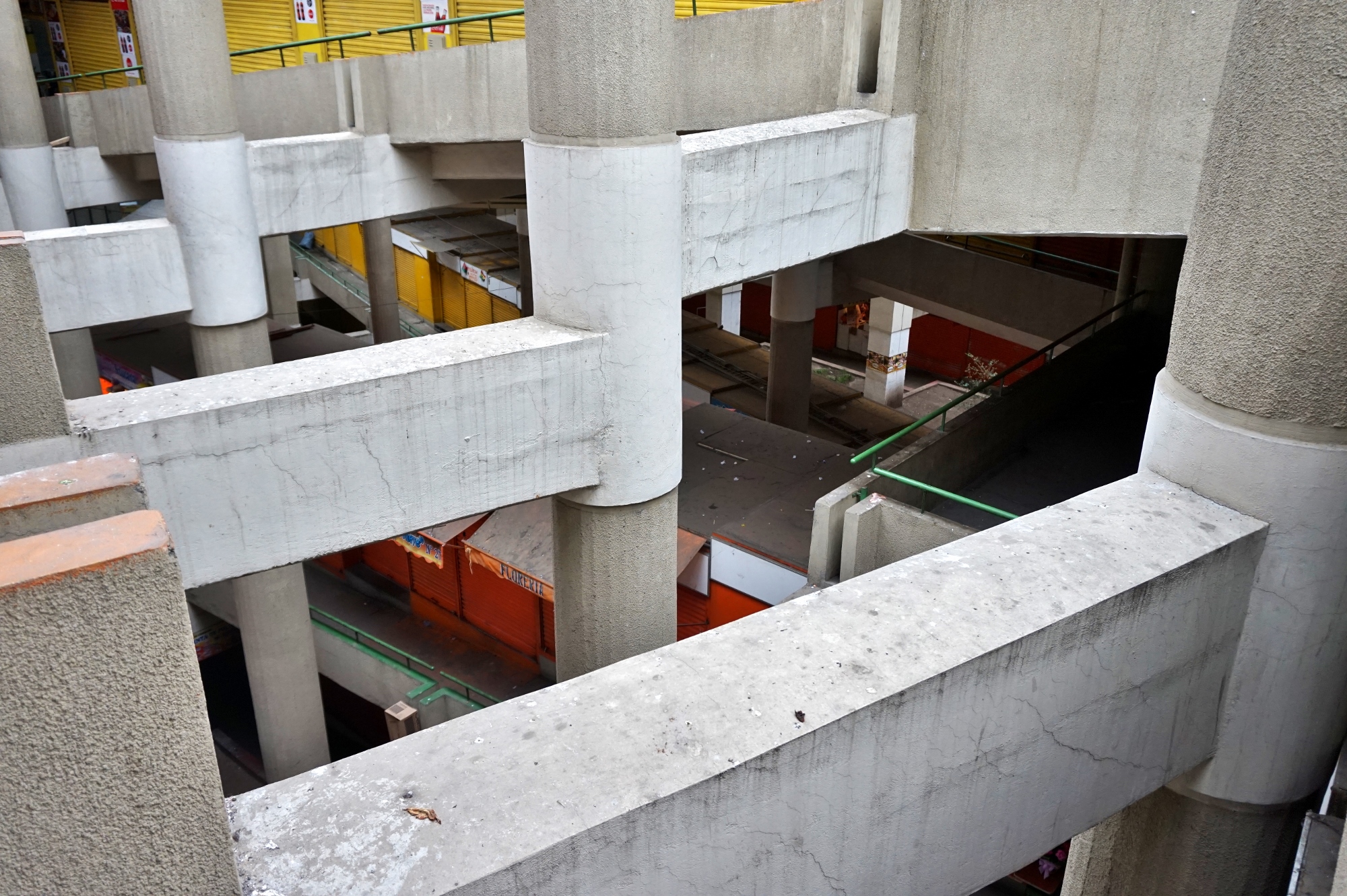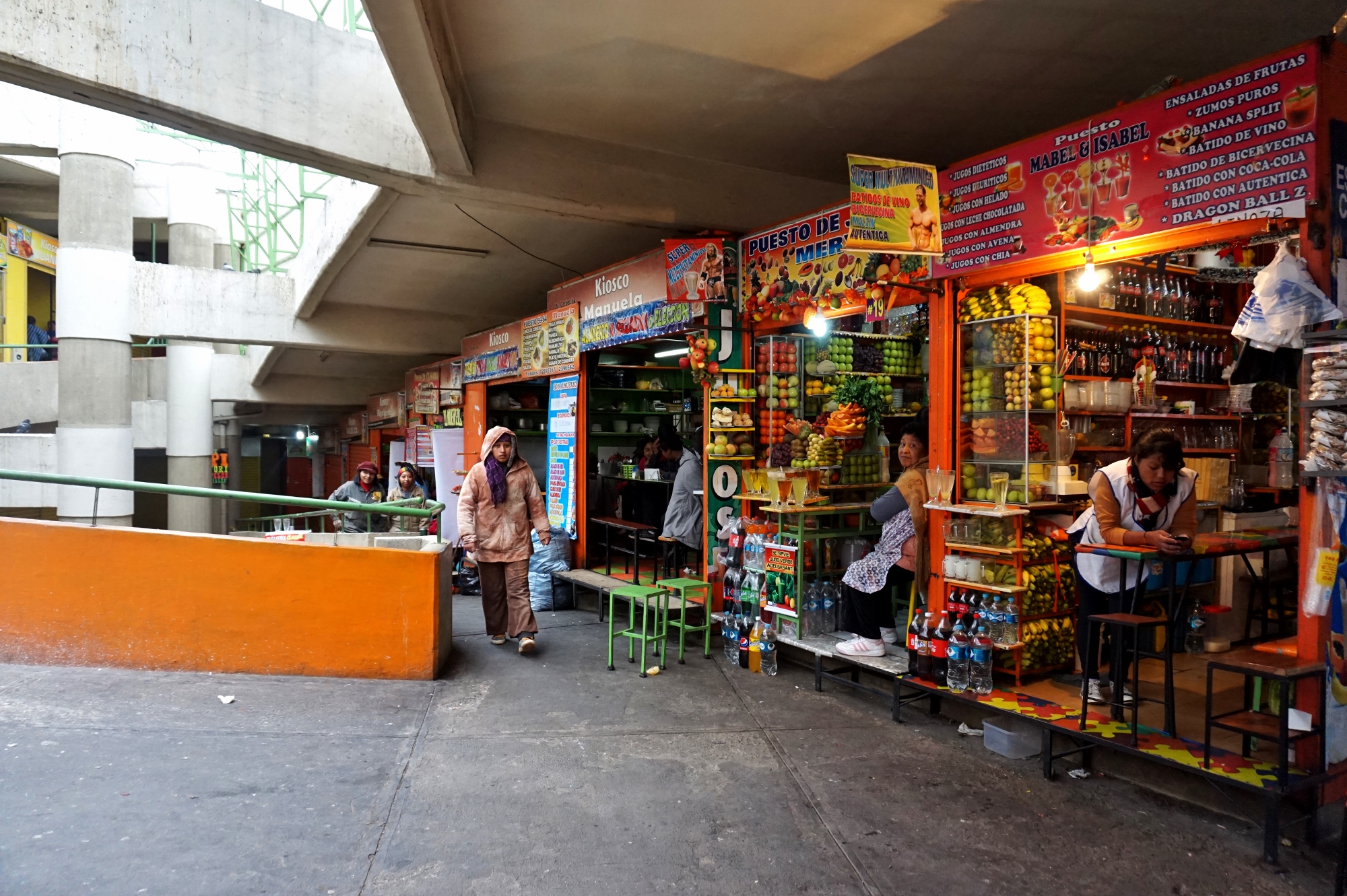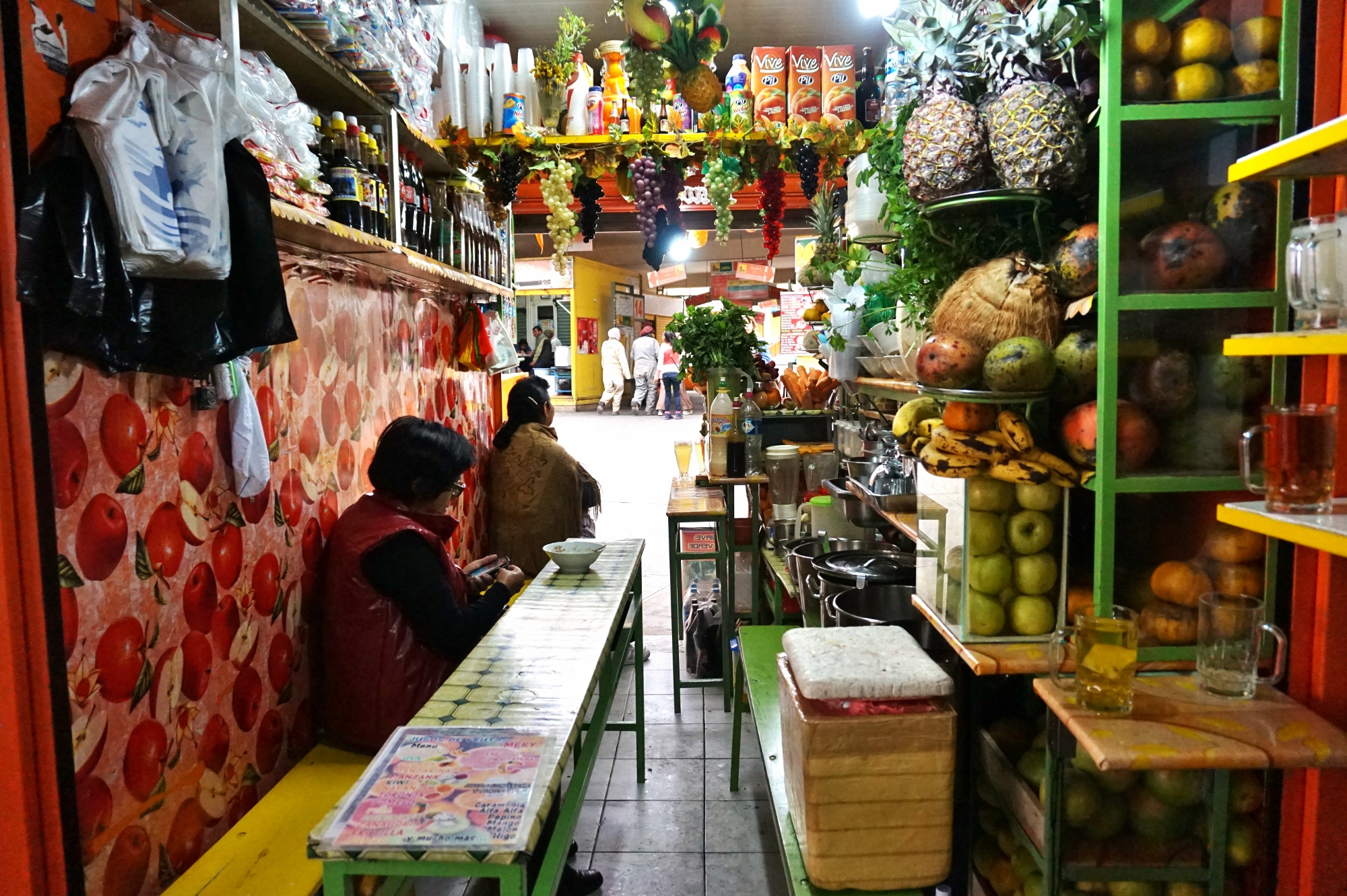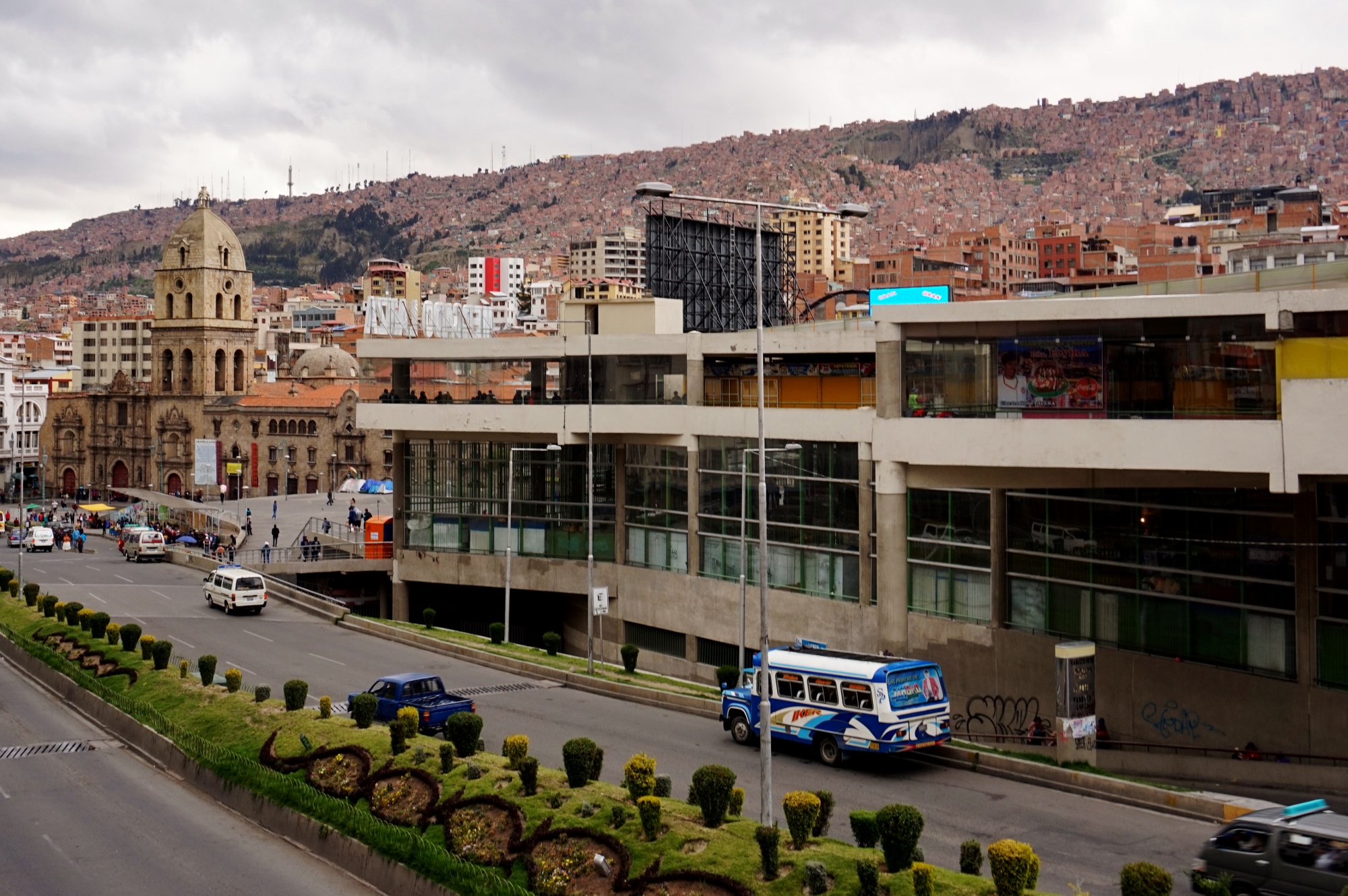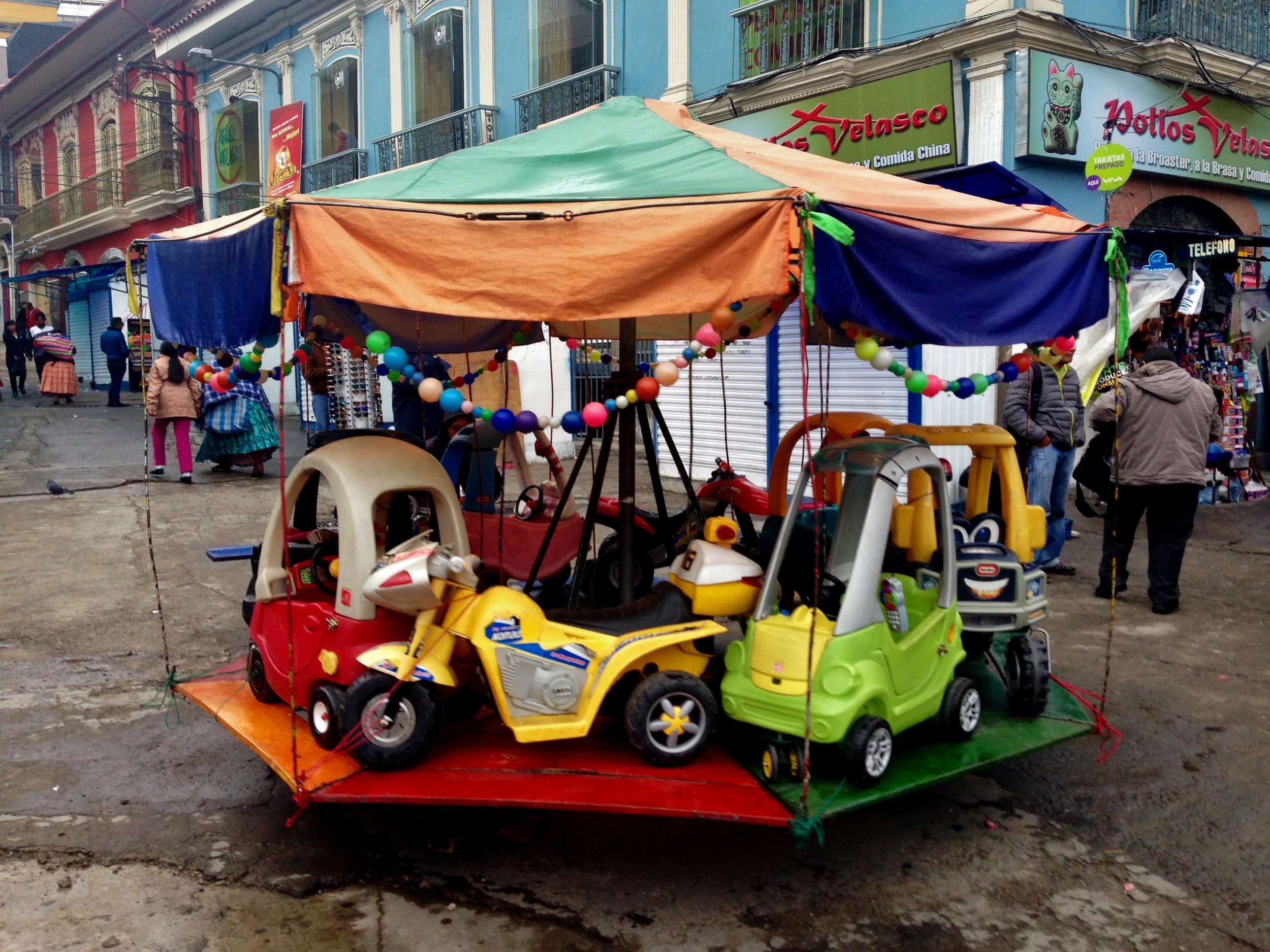LA PAZ

The journey to La Paz was not to bad. After following the south western shore of Lake Titicaca for what seemed like forever, we eventually crossed a fairly relaxed border and added our fifteenth country to the list. We passed a giant 3D red shiny Peru logo as we left the country and were greeted by a rusty lopsided sign that behind all the rust read Bienvenidos a Bolivia.
Copacabana
Fifteen minutes from the border is the town of Copacabana on the southern shore of the lake. Being the weekend it was full of families enjoying a stretch of shore that resembled a beach. The shallows were full of pedalos and a speed boat was giving banana boat rides. The sun was out and kids were covered in ice cream, it was like a landlocked Newquay, 3800 meters above sea level. A lot of people arrive here and head straight to Isla Del Sol (island of the sun). Having spent a couple of days island hopping on the lake we decided to give this a miss. With an unexpected hour to kill we stretched our legs a bit and explored this little town.
After about 30 minutes or so on the bus we rounded a steep hill revealing dozens and dozens of flat bottomed barges filling much of the lake below. I couldn't think why so many were needed until we reached a small port hidden by the hillside in the tiny village of Tiquina. I looked across the waters to see a coach rocking precariously across the channel perched on one of these unstable barges. As we drew nearer we saw a bloke frantically bailing water out of one. I was suddenly filled with fear, was this how it was all going to end?! We were told to get off the bus and board a smaller boat which ferries people across, we couldn't get off that bus quick enough. The harbour was chaos with trucks, cars, coaches all bobbing about jostling for space to dock. It was fascinating to watch. Eventually our bus made it to the far shore and we were off again, this time hopefully directly to La Paz.
La Paz
La Paz is an incredible site when you first see it, clinging to all available space in a massive valley that plunges 500m or so down. I use the term available space very loosely as some of the neighbourhoods occupied almost vertical hillsides. Buildings were crudely stacked on top of each other like an amateur game of Jenga. In the bottom of the valley in the distance we could see a few clusters of tiny shiny skyscrapers that must be the business district.
To get fully equated with the city in a short time we joined two Red Cap walking tours, one in the morning and one in the afternoon. This is becoming our standard practice for quickly unlocking a new city. Our guide Daniel was ace and full of interesting stories and facts about his home city. Funnily enough he also lived just up road from us in London which came as a surprise.
San Pedro Prison
We started off in San Pedro Plaza home to the San Pedro Prison. This prison is particularly interesting because unlike most others it's run by the inmates and just has a hand full of guards to keep an eye. There are eight different sectors to the prison and each has its own diplomatically elected rep which changes each year. Inside inmates have to pay for everything and if they have no money they need to work (usually for bugger all). It's like a city within a city as entrepreneurial inmates have set up all kinds of businesses from restaurants to hair salons to make money. Coca-Cola has even done a deal with one of the reps to be the prison's sole cola drink making Pepsi harder to get than drugs. You can read more about it here https://en.m.wikipedia.org/wiki/San_Pedro_prison
This brings me on to another interesting fact, apparently the cocaine in Bolivia is some of the purest in the world and in San Pedro Prison it's known as the purest in Bolivia. But how do they get the ingredients in and the product out? Another unusual fact is that not only do the inmates live inside, but do so their families. This would be a terrible upbringing for a child, but on the flip side it'shandy for smuggling.
Another way they smuggled out the product is via airmail. Daniel mentioned he was walking past the prison one day and a dirty nappy landed next to him. He didn't read to much into it until someone quickly brushed past him, picked up the nappy and quickly disappeared. After asking around he found out that the prisoners arrange to throw them from the loose sections of corrugated roof at a pre arranged time to friends below. I wondered if the nappy effected the pureness?
Until fairly recently you could take a tour of the prison. Whilst an English backpacker called Thomas McFadden was serving his time for smuggling cocaine he used to take tourists as he had a 'good relationship' with the guards (e.g. He paid the, the right price). It all started when he showed a friend around and had lunch with them in the restaurants and they stayed over in his cell. Word spread and soon the prison was on the tourists map, it also gave the inmates easy access to customers for their cocaine industry. These tours even made an appearance in the Lonely Planet travel guides and a coupe of our friends went on one back in the day. You can read Thomas's book called Marching Powder published in 2003 to hear his story. All tours have now been banned by the government due to many tourists getting robbed and even worse stabbed. You can still do unofficial tours today which usually involves a local bribing the guards at the entrance and showing you around. Unfortunately on one such tour a guide disappeared and was never seen again leaving a British backpacker alone inside. When he went to the guards to explain his situation to get let out the shift had changed and the new guard said tours were banned and assumed he was making up a story to escape. This poor lad was trapped inside for hours trying to contact the British Embassy. He did eventually get out.
Rodriguez Market
A few streets away is the vibrant Rodriguez Market which spills out of its original market building into the many bustling surrounding streets. Almost all the stalls are run by Ayamara and Quechua (Two big indigenous groups) Chilotas proudly wearing their traditional attire. With pristine top hats, puffy skirts and long plated hair (Meaning wisdom) it is as though they have stepped out of the 1920s. Cholitas used to be heavily discriminated against in Bolivia, however these days the Cholitas have gone from being maids of the middle class to fashion icons, economists and politicians. Their unmissable outfits are the Bolivian interpretation of the colonial Spanish fashion back in the day. Their crowning feature is a small brown top hat similar to what we saw in Cusco although the story of their origin differs slightly in La Paz. The story goes a local entrepreneur noticed the British railway workers wearing black top-hats, so ordered a large shipment from Italy. Unfortunately the entire order was brown not black and far too small rendering the entire shipment useless. In a desperate attempt to rid himself of the hats our entrepreneur managed to convince a few of the local Cholitas that wearing a small brown hat atop of ones head was a big fashion in back in England. (It wasn't) They bought the story and a load of hats. It now has been adopted and is a much loved part of a Cholita's wardrobe. Many of the stalls in each street sell pretty much the same stuff and are all run by Cholitas. This is because each Cholita will have very loyal customers who will shop with them regularly for years. If you visit the same stall enough to strike up a friendship and a bond she becomes your 'casara'. If you are loyal she will be your 'casara' for life and will be waiting for you in the same spot every day. Daniel our guide shops at his mothers casara and has known her since he was a child. Don't think they are just simple fruit and veg sellers though. Many run the family businesses and are often involved with product exports and imports as well as many other local businesses. Apparently you can tell a successful Cholita by her golden grin.
Witches market
After a visit to a normal market we next visited a slightly more abnormal market know as the Witches market. The market actually serve a very important purpose for the local people, many of whom are very superstitious. Mysterious lotions and potions are stacked up in all available space, small collections of odd items smoulder in little metal trays as ceremonial offerings and Llama foetuses hang across the tops of the stalls like creepy children's toys. Apparently the Llamas are buried in the foundations of new buildings as an offering to PachaMama to bring good fortune. We were assured they are all miscarriages or still born, as killing a Llama for an offering would make the offering impure. Daniel went on to explain that the bigger the building the bigger the offering. For example a tower block needed much more than a Llama... a human. Most offerings of this size are supposed to be carried out by a Yatiri a sort of medical practitioner / healer in the Ayamara culture. You could write a book on who these mysterious folk are and how you become one (apparently being struck by lighting plays a part) but for now just accept they kind of like a special Aymara shamans. When building a large building traditionally you would call a Yaritiri to help with the offering. Your Yatiri would search the watering holes of the poorer areas looking for a hopeless drunk with no family. After ploughing the victim with alcohol they will be taken to a construction site and added to the foundations as part of a ceremonial offering. Daniel believed this still happens as they often find human remains in the foundations of demolished buildings. This is all speculation of course. He went on to say that a bridge needs a standing person in each pillar, reminding me of a rumour about Birmingham's spaghetti junction. We left the market fairly sharpish and decided against a lunch time beer.
San Francisco Cathedral
Our next stop was San Francisco Cathedral. It was built with the sole purpose of catholocising the indigenous population. The crafty Spanish installed mirrors everywhere in the church and invited the Ayamara and Quechua people in to have a look. They told them that their souls had been trapped in the mirrors and to get them back, they must return every day and pray to god. Having never seen their reflection in a mirror before the locals bought it and started regularly visiting church. Sneaky, but better than butchering them like in a lot of Latin America.
Crazy presidents
In the early afternoon after a shot of some sharp local liquor, Daniel told us a few stories about the countries turbulent politics. In 200 years Bolivia has had over 180 leaders, mostly corrupt. One particularly bad president called Mariano Melgarejo caused Bolivia to loose a vast chunk of land after falling in love with the Brazilian minister's beautiful white horse. On an official visit the Brazilian minister told Mariano that his horse was not for sale. Undeterred Mariano traced around one of the horses hoof on a Bolivian map and offered it to the Minister. It was a no brainier and lead to Brazil gaining a vast area of land known as Acre and Bolivia gaining a beautiful white horse.
Bolivia also used to have a section of Pacific coast line in between Peru and Chile. It was home to a massive colony of sea birds who's guano (excrement) was like gold dust. It was used for fertiliser and was a major ingredient in the production of explosives which fetched a high price abroad. Chile was one of the biggest buyers and in a shortsighted attempt to cash in Mariano introduced a large tax on the bird shit. The boarders were already in dispute, so Chile decided to invade to safeguard the Guano supply and take the land for themselves. This was the start of the war of the Pacific which left Bolivia landlocked and poor.
Cementerio General
In the afternoon we visited the Cementerio General de La Paz, home to 200,000 ex people. Similar to Punta Arenas, graves are stacked on top of each other like little apartment blocks each with a little decorated window. Most windows contained objects and trinkets that the person would have enjoyed when they were alive. Funnily enough many windows contained booze and cigarettes, two things that probably lead to them renting a room here. Many Bolivians believe that after a person passes on they remain with them for five years. People often rent graves in the cemetery for this amount of time. After five years has passed you are supposed to let them go and to stop visiting, as it's believed you will hold them back from their new life. Families usually stop paying the rent after this time and the grave will be served an eviction notice. We saw a couple stuck to the little windows. If the family continues not to pay the body is put in a common grave and the spot becomes vacant.
Another weird fact is that the skull is removed before the body is put in the common grave. These are referred to as natitas. They are 'adopted' by families who look after them and decorate them to bring good fortune. They will often occupy the pride of place in their adopted families home. Kind of like having a pet skull. An important note is that the adopted skulls are not the ones of the families relatives as this would be seen as holding them back. Apparently roughly 40% of Bolivians believe in this custom and have a natita in their home.
Shiney shoes
La Paz is the city of shiney shoes. Shoe-shine boys are on almost every corner and are often very busy. They are part of the fabric of the city and Daniel assured us they are really cool guys. They are quite intimidating to look at because they cover their faces in scarves and balaclavas. I thought this was due to the fumes of the polish, but apparently it is believed by many that the feet are the most unclean part of the body and covering their face hides them from shame.
Teleferico
It would be hard to put a train line in this steep valley and going under it would be even harder so the president decided to go over it instead. La Paz in recent years has installed a number of cable car systems connecting the city of El Alto at the top of the valley and other high up areas with the city centre in the bottom of the valley. This has given the people form poorer areas outside the city opportunities in the centre. Not only are they good for the people they are good for the planet too as each car has a solar panel on the roof. It has become an attraction in its own right as the view gliding over the terracotta roofed valley is incredible. You can see the entire city in the valley framed by distant snowy mountains rising up in the distance.
El Alto Market
We took the red line up to Bolivia's newest and one of its highest cities El Alto for a look round its famous Sunday market. It's the biggest in South America and probably the most dodgey. It's roughly 5km square and sells everything from clothes and food to car parts and tropical animals. It's quite a dangerous area for a gringo and I'm glad we had a local showing us around. Just outside the market is another witches market five times the size of the one down in La Paz. A key part of their magical business is to provide advice and offerings for PachaMama (MotherEarth - A goddess revered by the indigenous people of the Andes). These often involve burning a number of items on small BBQs which lined the street outside their little stalls. We were warned not to take photos of the stall owners / witches so as to avoid a Bolivian curse. I was surprised how superstitious the population must be to keep this number of stalls in business. According to Daniel many people will visit their witch regularly to ask questions and get their fortune read in coca leaves before making big decisions.
Whilst walking the streets of El Alto we noticed life sized human manikins, similar to Guy Faulks strung up on many of the lampposts around the streets. El Alto is a very poor city and has a very high crime rate. Due to the police being underpaid and the high crime rate they usually turn a blind eye to El Alto, causing the local population to take the law into their own hands. Thieves caught by the local law enforcement have been known to beat up and even burn alive criminals. The manikins are an eerie warning to the masses.
Cholita Wrestling
Our last stop on the city tour was quite unexpected and unlike anything I have seen or probably will see. El Alto is home to a fast growing new sport called Cholita Wrestling. It is as odd as it sounds...Cholitas in their shawls and big layered skirts throw each other around a wrestling ring with all the theatrics and drama of WWF in the States or Mexicos Lucho Libre. Imagine Hulk Hogan in a skirt with plaits and you kind of get the picture. Granted it wasn't the most authentic Bolivian experience, but how could you not enjoy a big Bolivian lady dropkicking another with skirts and plaits flying in all directions. I'll definitely think twice before bargaining too hard with a Cholita in the markets from now on.
Dinner with Maria
Whilst in Lima staying with Diego's family we met his aunt Maria. She lives in La Paz and kindly said if we came through we should get in touch. She lives on the complete other side of the city in a much nicer part of town than where we were staying. Luckily for us this meant we could take another cable car ride over the entire city. By chance this happens at sunset and is by far the best city view we have ever had.
Maria picked us up from the cable car station and soon we were at her lovely house with her daughter and grandson who were also at the New years party. He still believed he was Spiderman. It was great to see them again. Maria had prepared Suave de Pollo a traditional dish, it tasted amazing and was great to have a home cooked meal. We chatted about our trip and they shared some tips about La Paz. It was a lovely evening.
York Vintage hostel
We stayed in a place called York Vintage Hostel Est 2017 (a couple of weeks ago). It was so new they were still finishing parts of it. Luckily the heavy duty work seemed to have been finished. I think we must have been the first to sleep in our massive ensuite room with crisp fresh sheets. It was quite a luxurious place set around a covered colonial courtyard. With breakfast included at £14 a night it was a bargain. When it's fully completed I think the price will double if not triple in price.
One morning we awoke to find streamers strung up all over the courtyard and a film crew setting up lighting and other technical equipment. Suddenly a bunch of people dressed in masks and bright gold tasselly costumes started appearing from all over. It was all rather odd and I almost closed our bedroom door to go back to bed to wait for this weird dream to pass. It was not a dream and with Carnival approaching, a film company had been commissioned to shoot some pre promotional footage to show at the parade. We watched fascinated as the morning unfolded.
Valley de la Luna - Moon Valley
Just on the outskirts of the city about a 40min 25p bus ride south, is the crazy wind sculpted landscape of Valley de la Luna. According to local guides, Valley de la Luna received its name after Neil Armstrong visited the site and remarked how the landscape resembled that of the moon. The jury’s still out as to whether this is fact or fiction. Giant rocky fingers rise up twenty or thirty feet high and at times caverns opened below almost as far. It really felt like we were walking an alien landscape as we wandered through the forest of rocky stacks and valleys. As we left, a little man in a poncho climbed up a rocky spire and started playing a flute which echoed through the hollows. It was eerie, yet atmospheric and cost 1Boliviano (12.5p) to take a picture. Being a model tourist I happily obliged.
Macardo Lanzana
This is our favourite place in La Paz you can eat really great food for bugger all. It's an odd confusing building which is divided up into little cubical restaurants which are grouped together on different avenues and levels such as Fruit juices, Choripan, Sandwich-arias, soups, etc. If you're in town you can get amazing avocado sandwiches for about 50p.
After three and a bit days it was time to move on. We have really enjoyed our time here, and if it was dry season we probably would have stayed longer and embarked on a few adventures just out of town such as the Madidi jungle and Huayna Potosi a 6088m peak. But with regular rainssweeping through turning the dirt roads into rivers and mountains into landslides it wasn't the best time to adventure off the beaten track. We did however have a crack at mountain biking Bolivia's infamous Yungas Road 'Death Road'. Check out H's next post for how that went.

